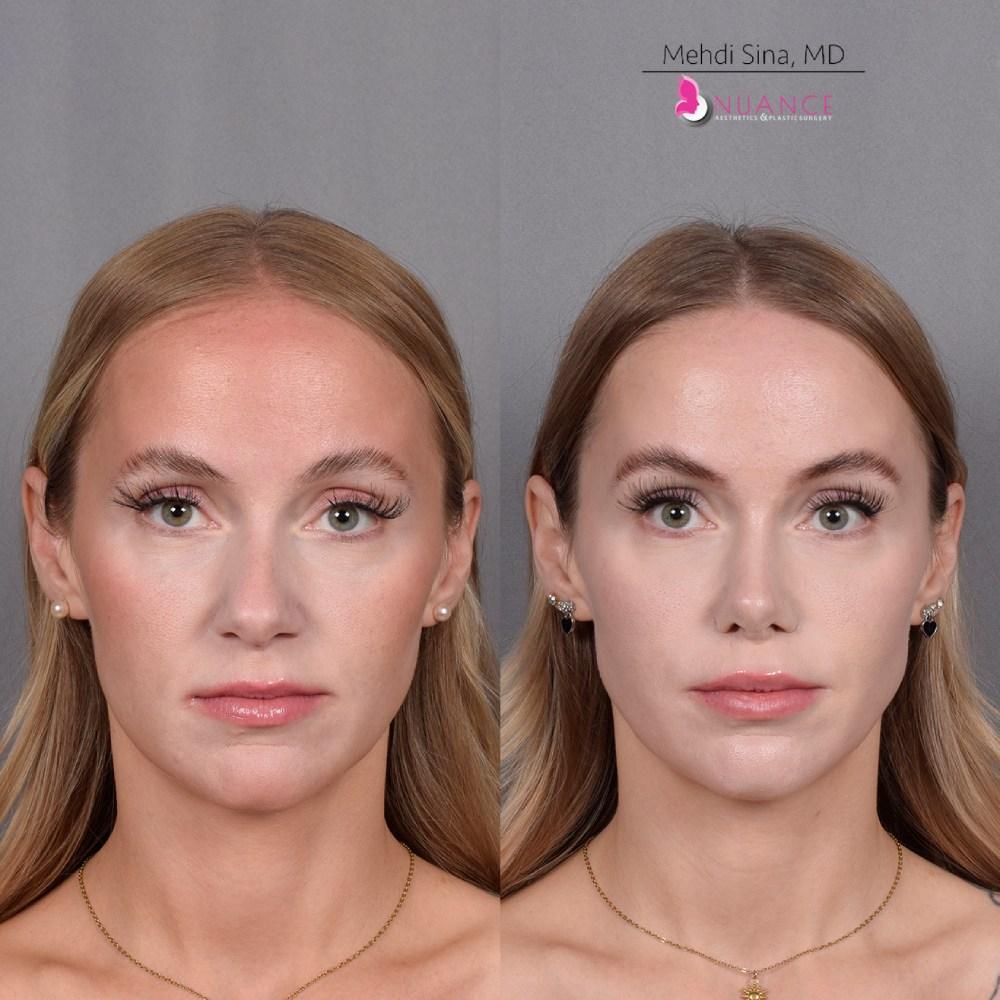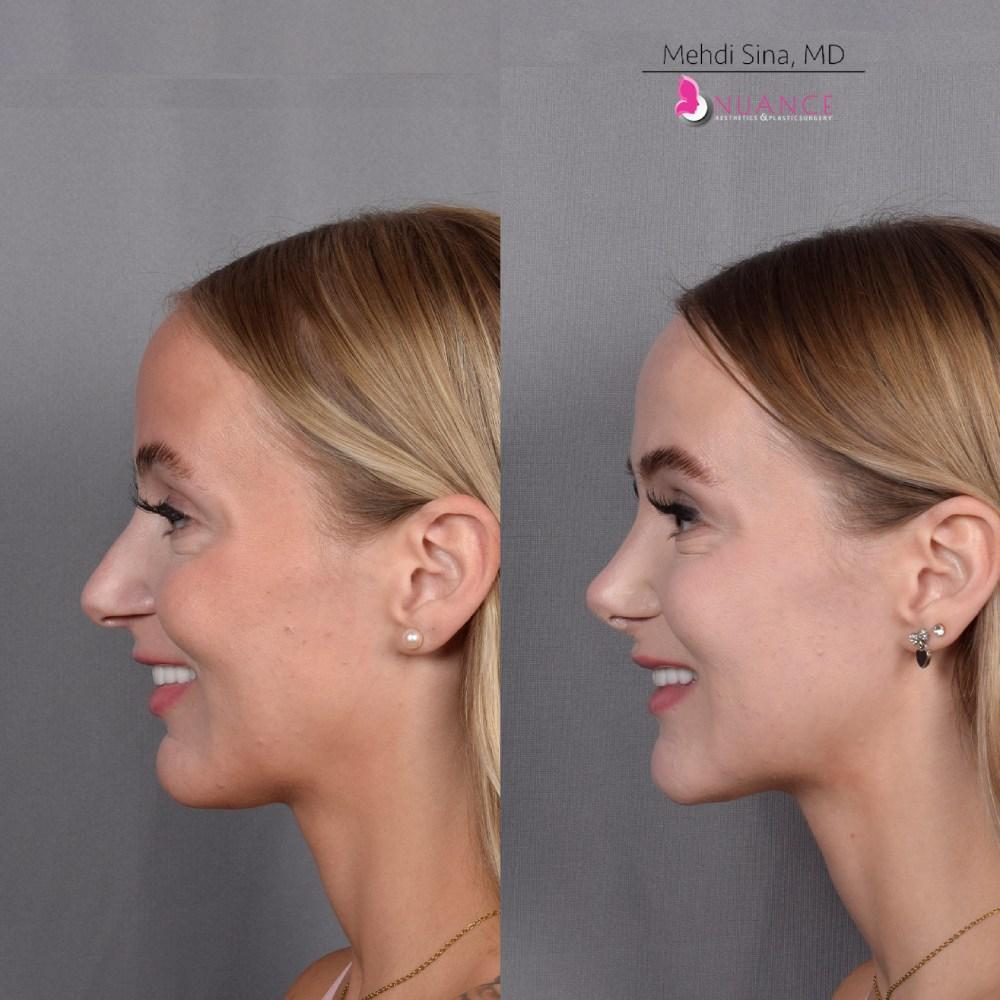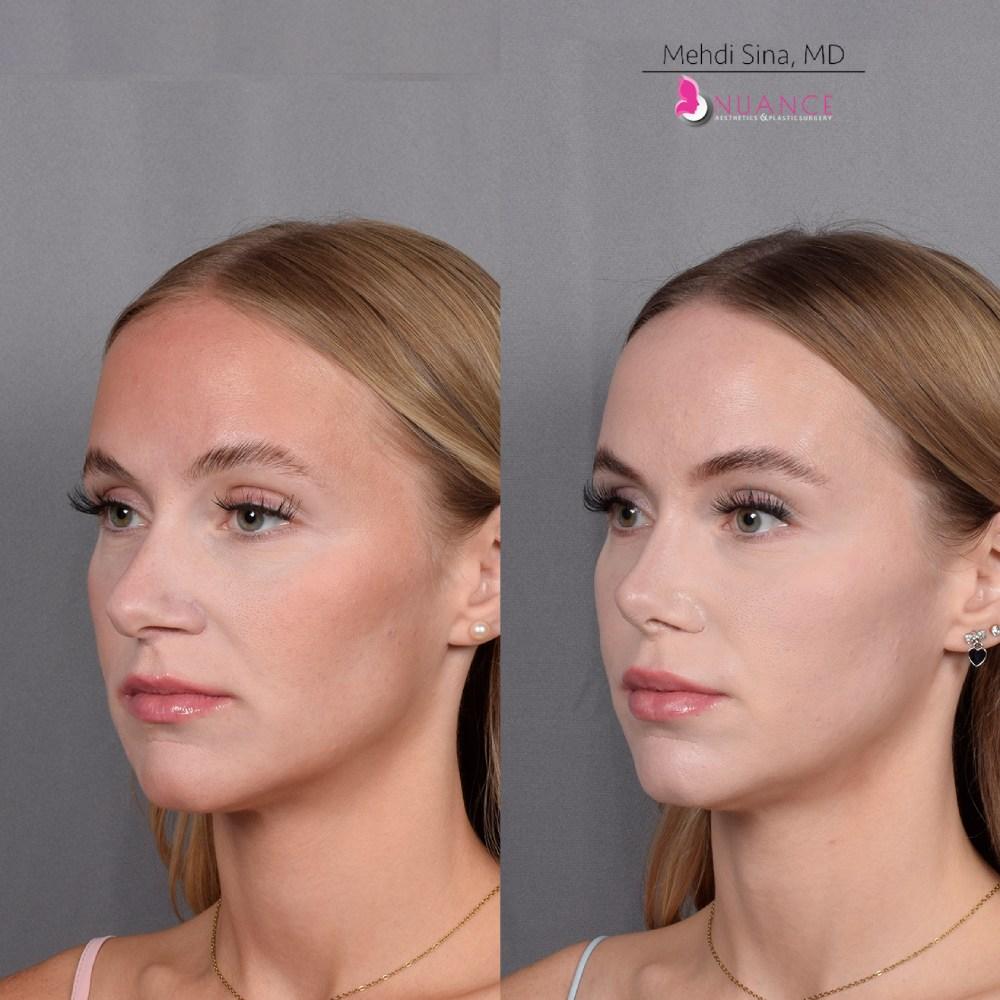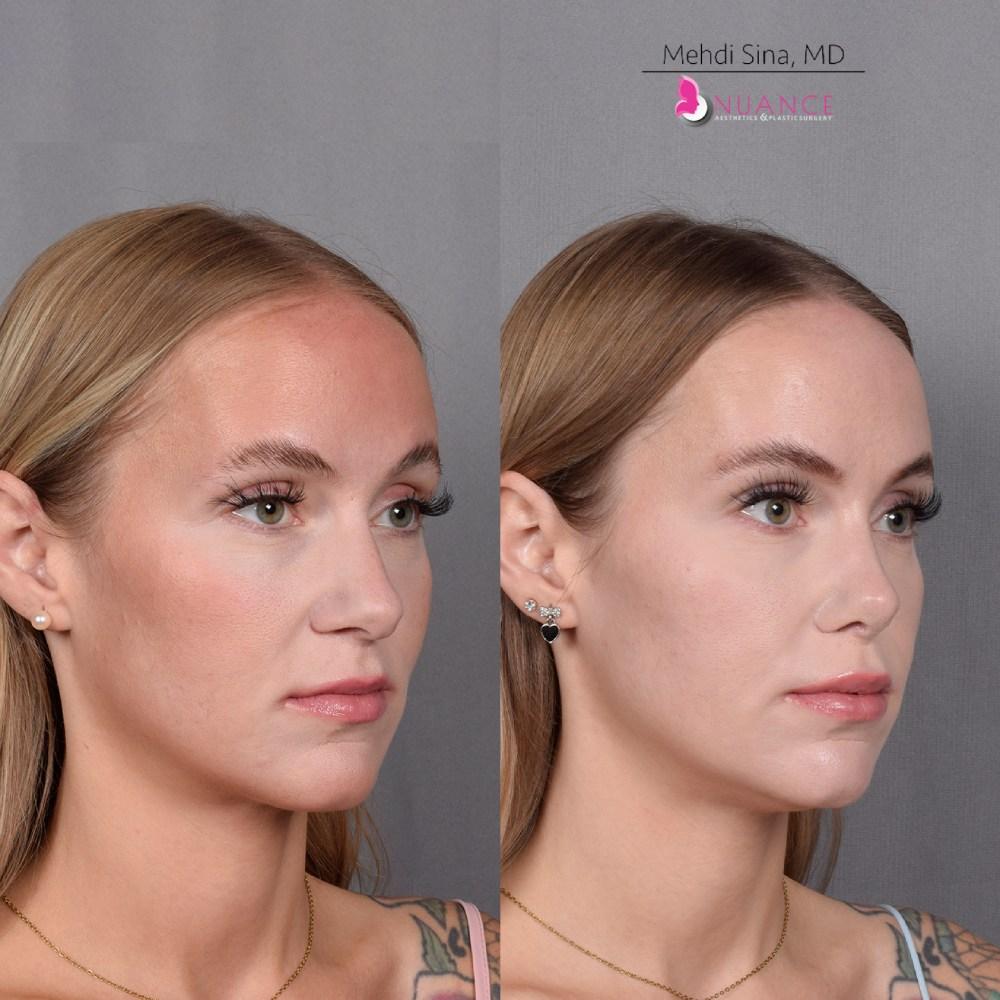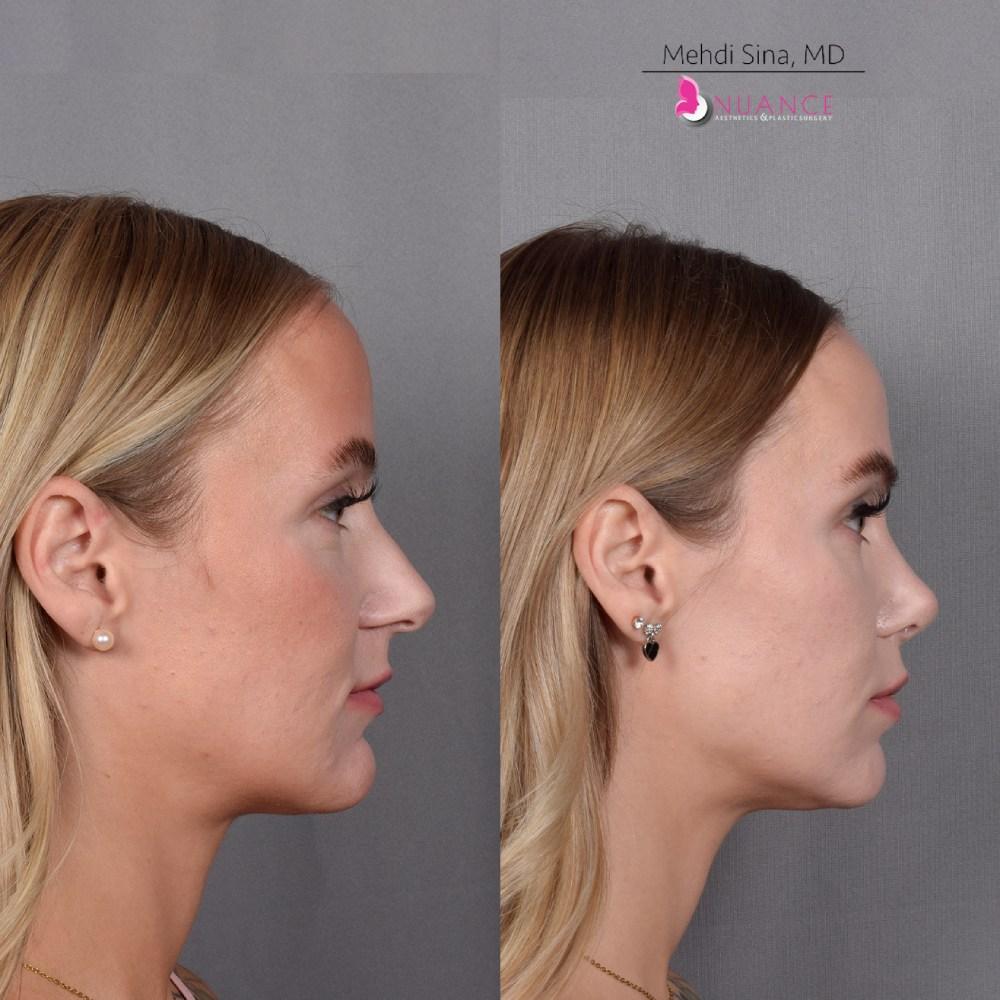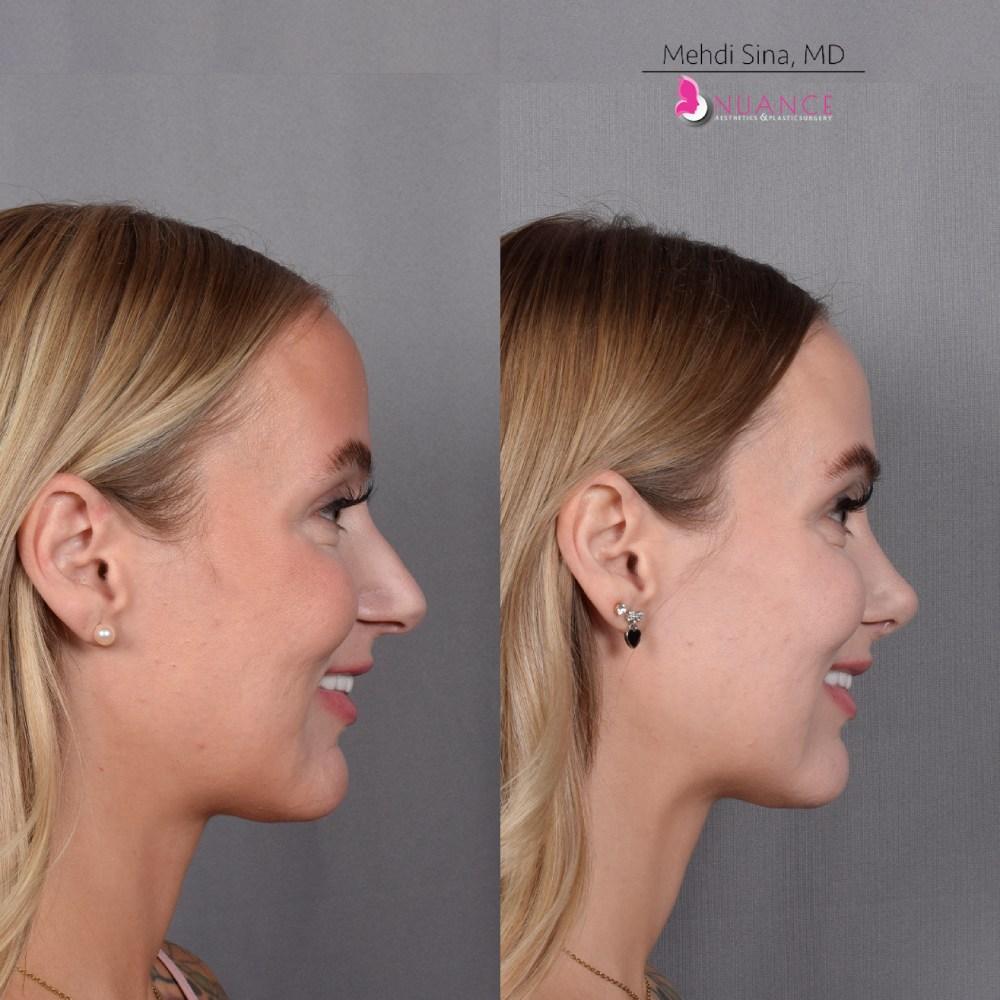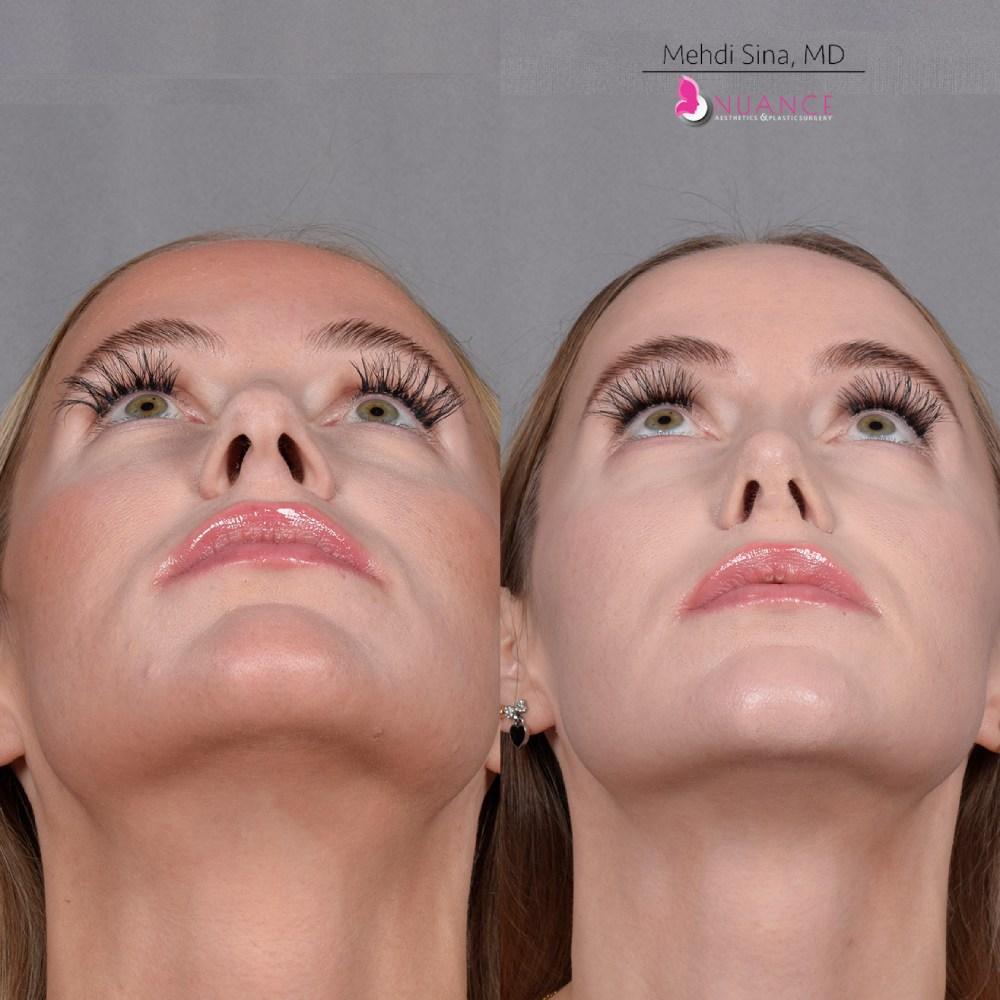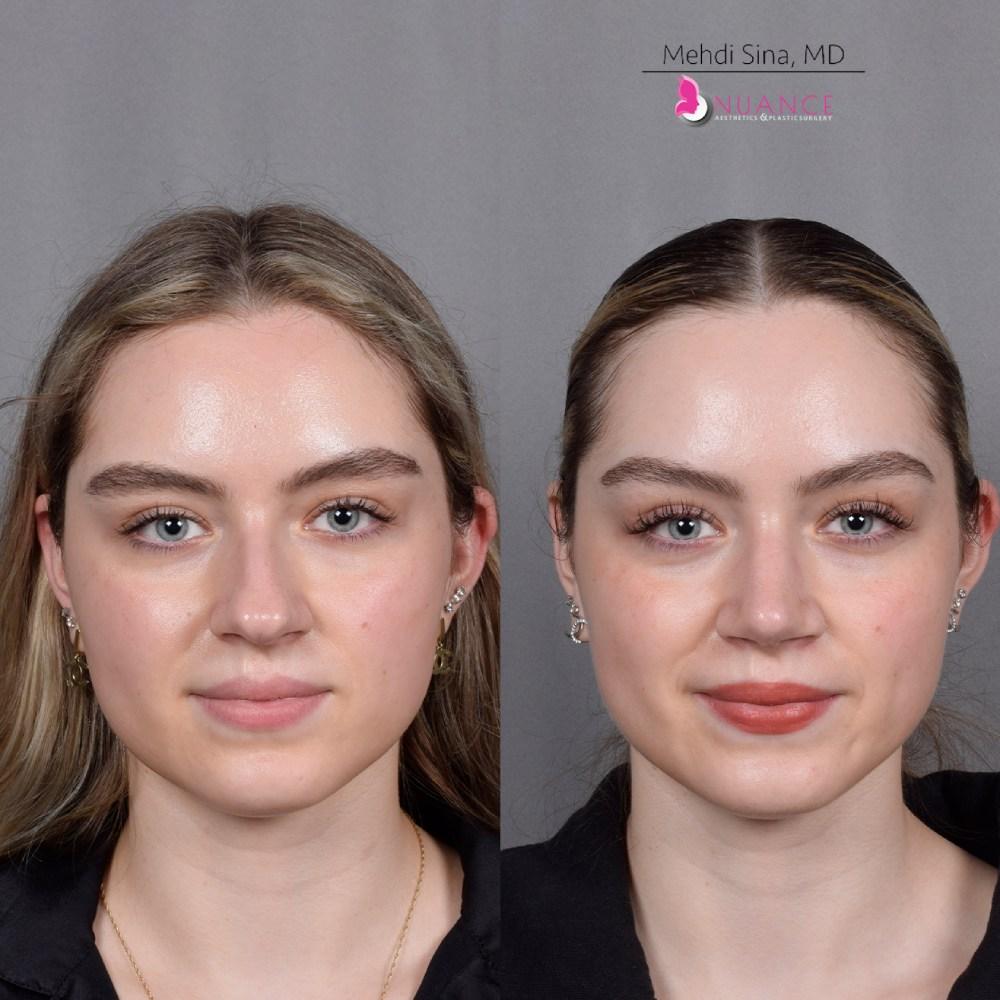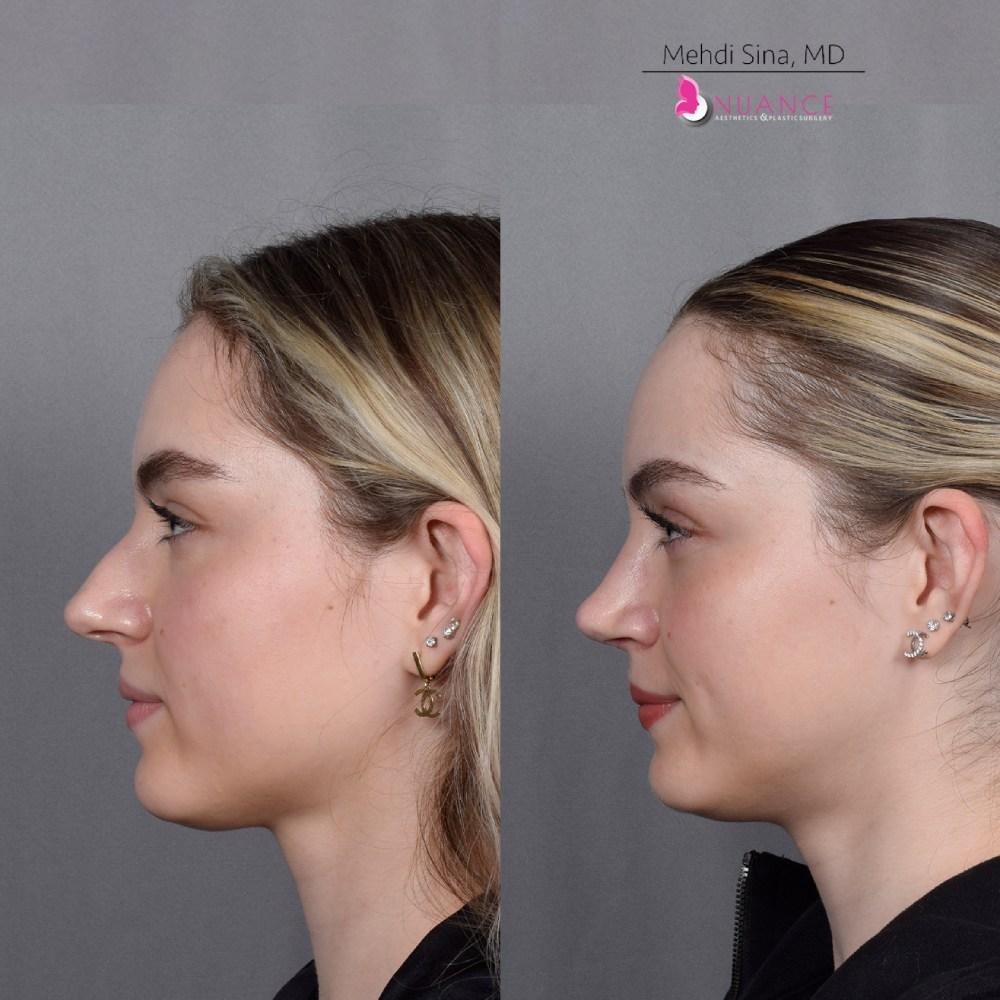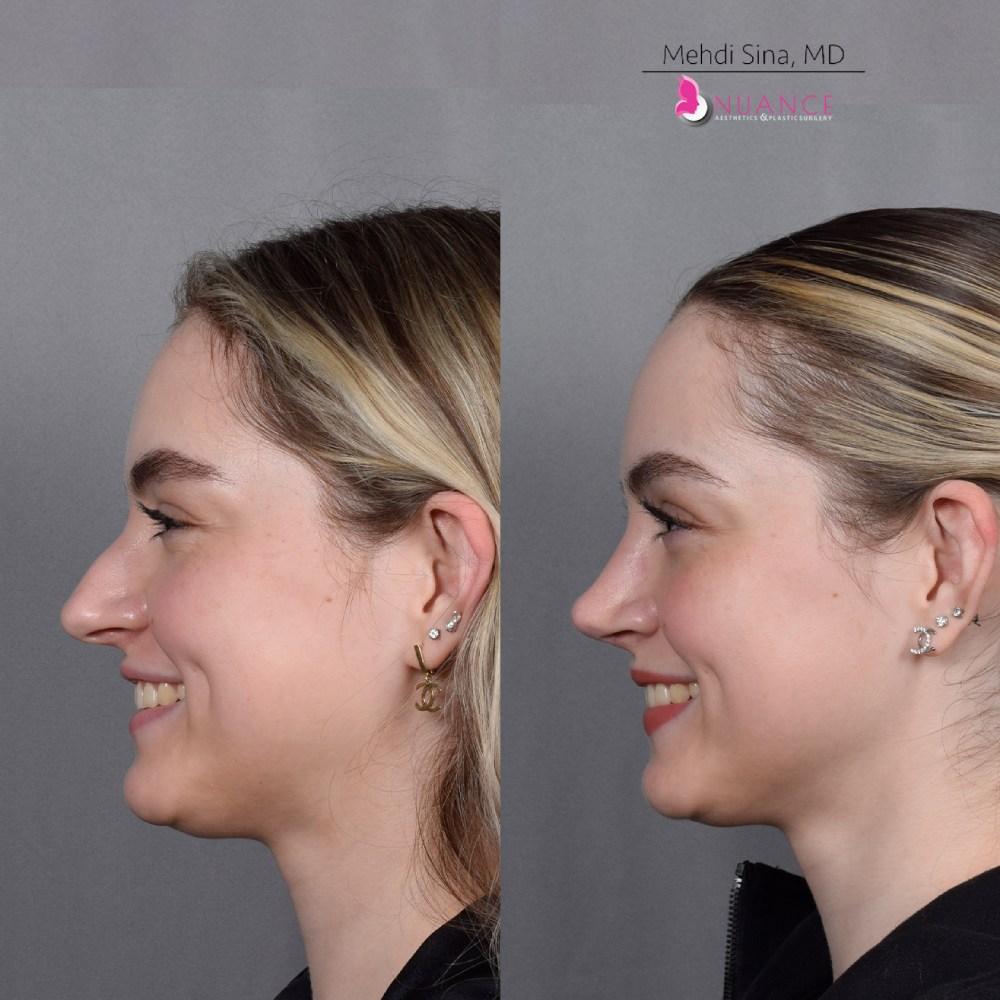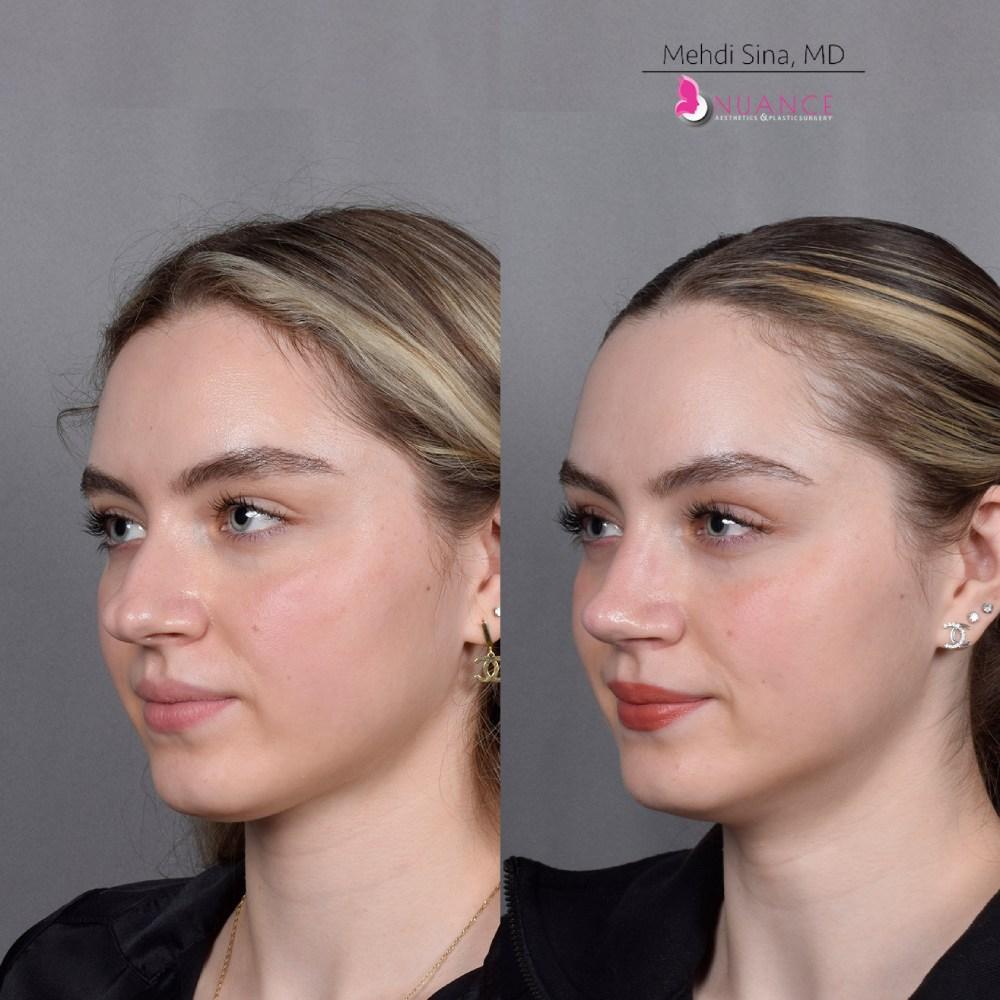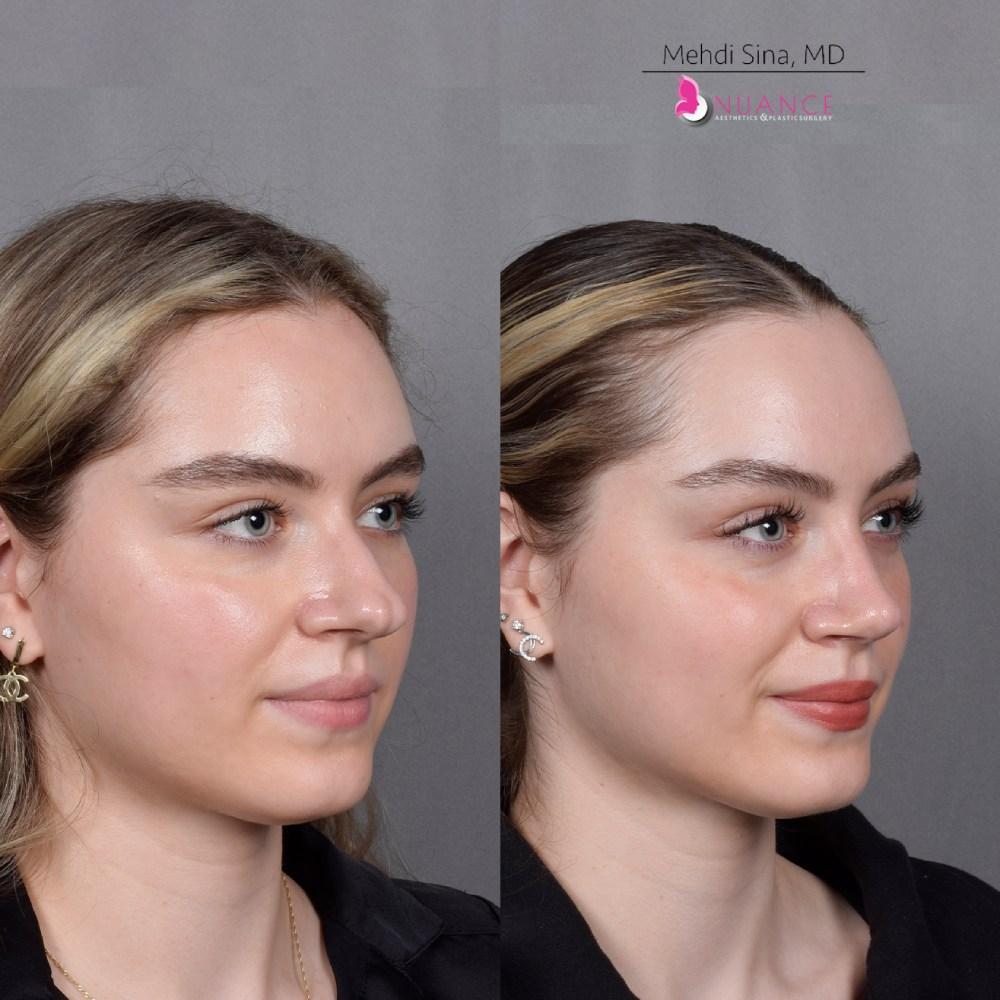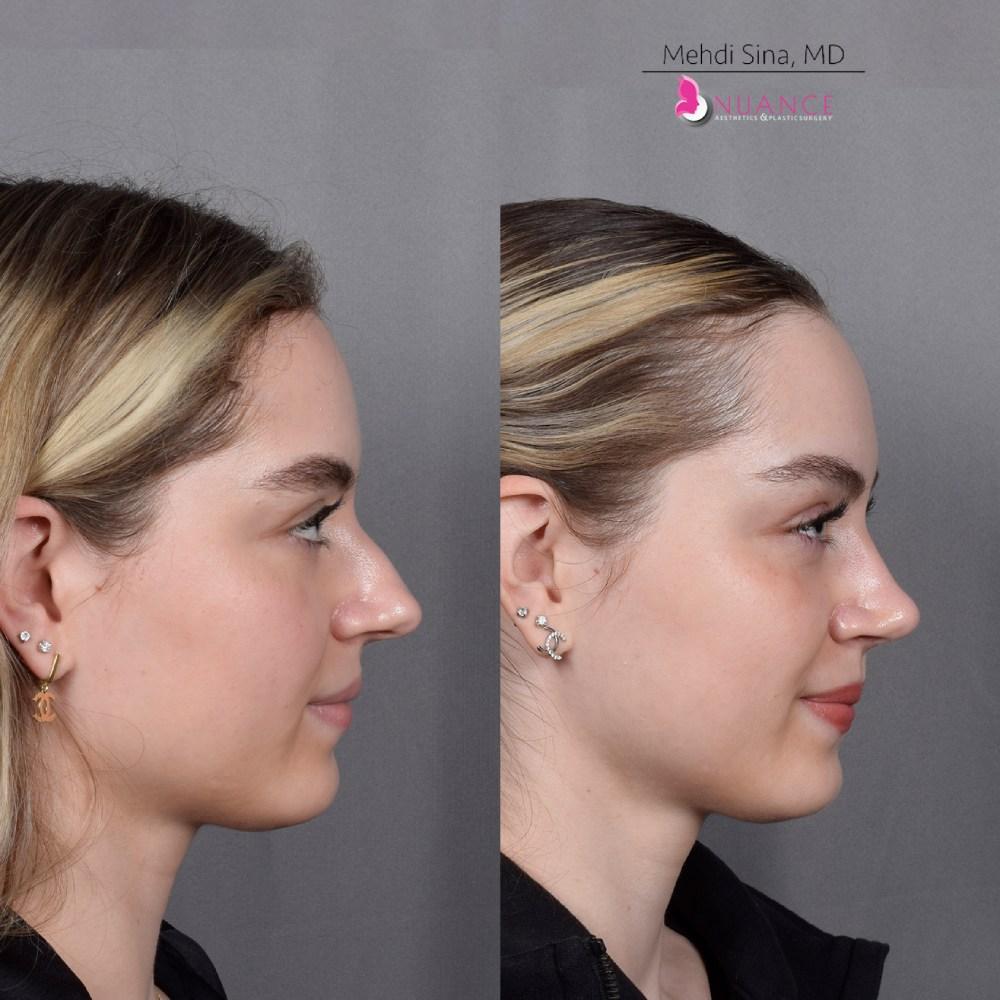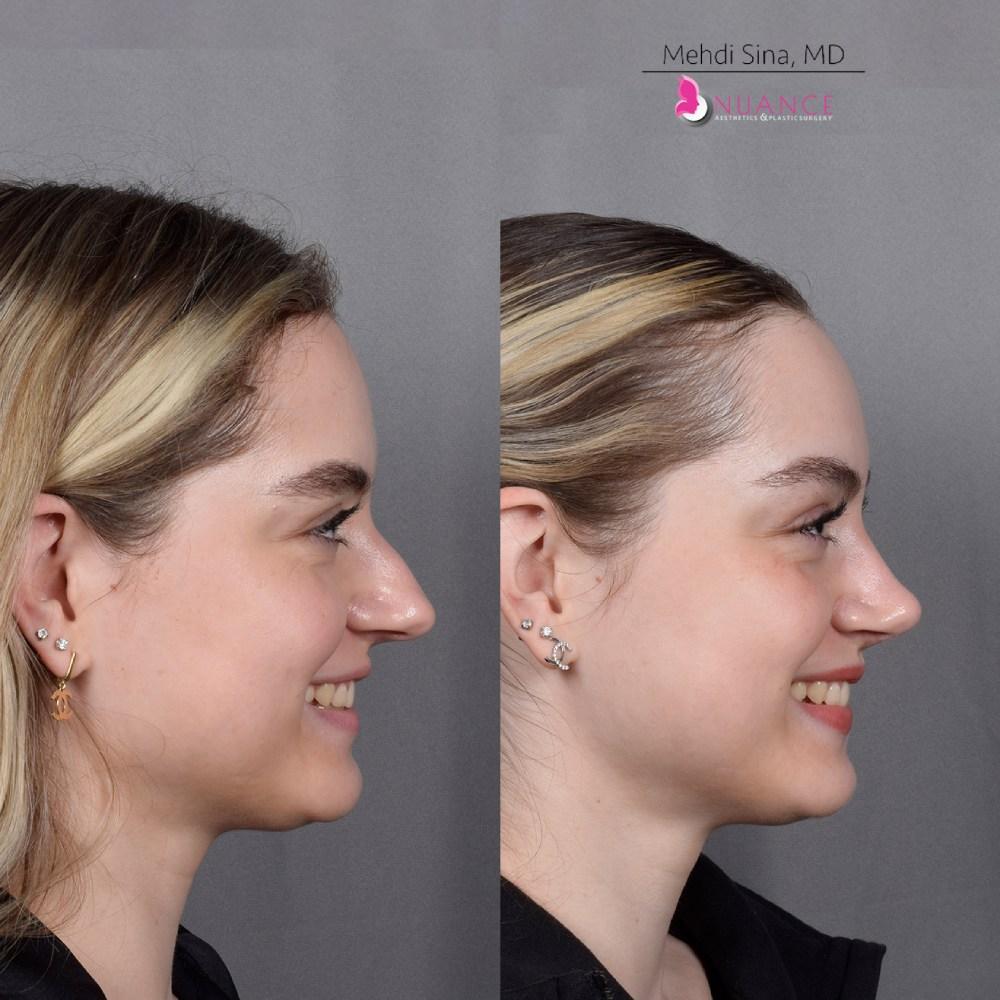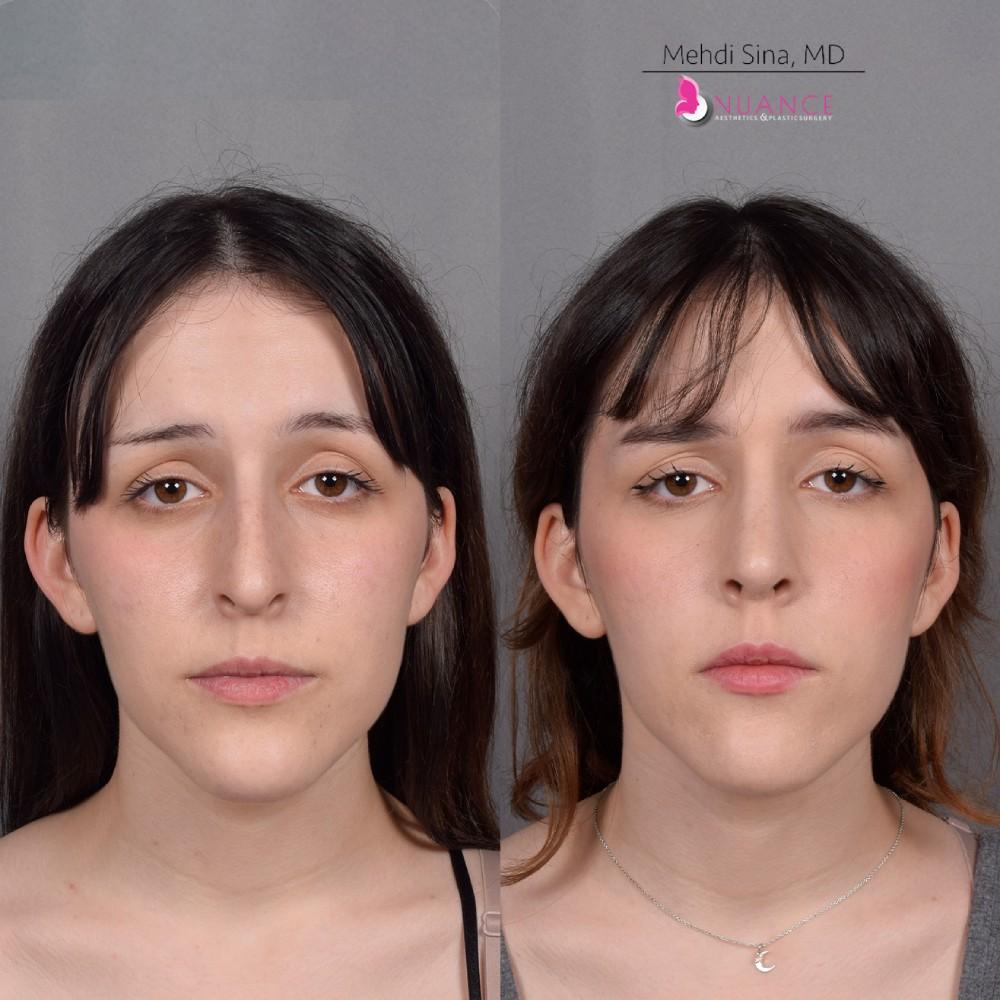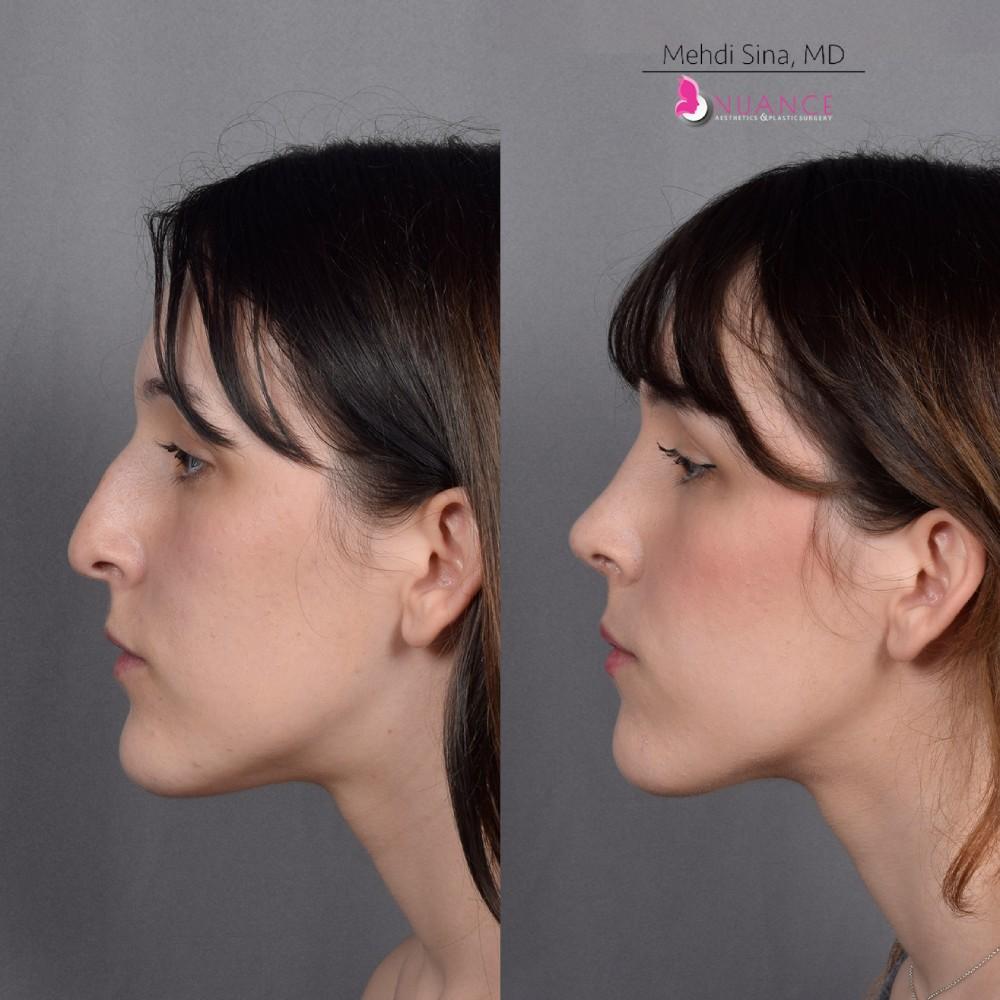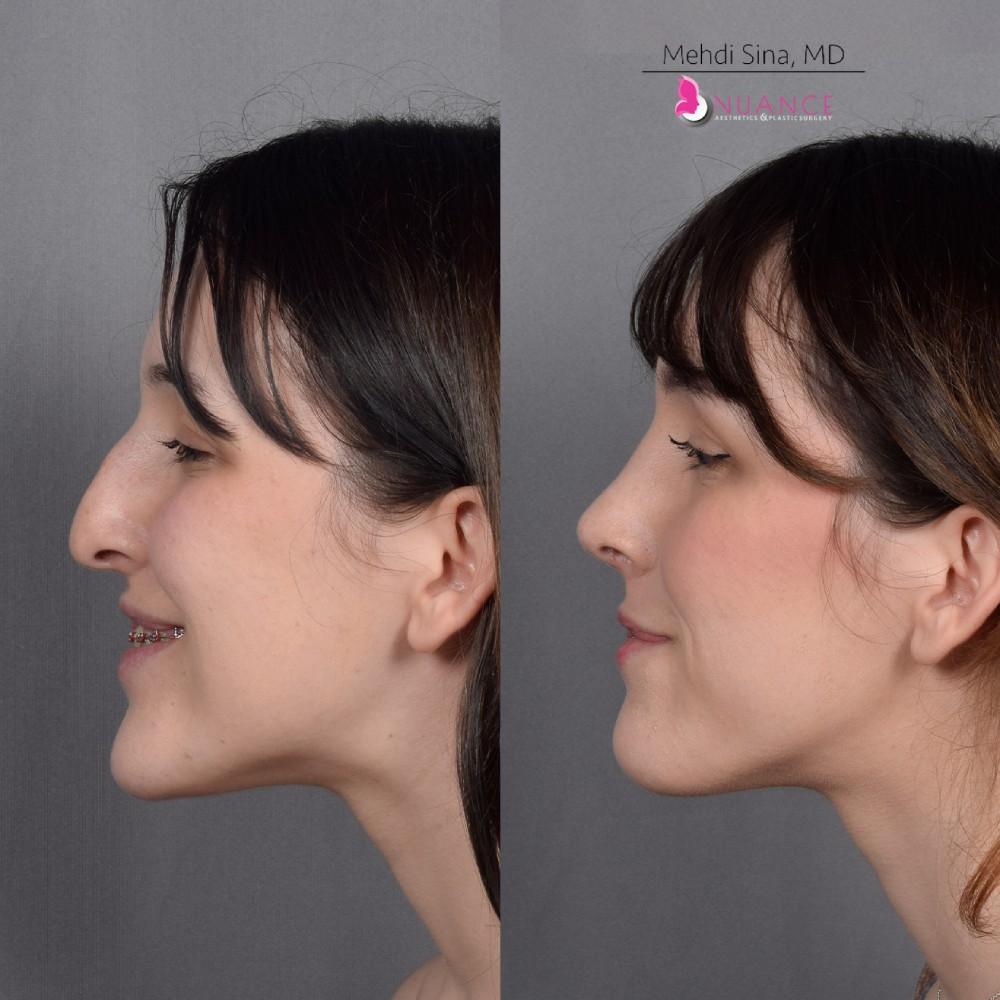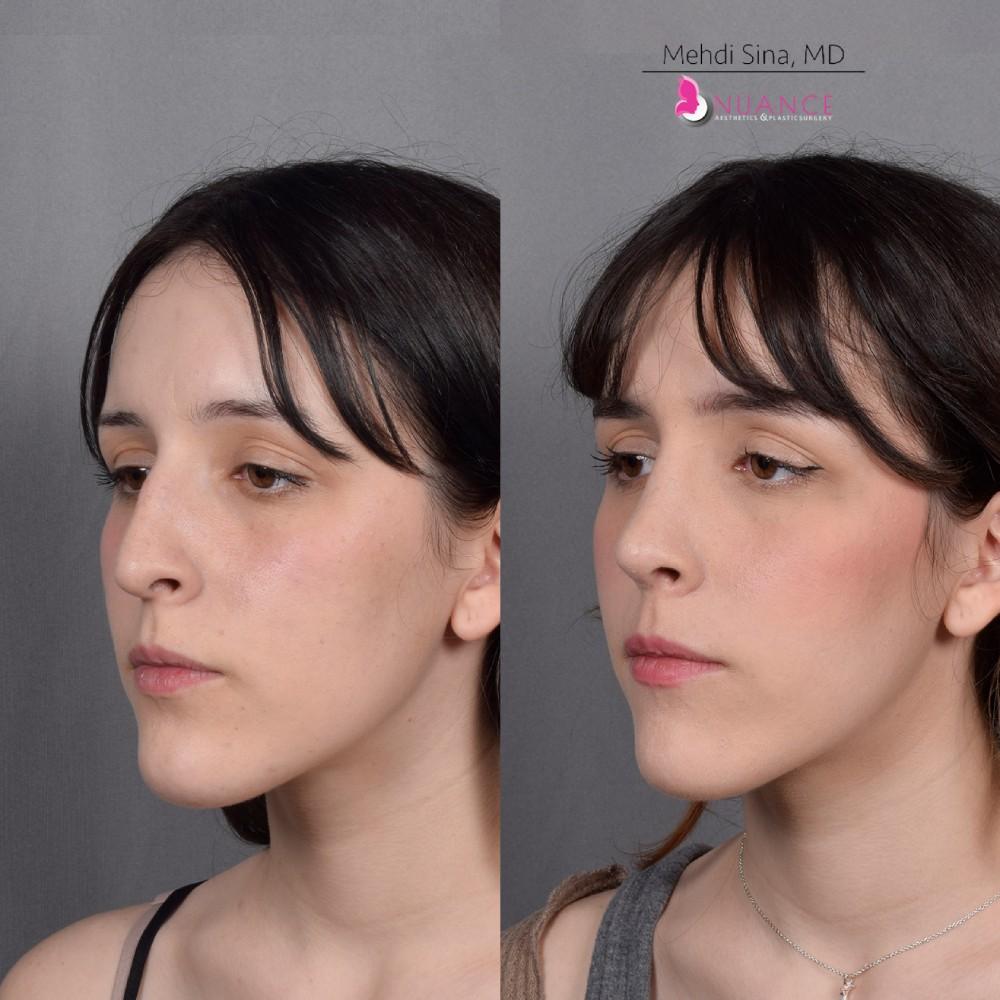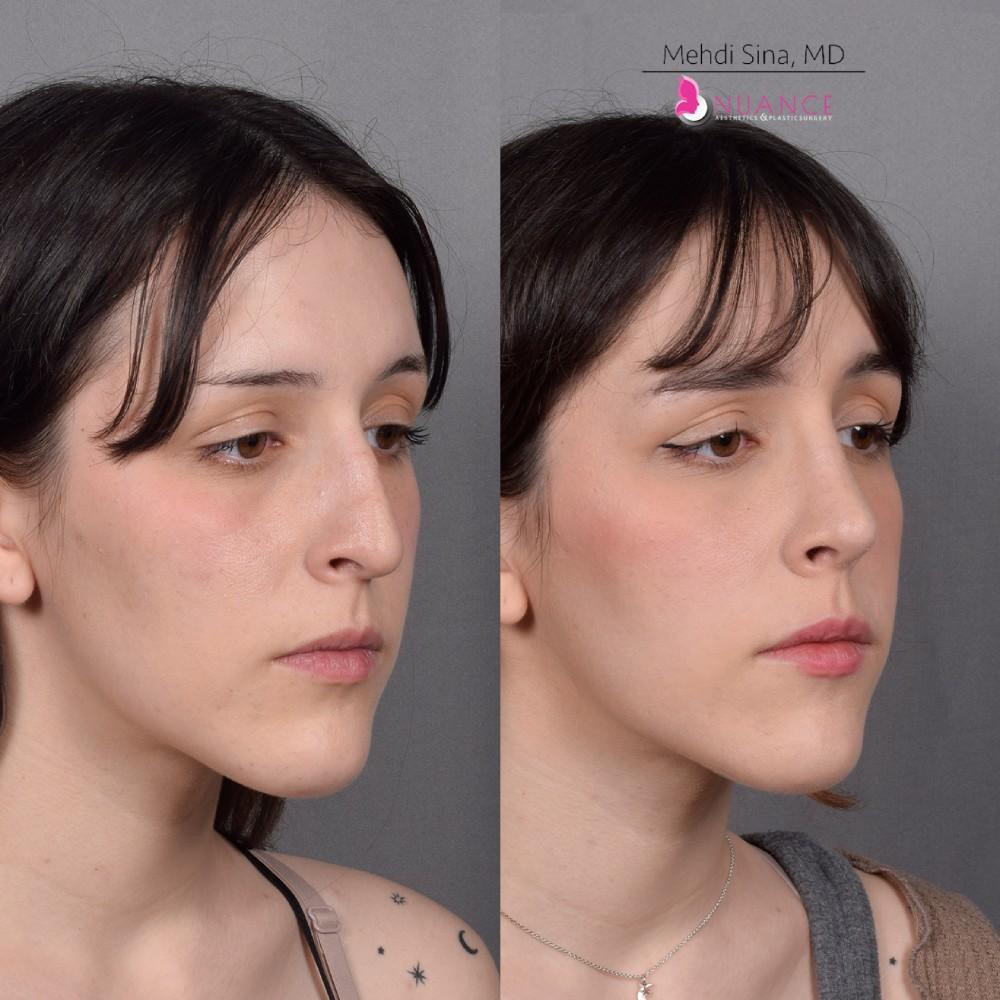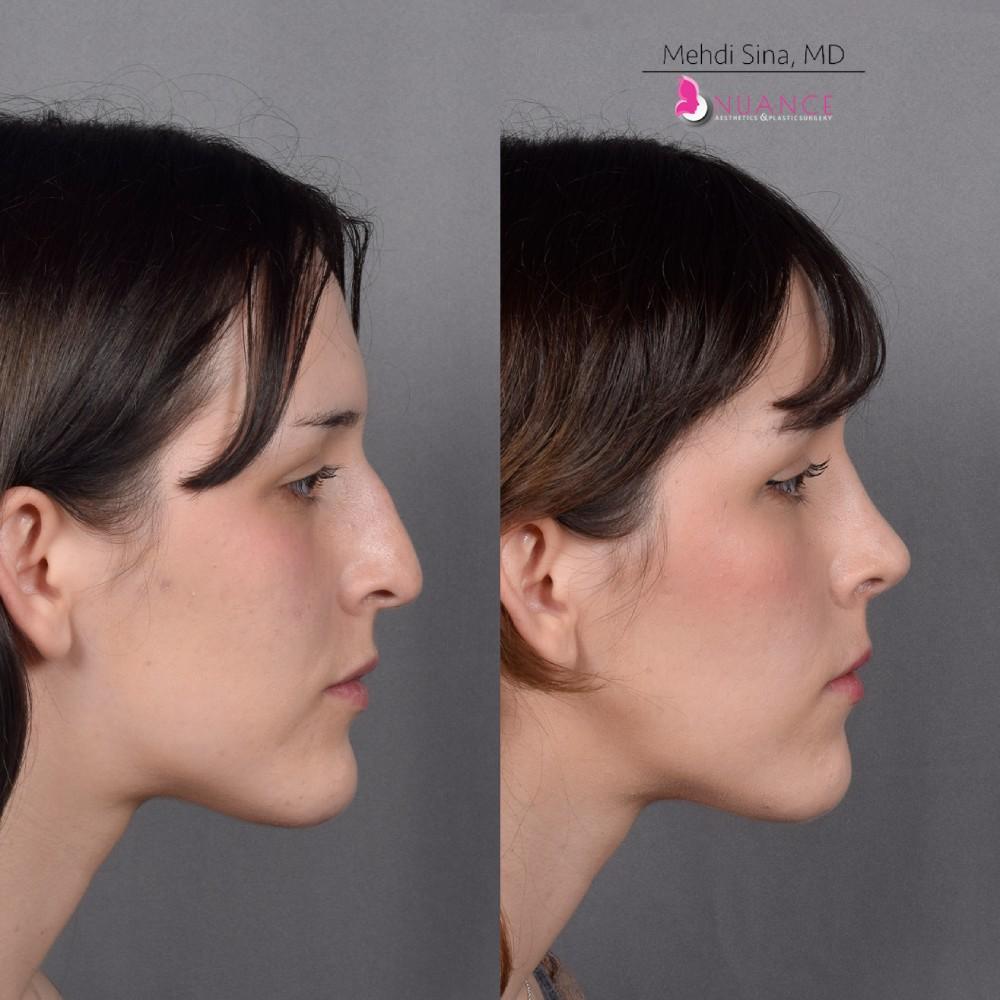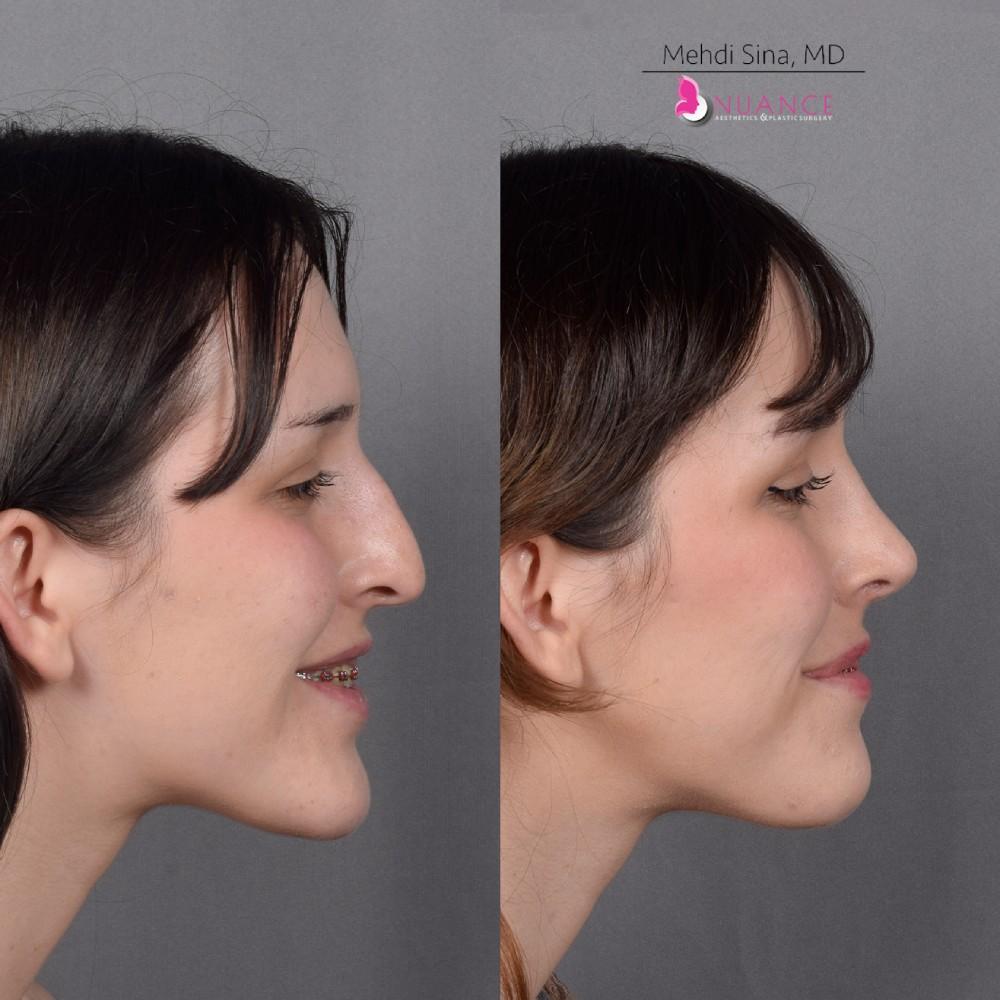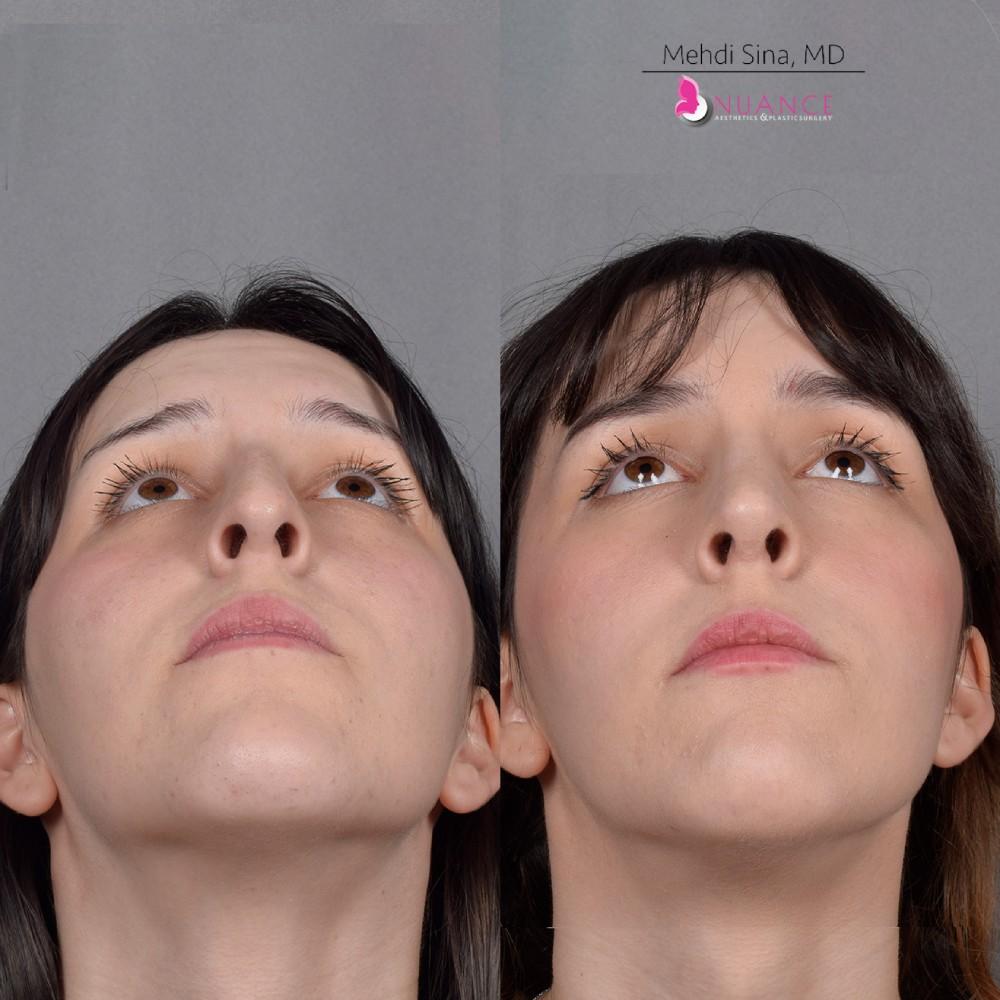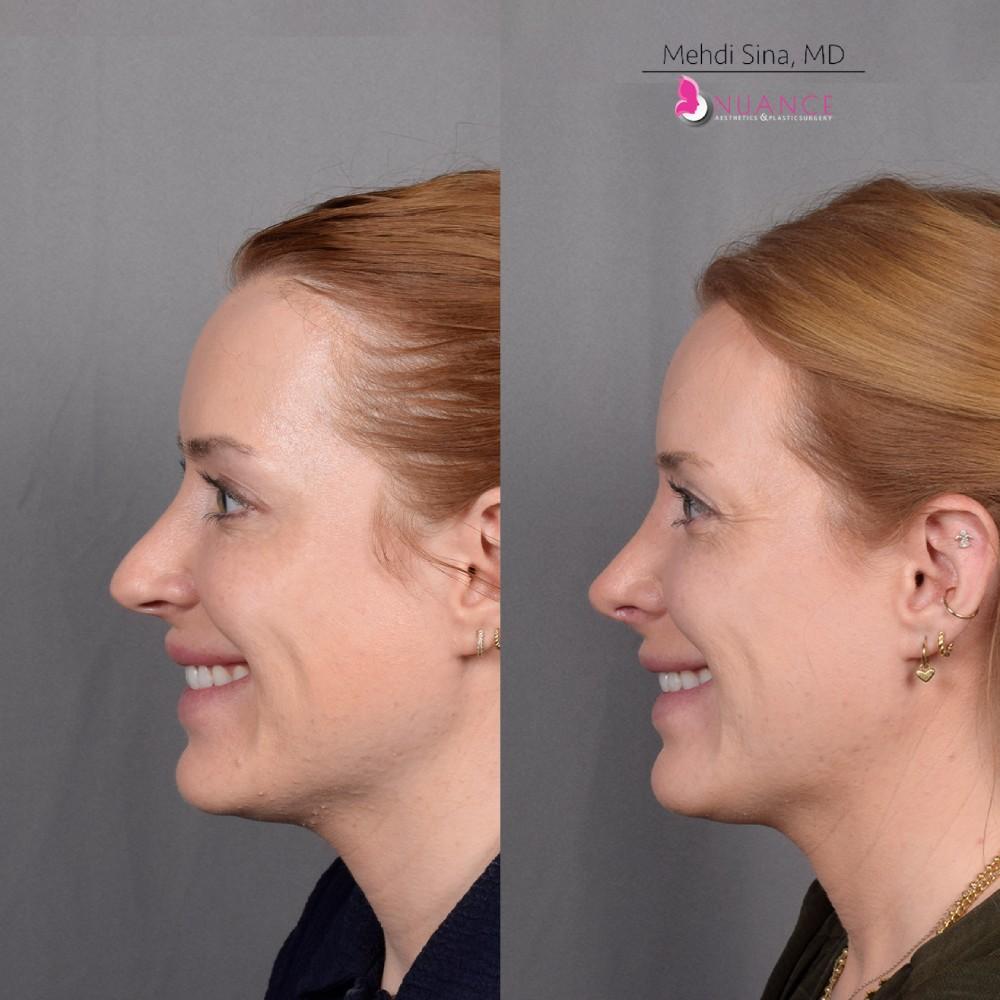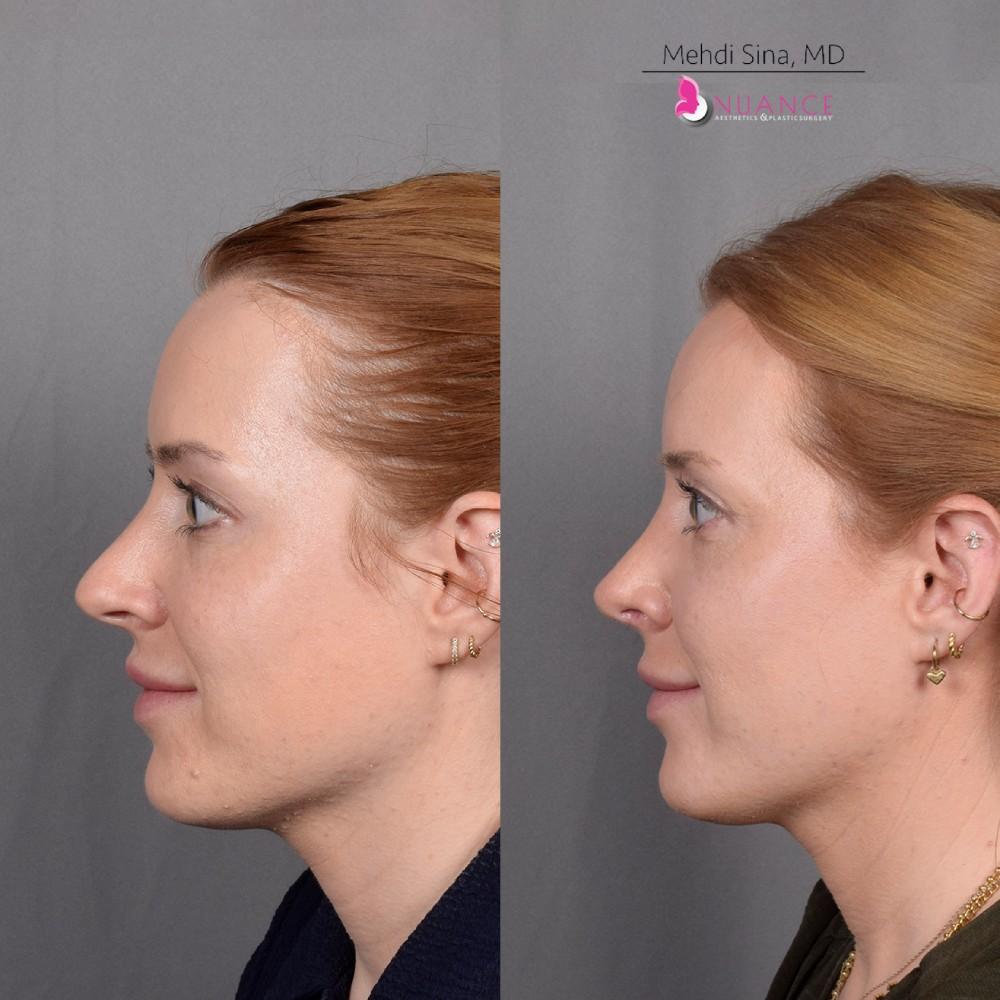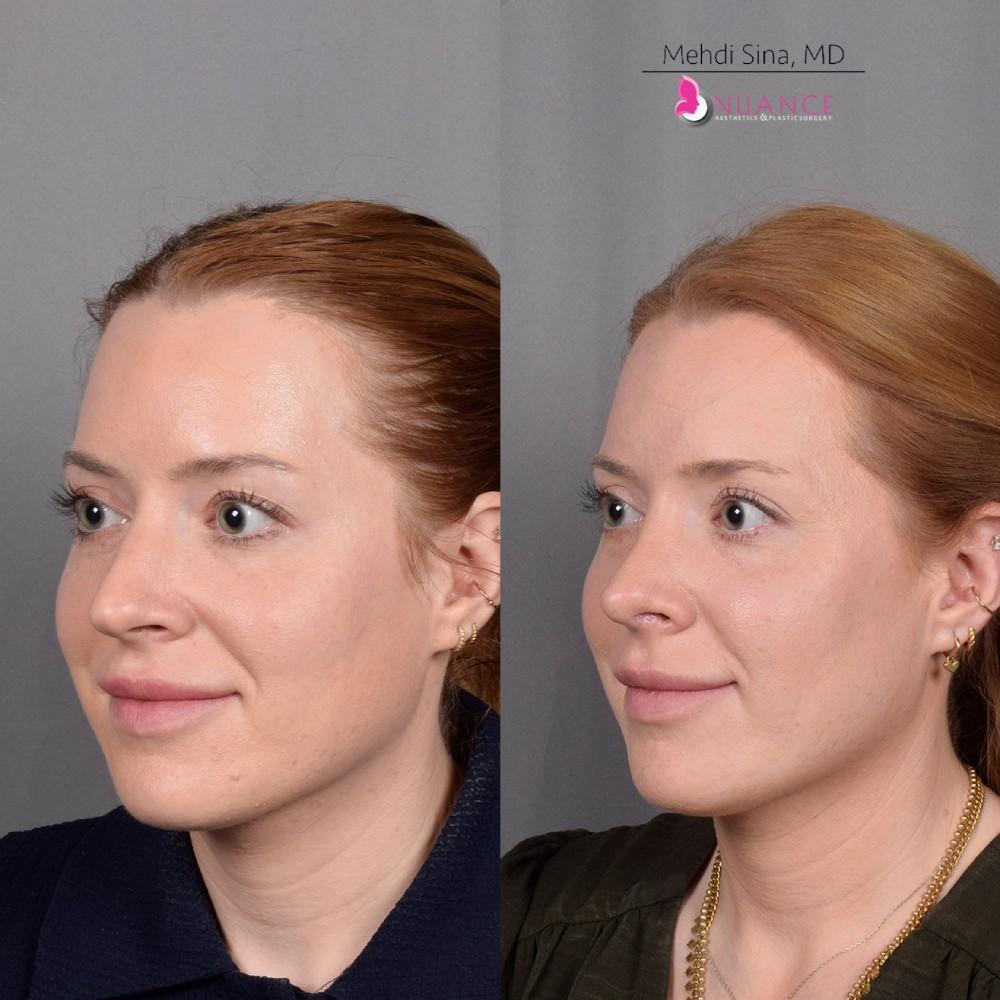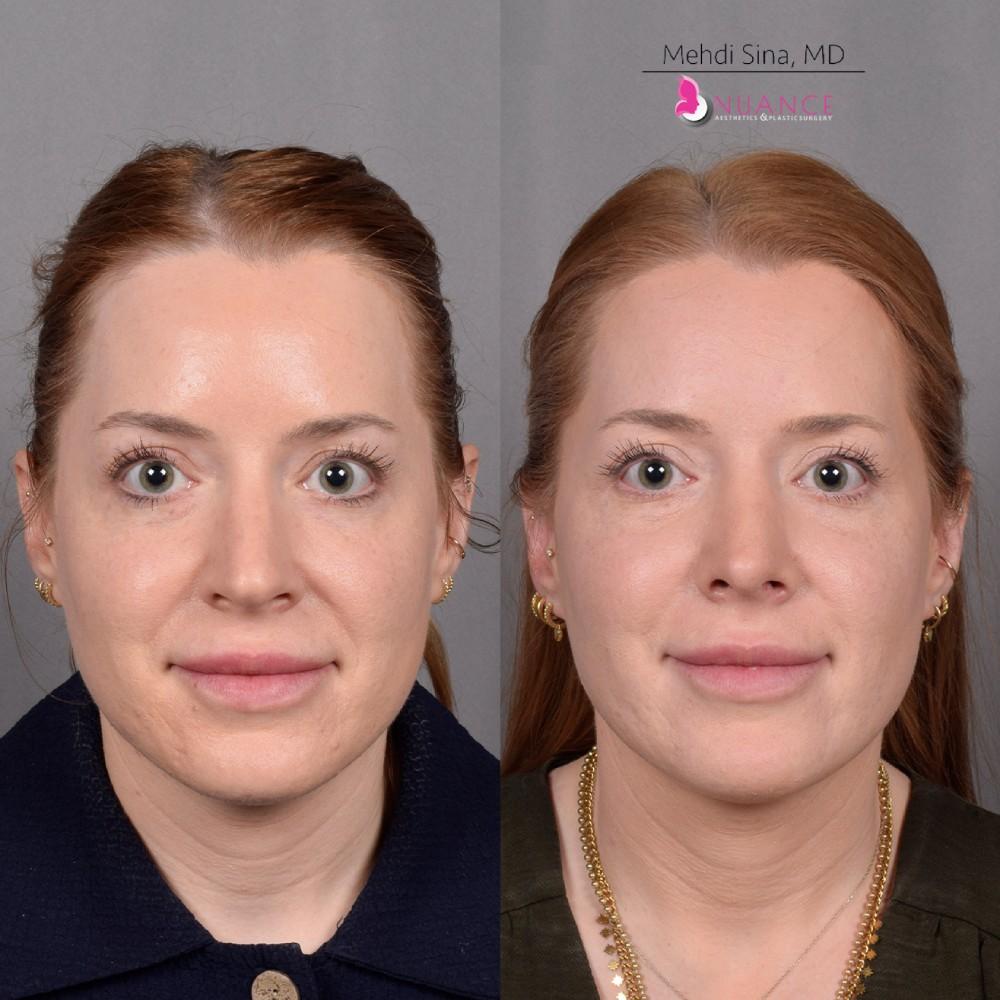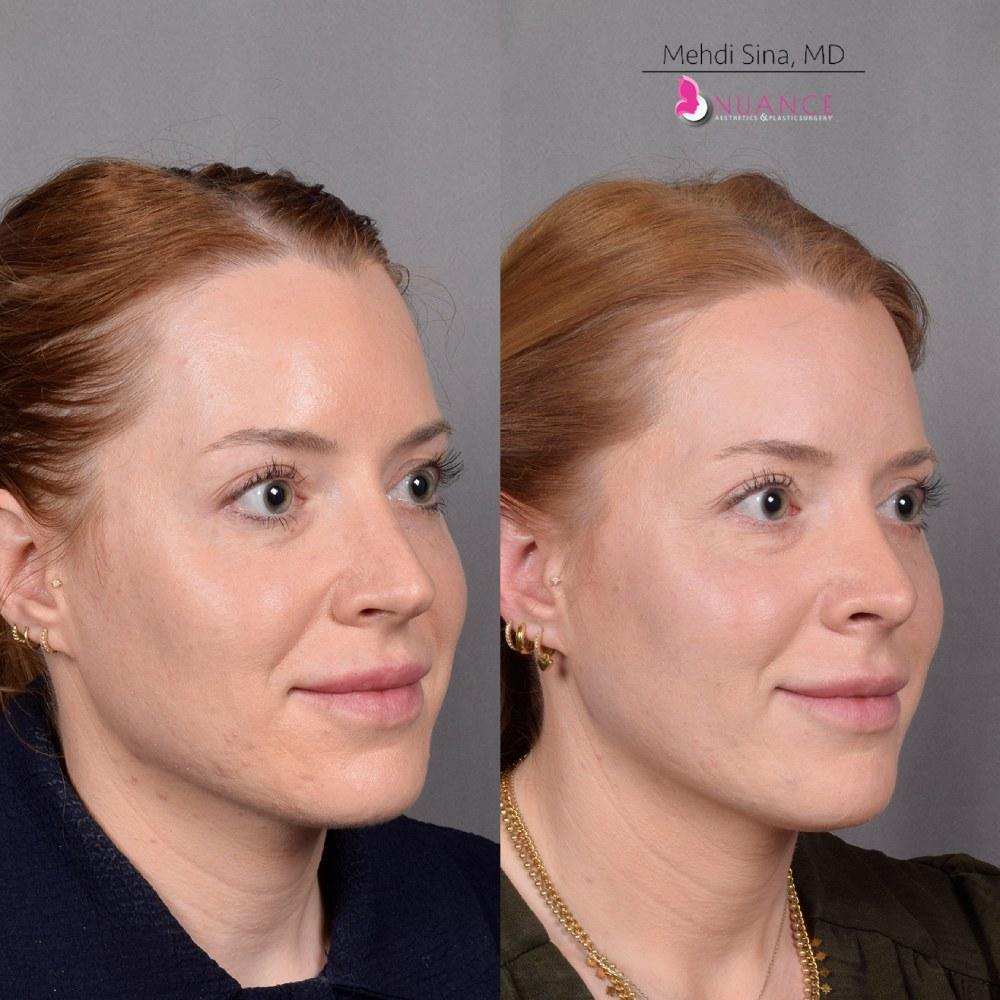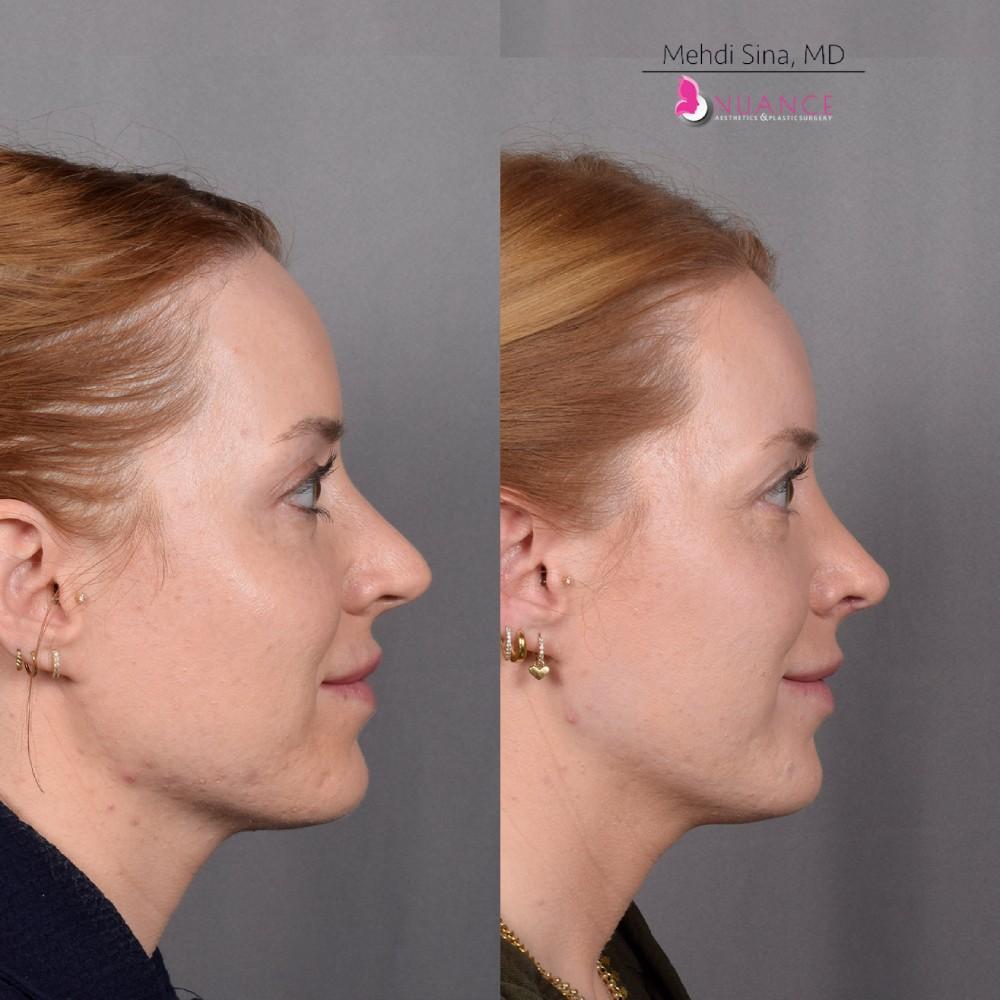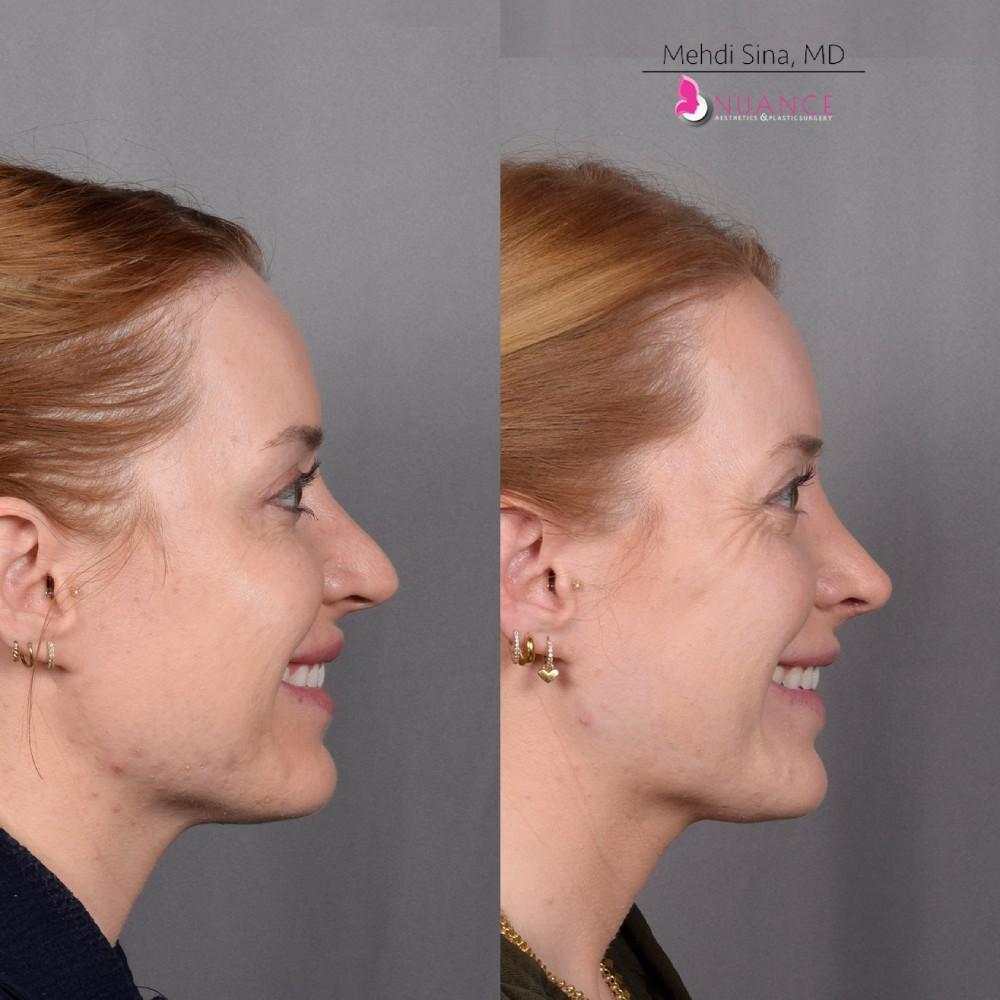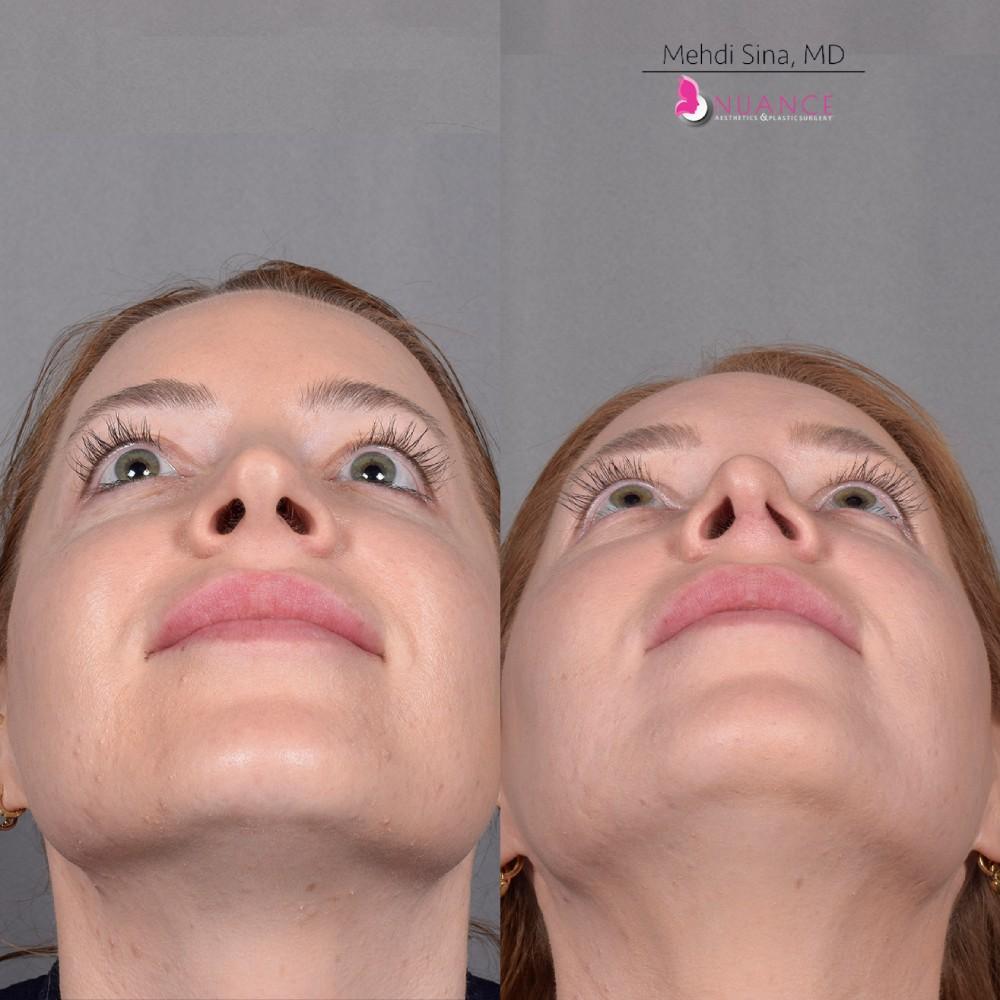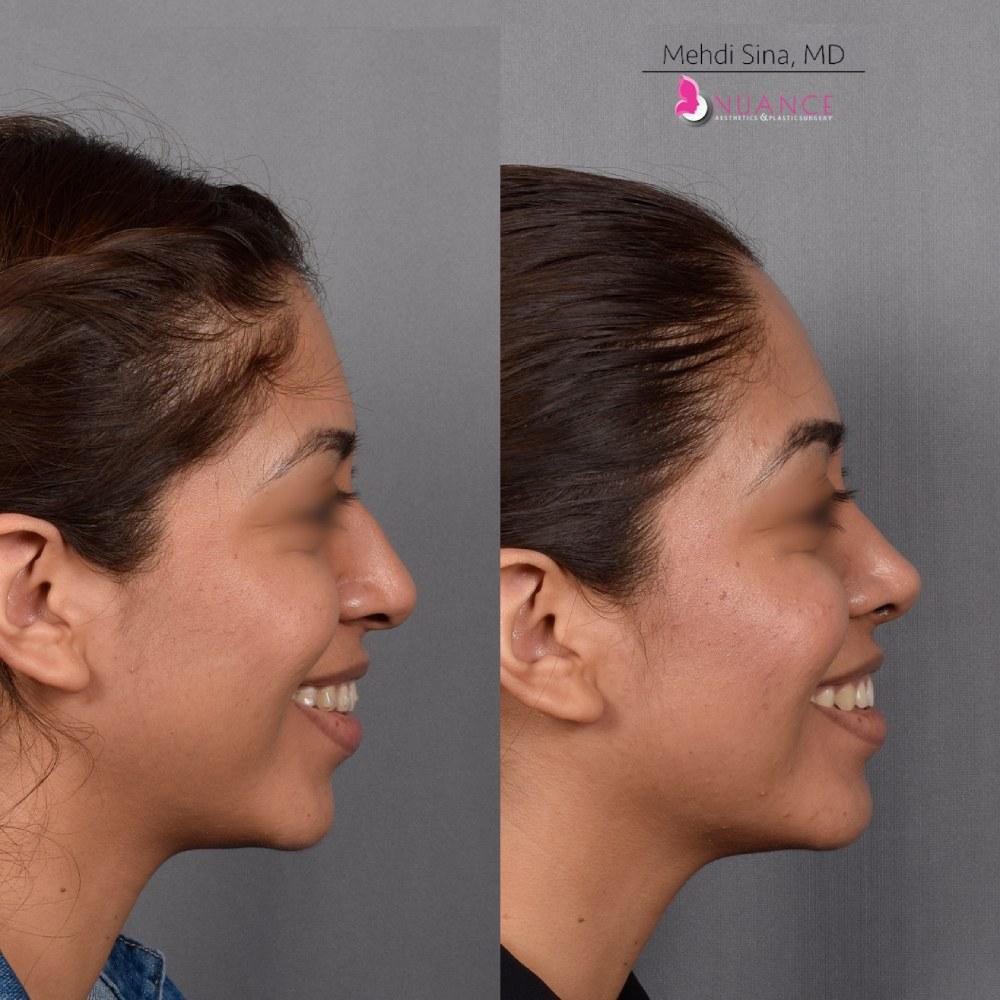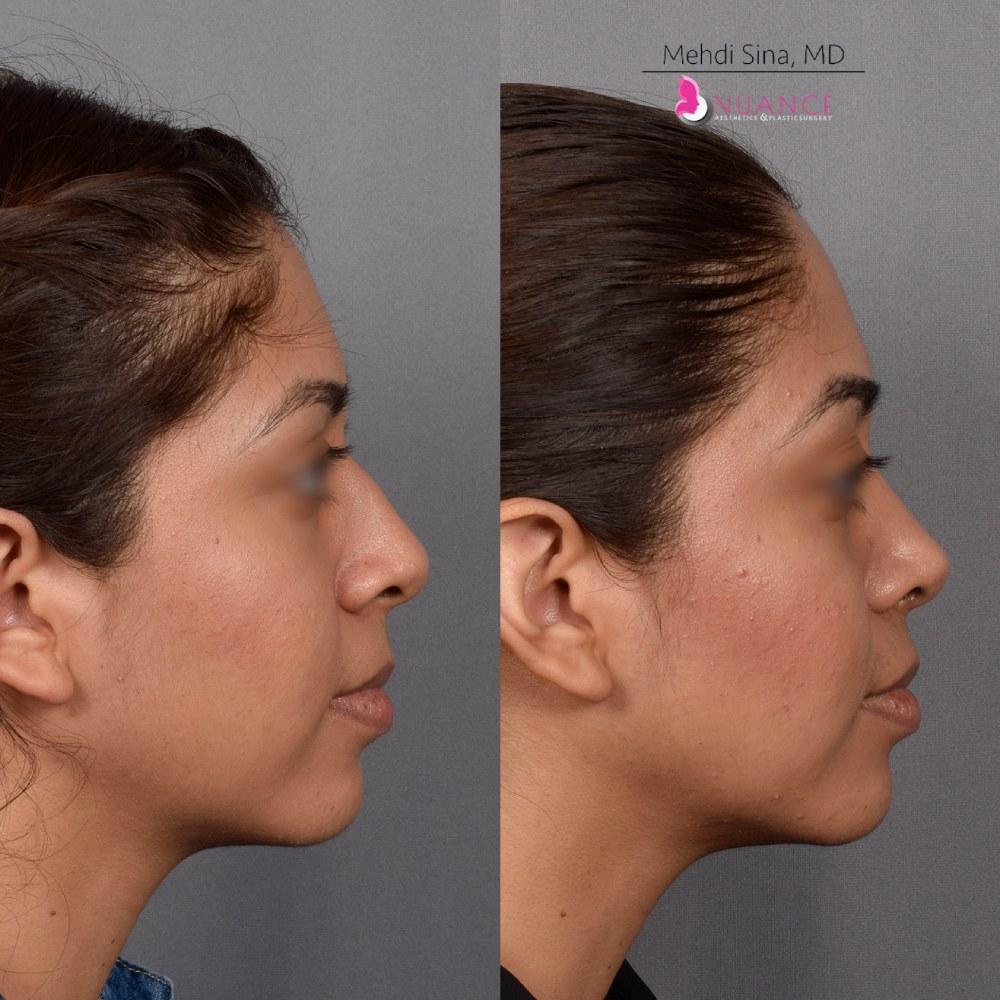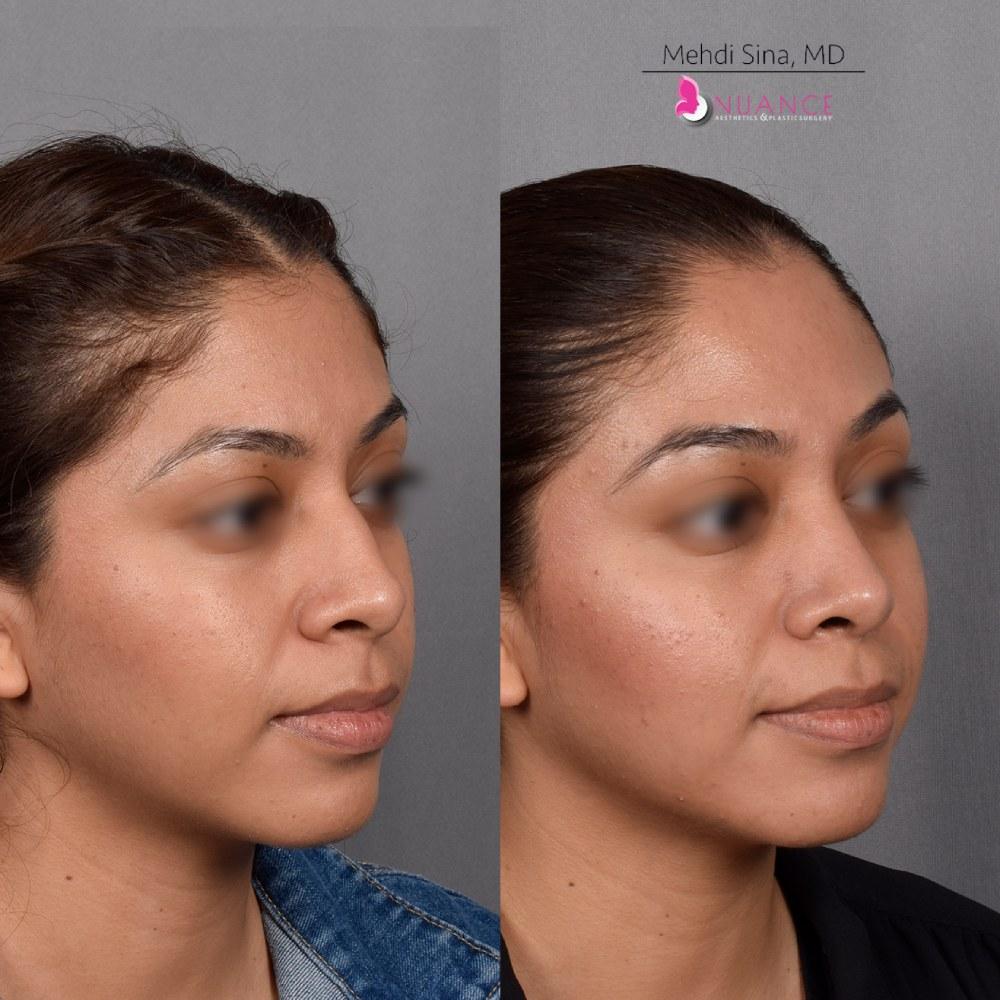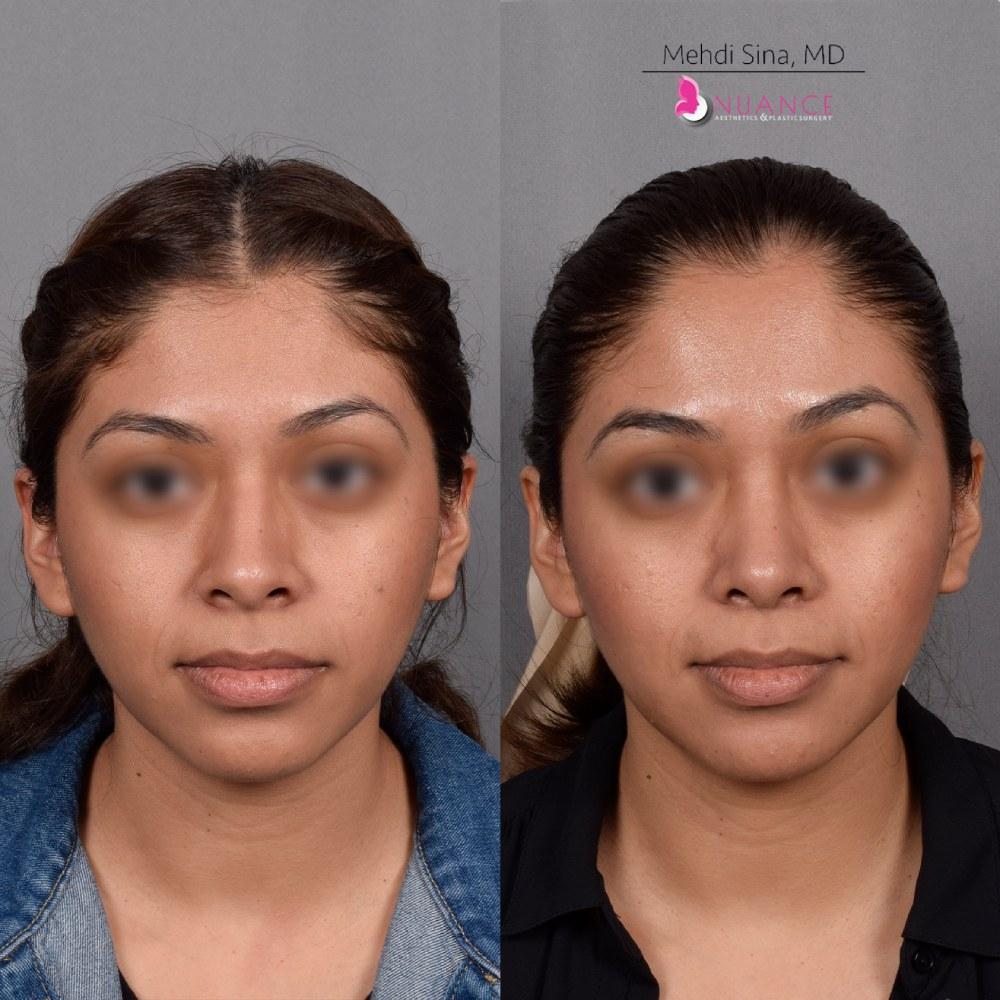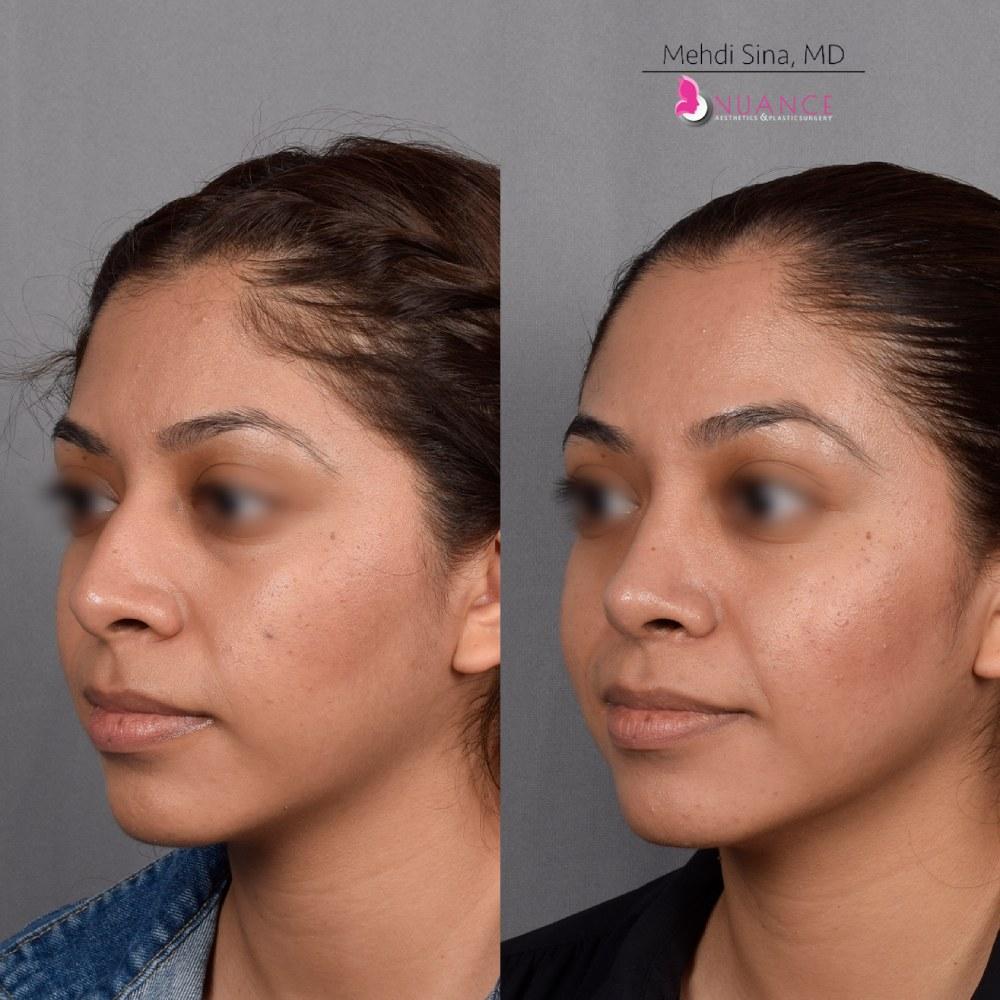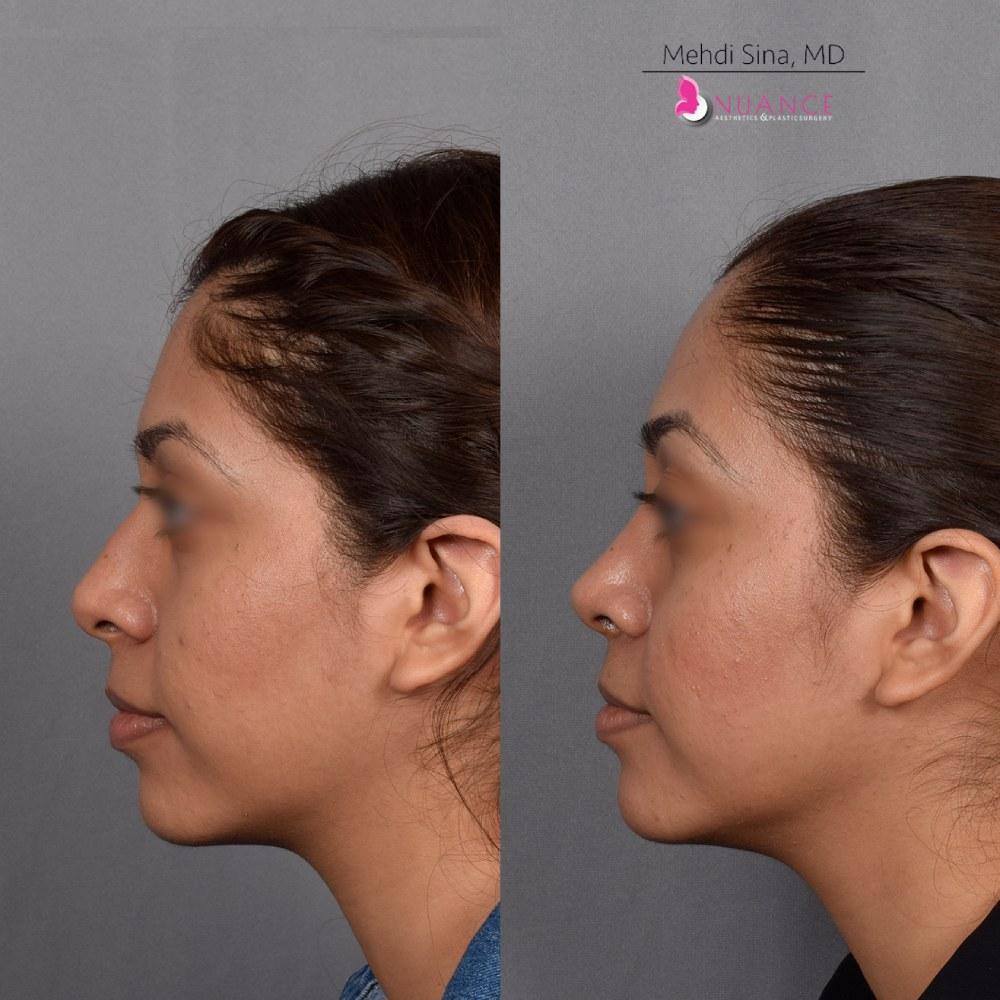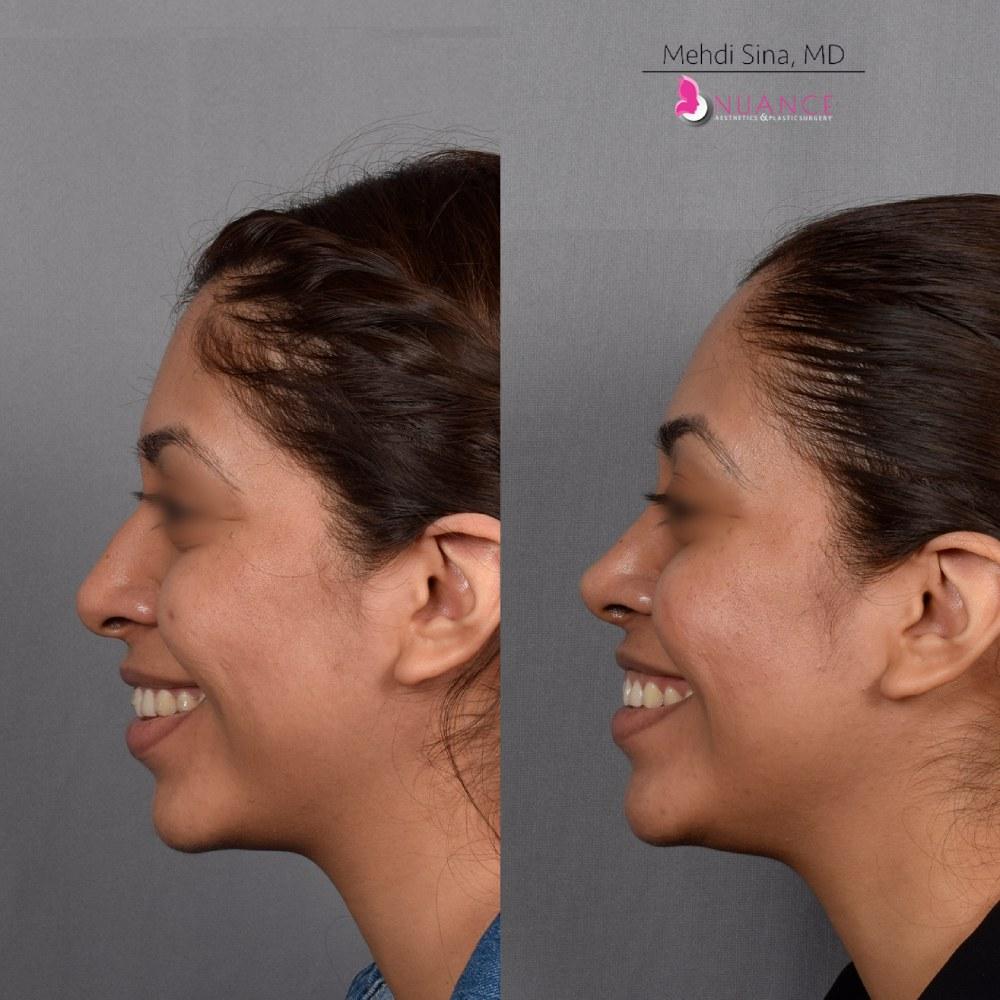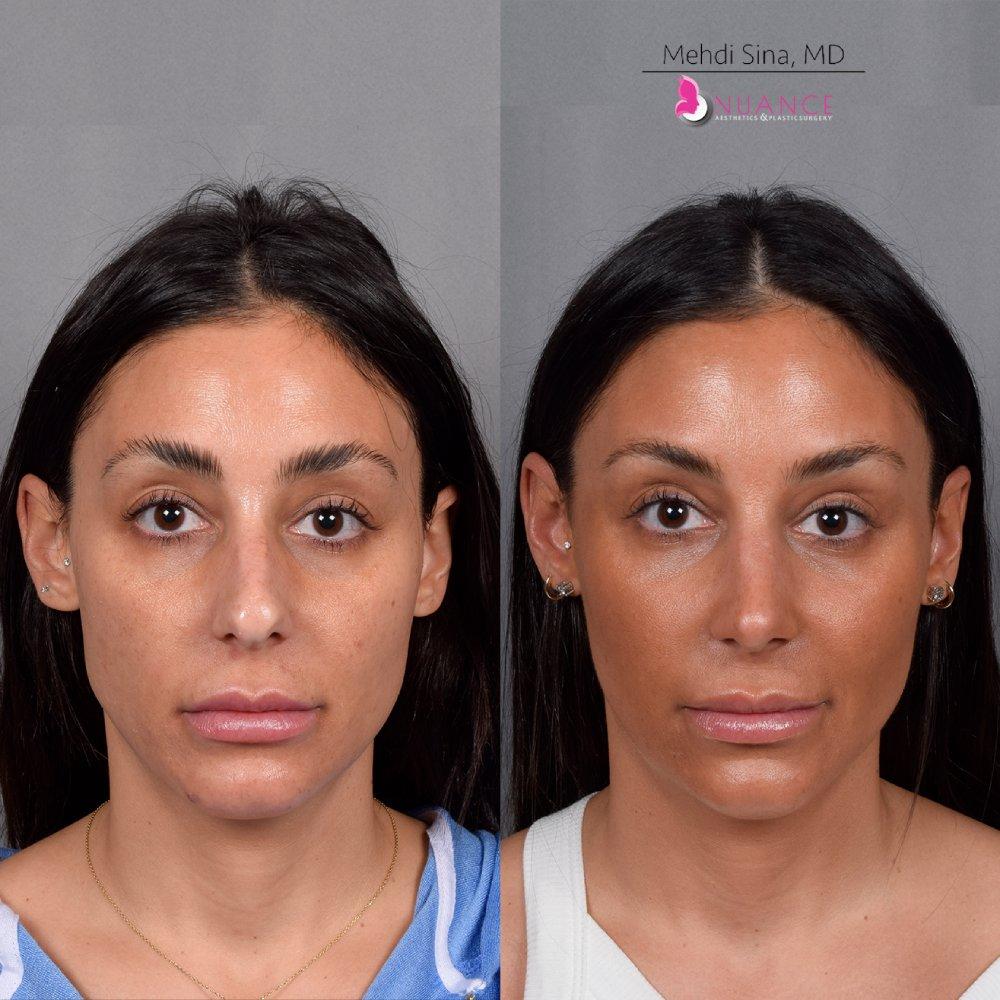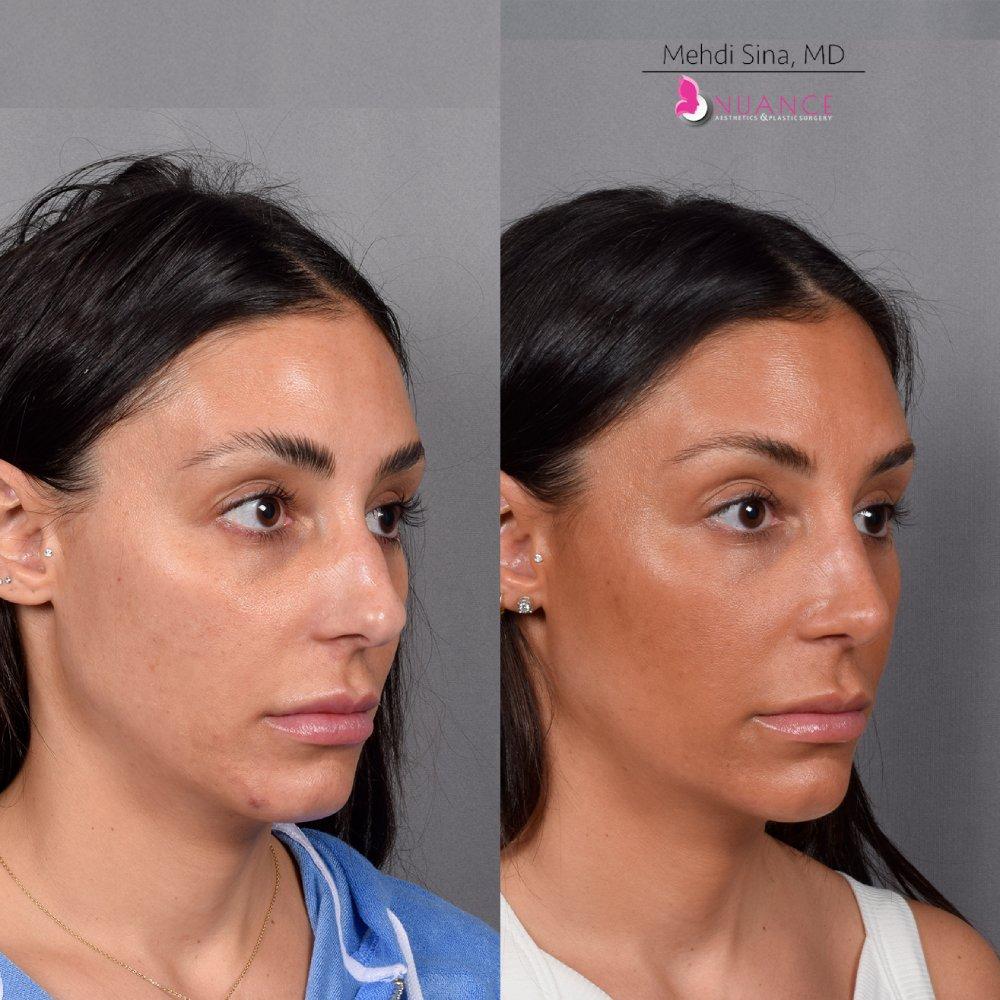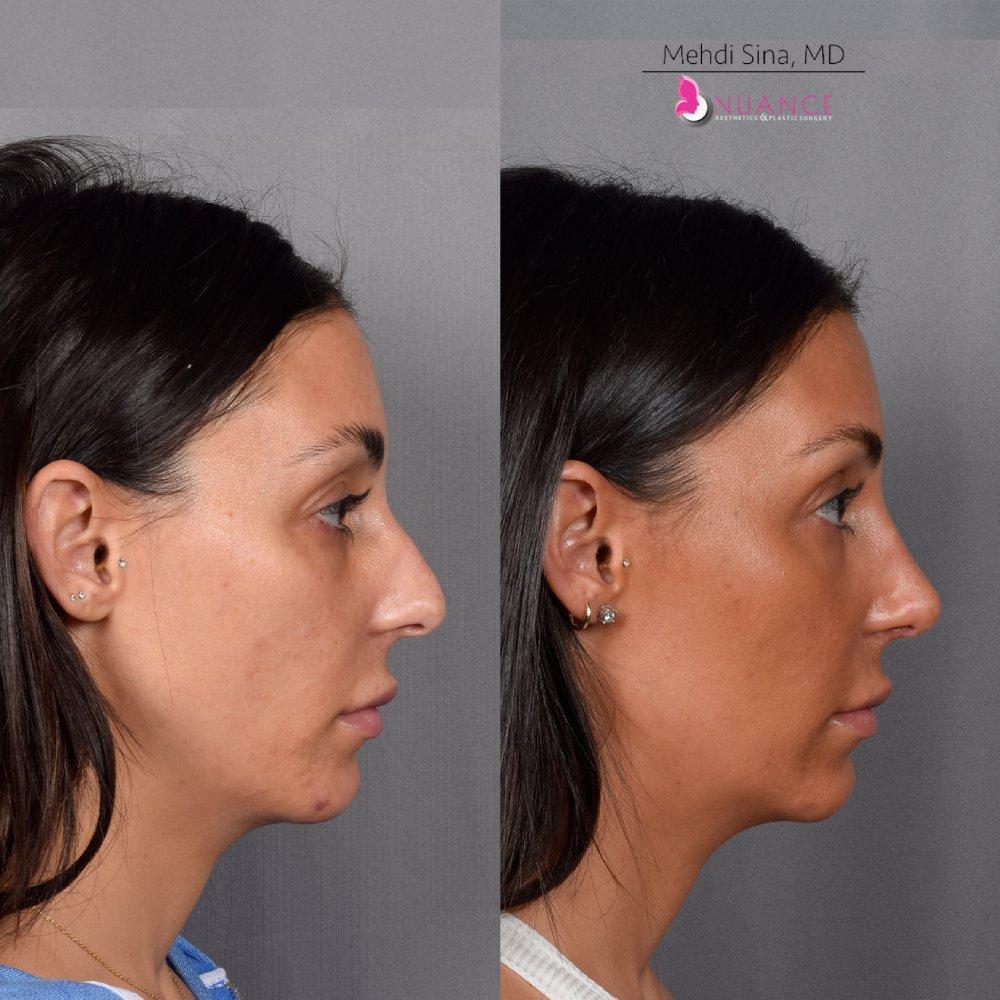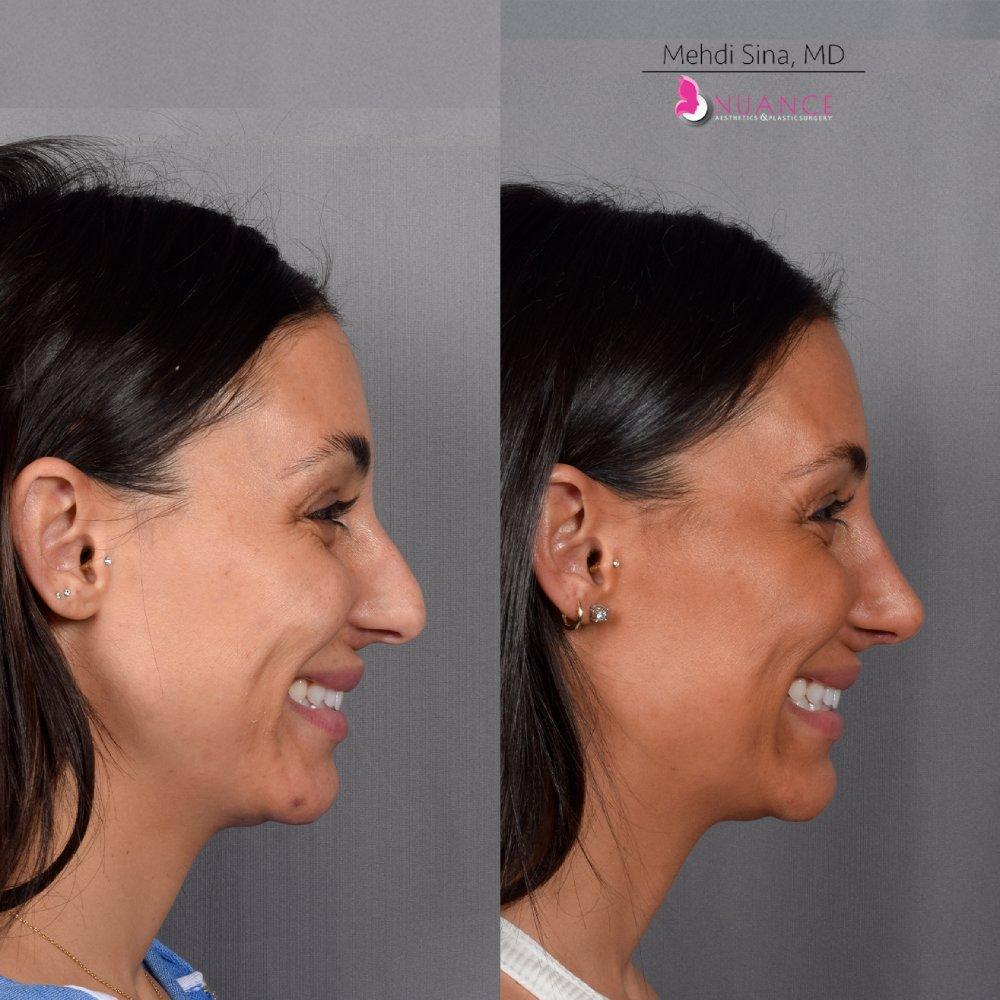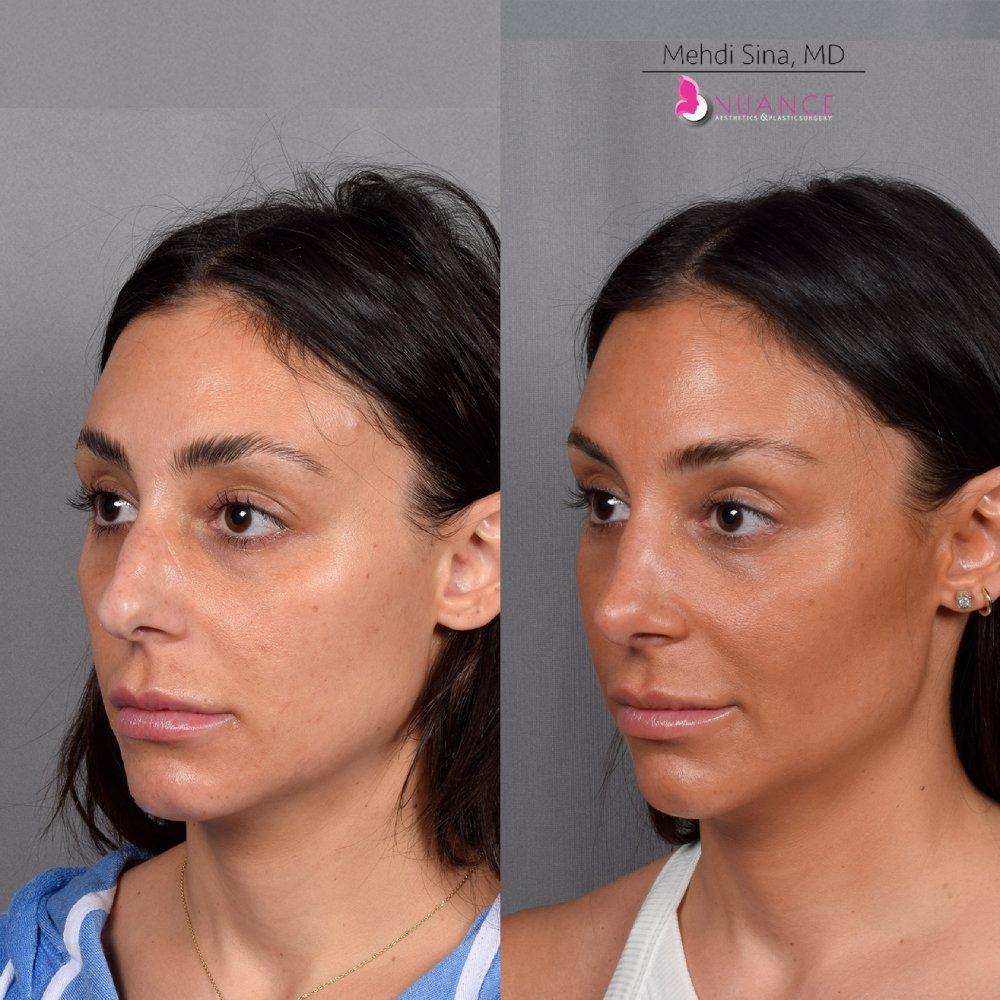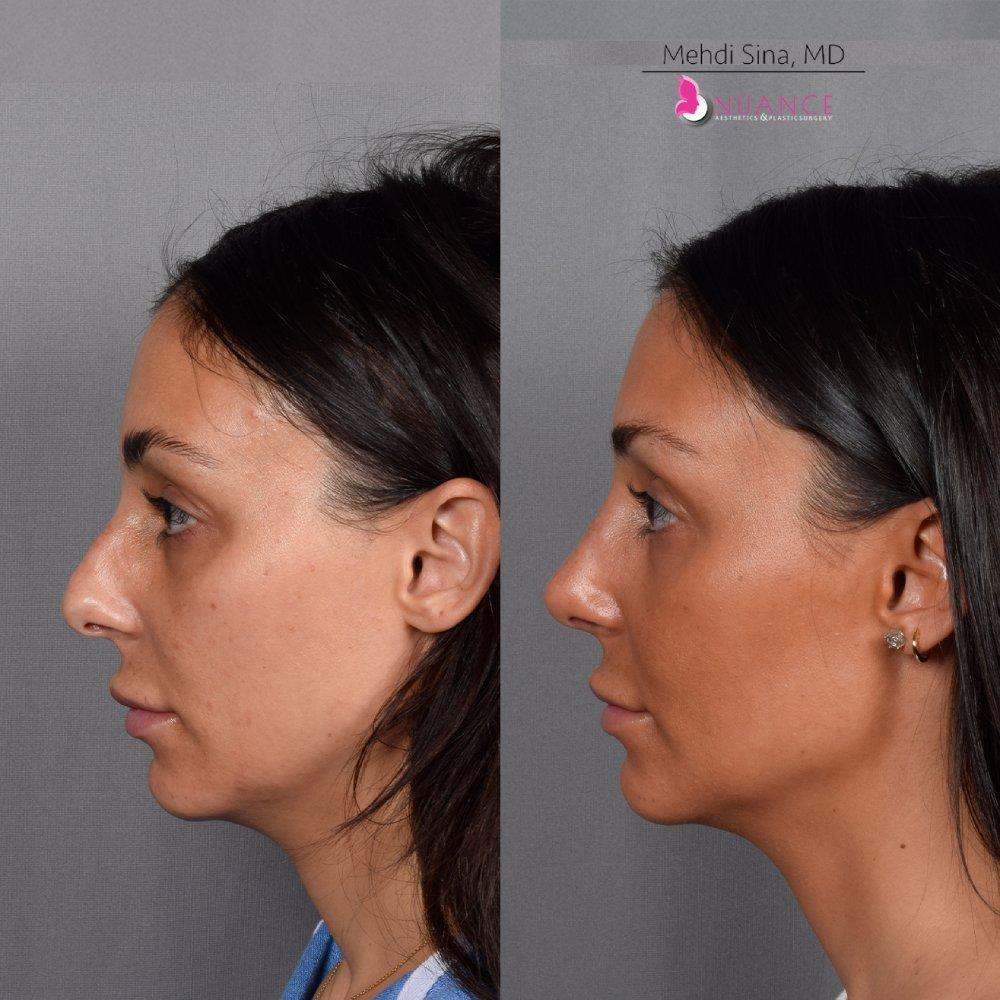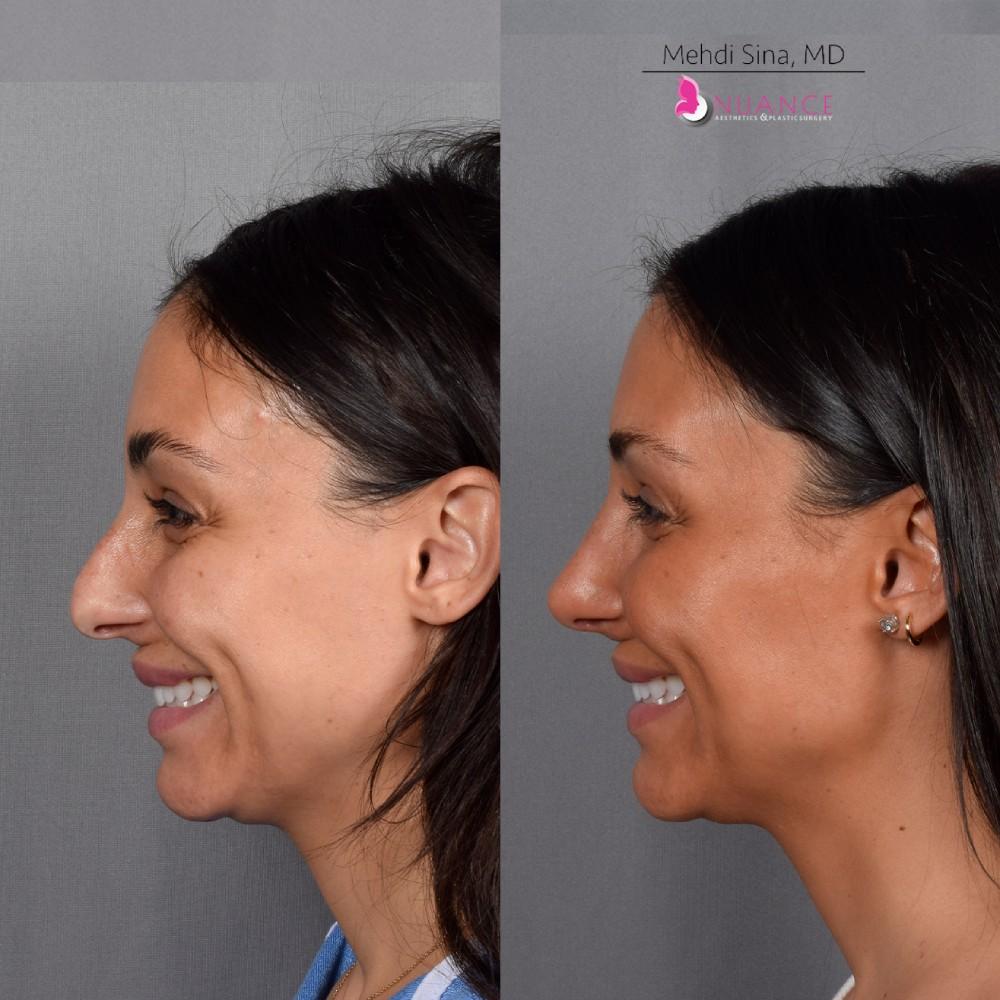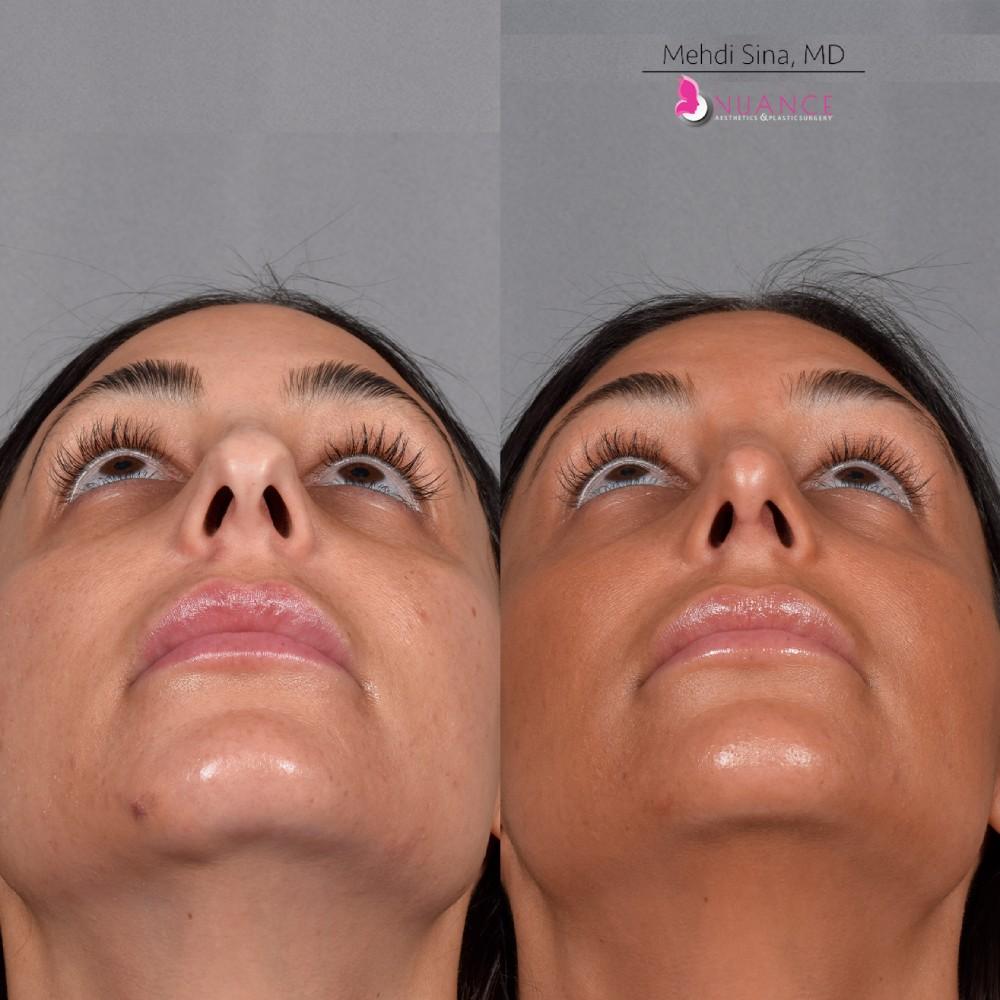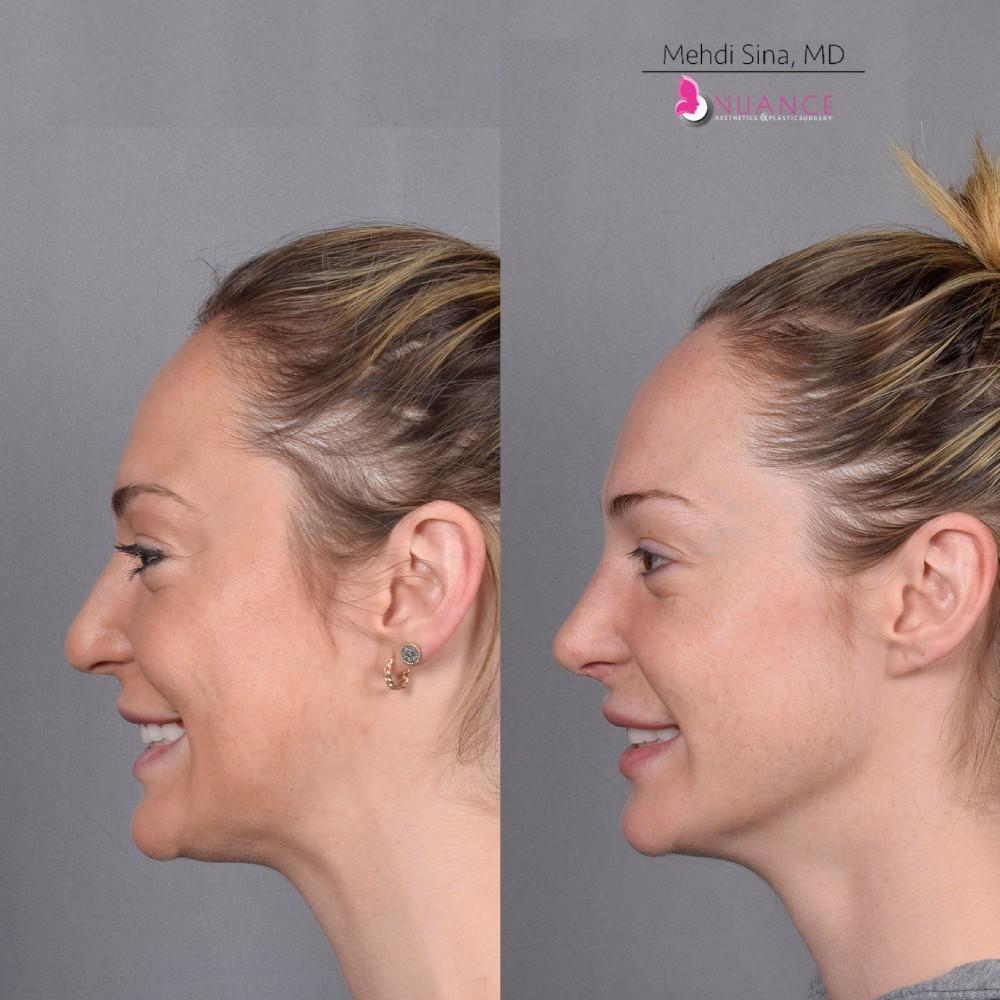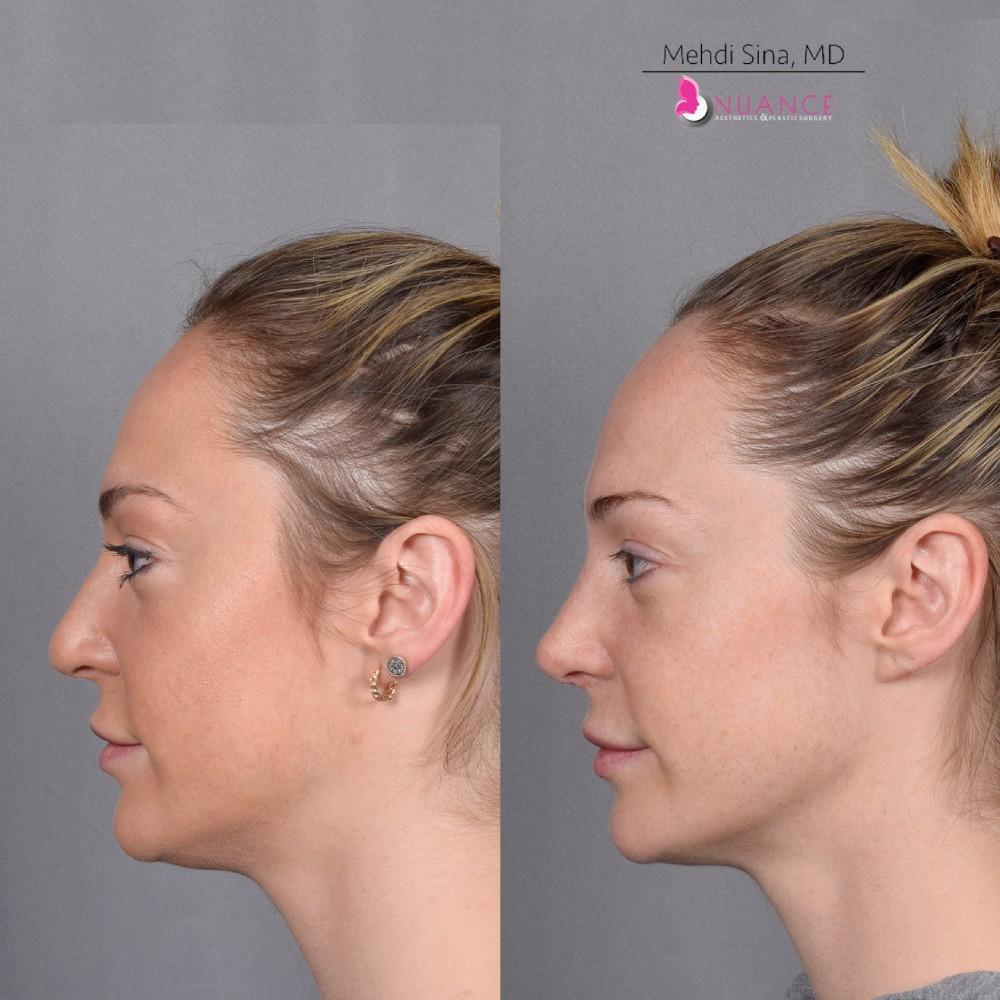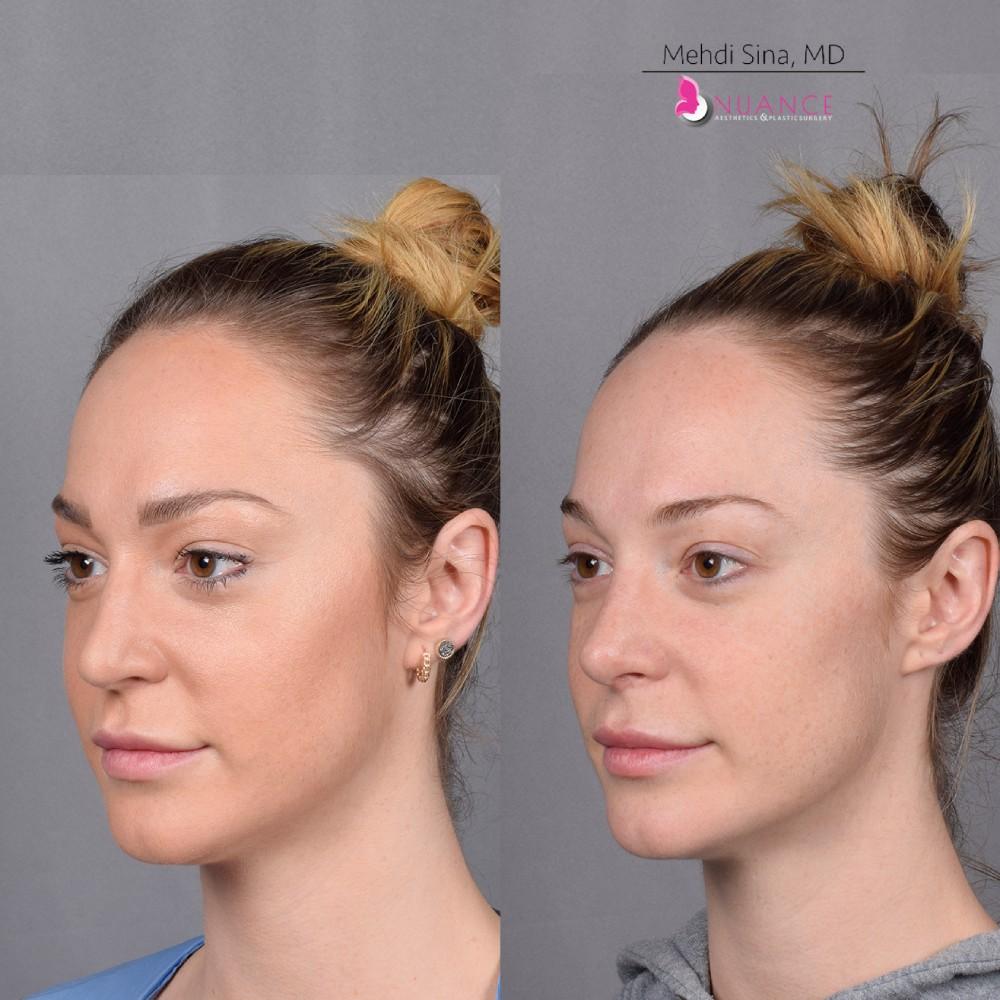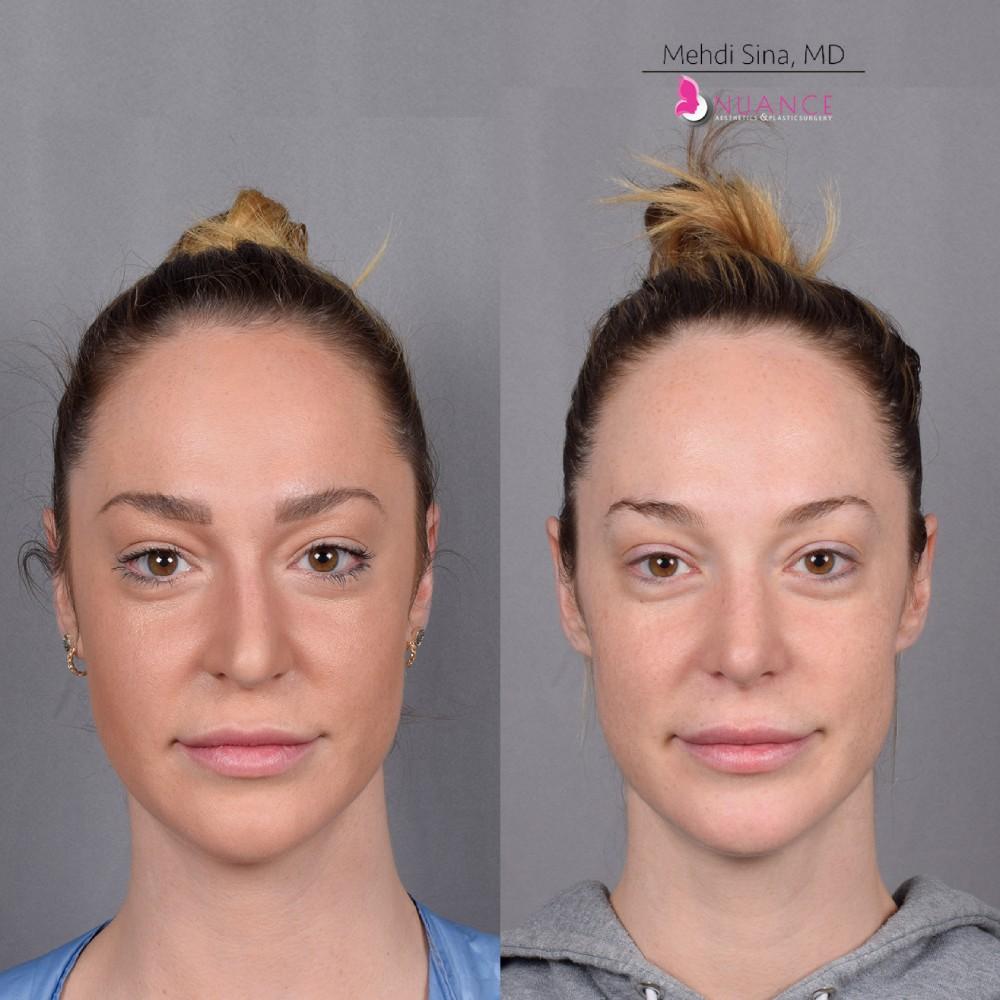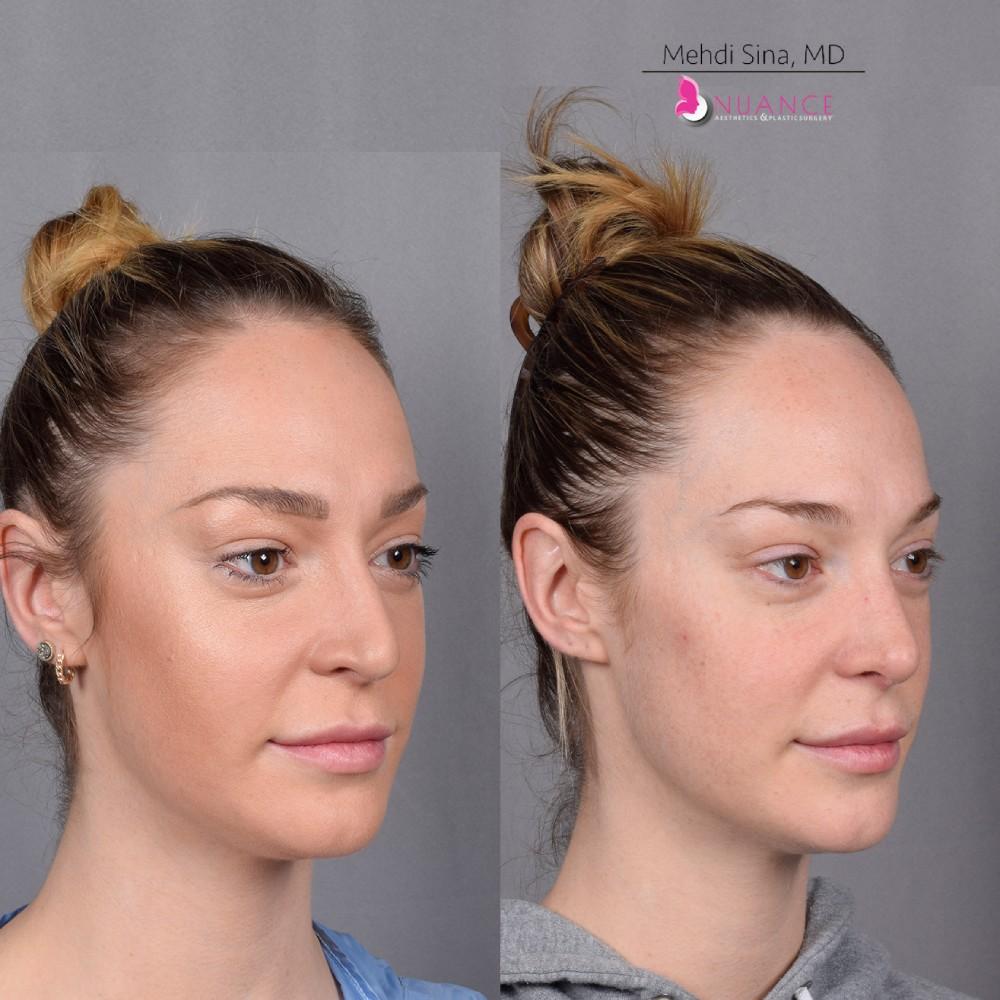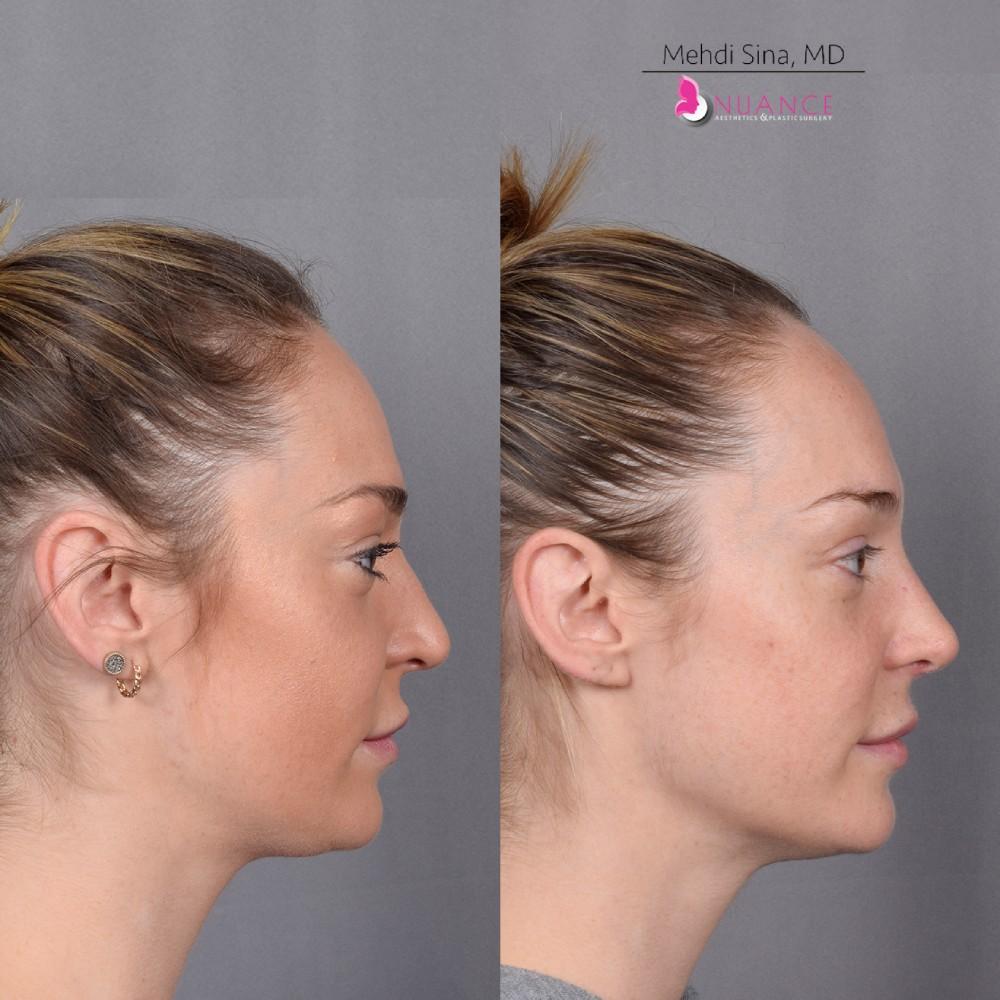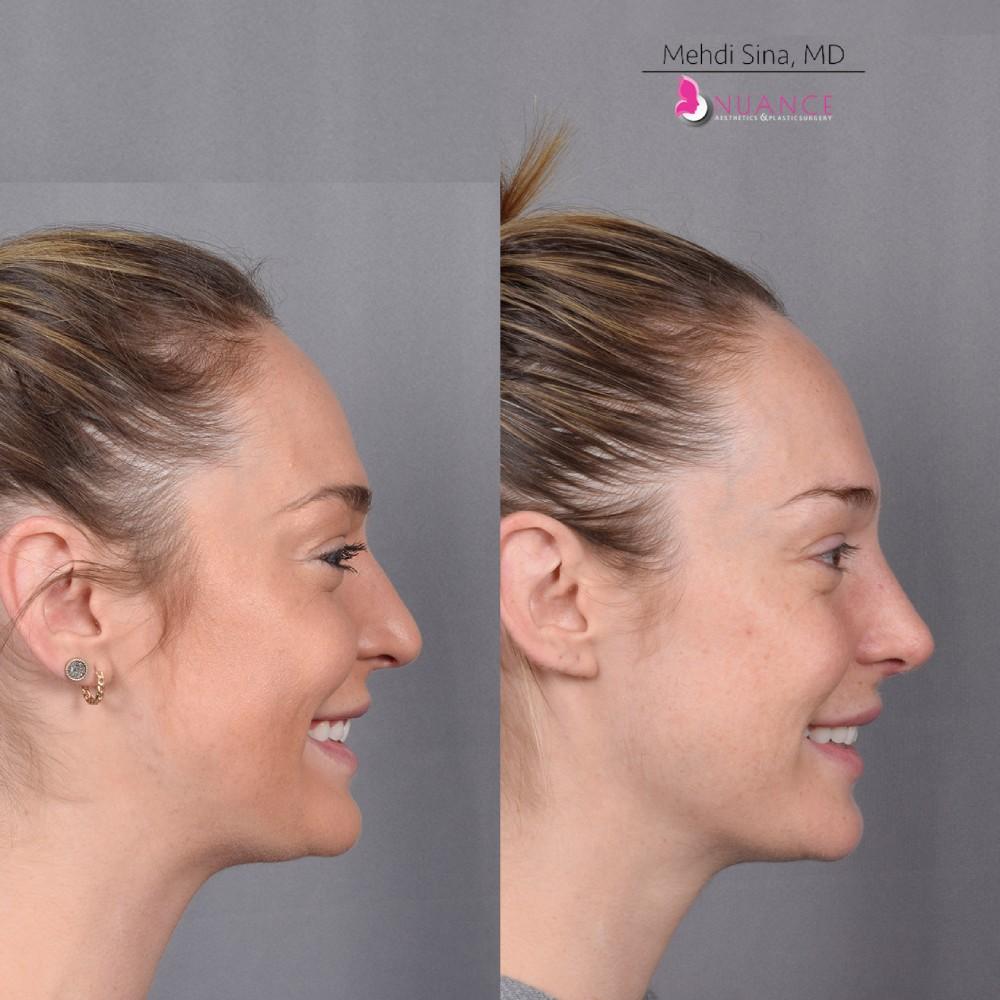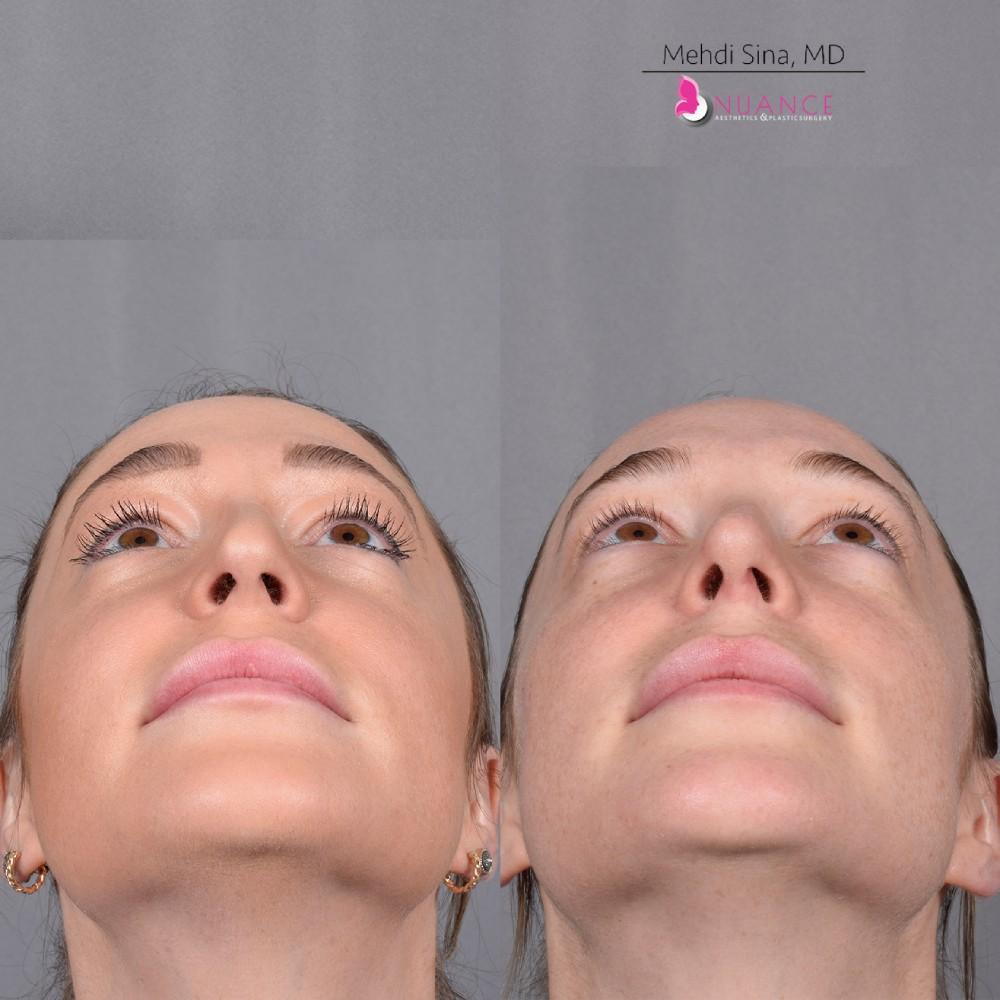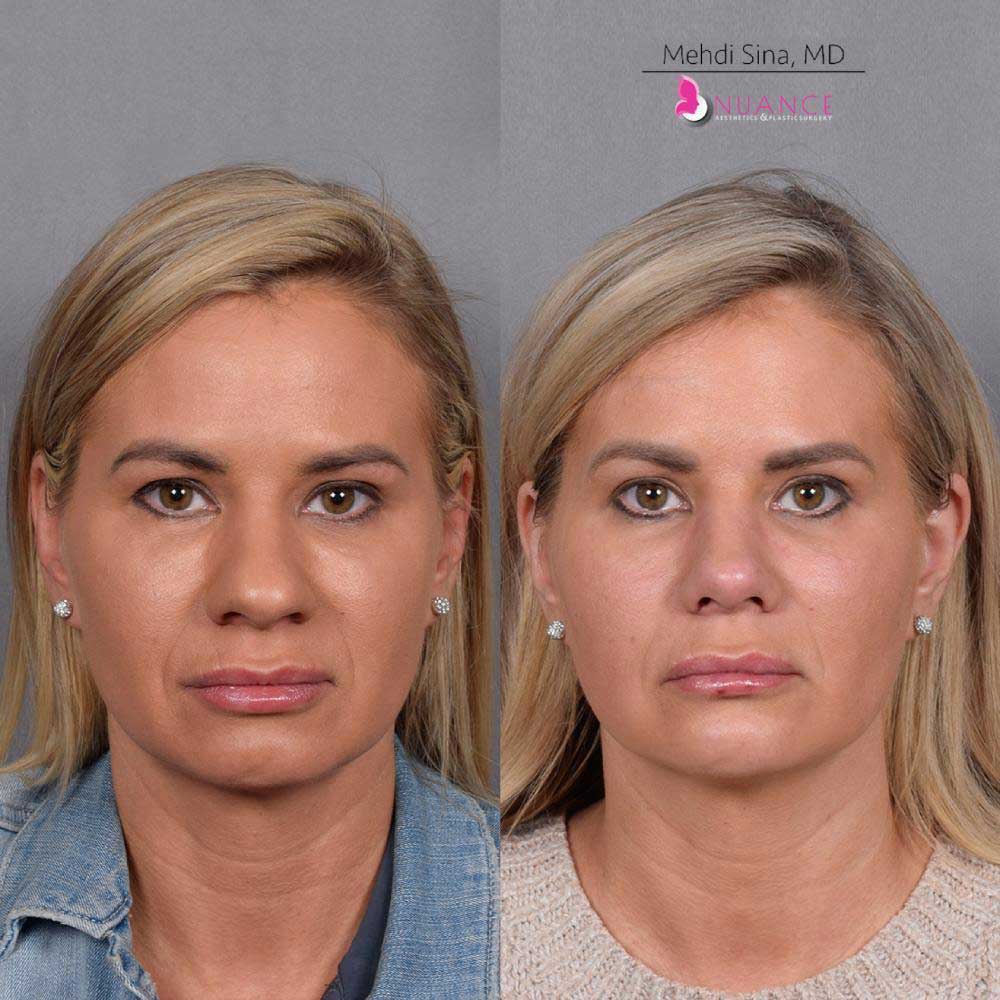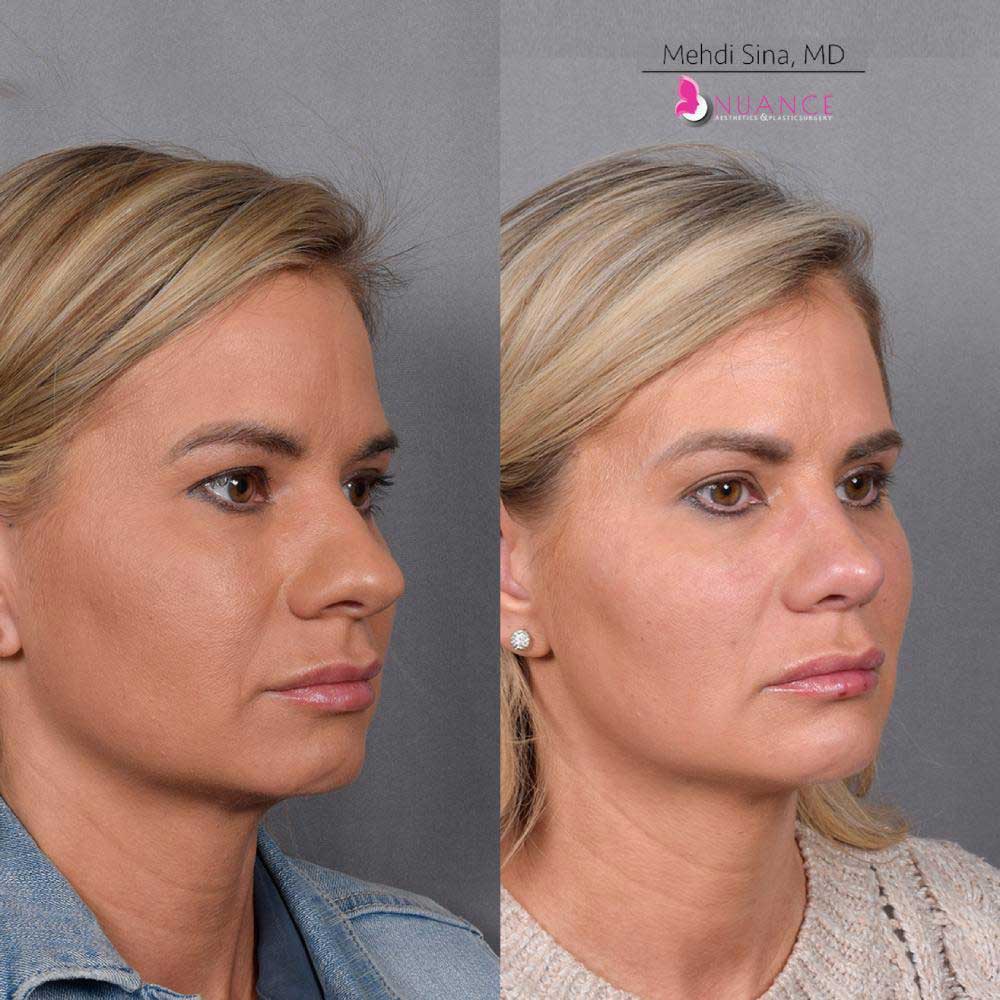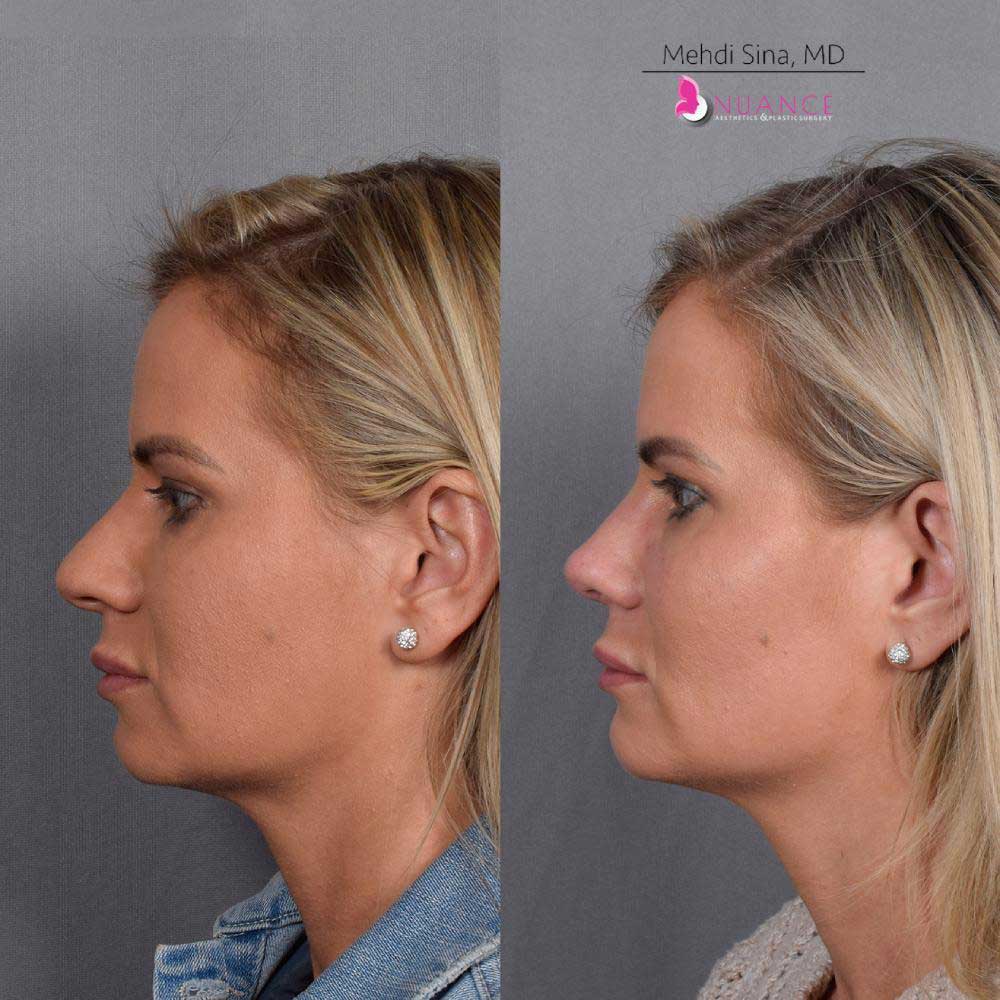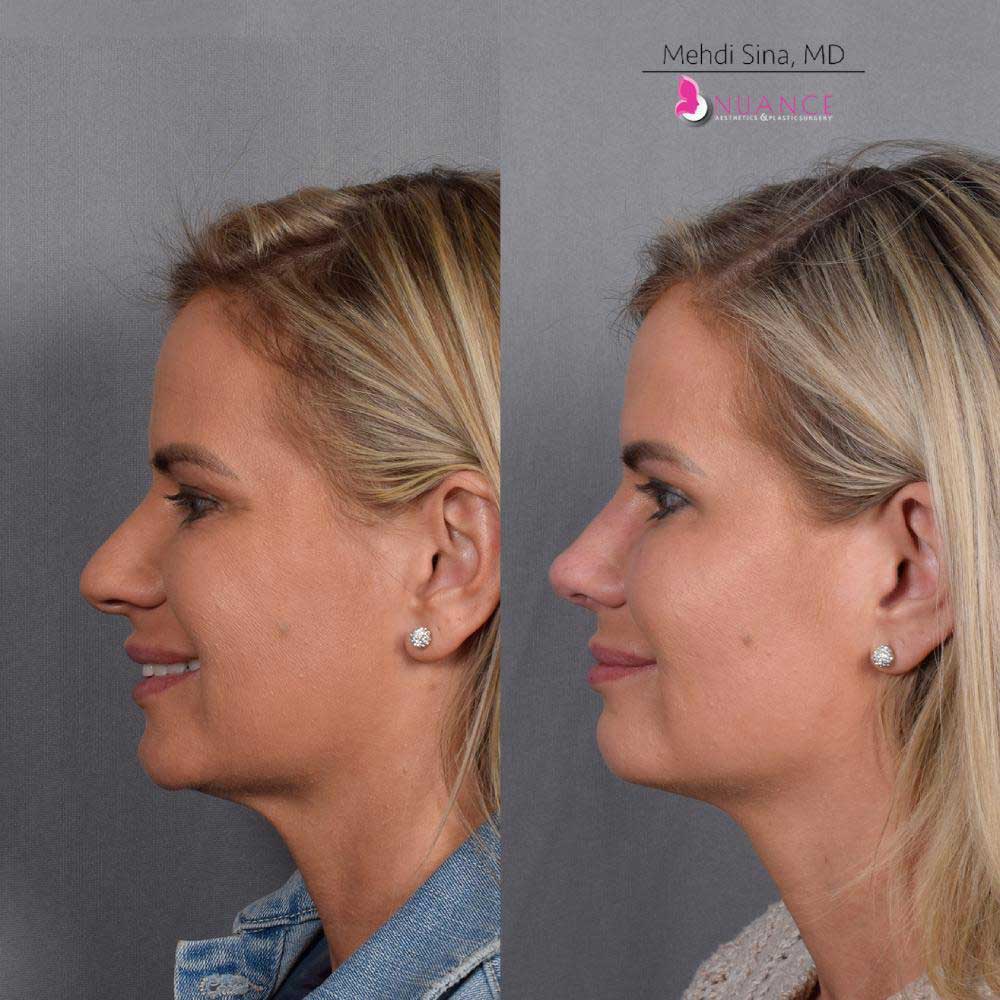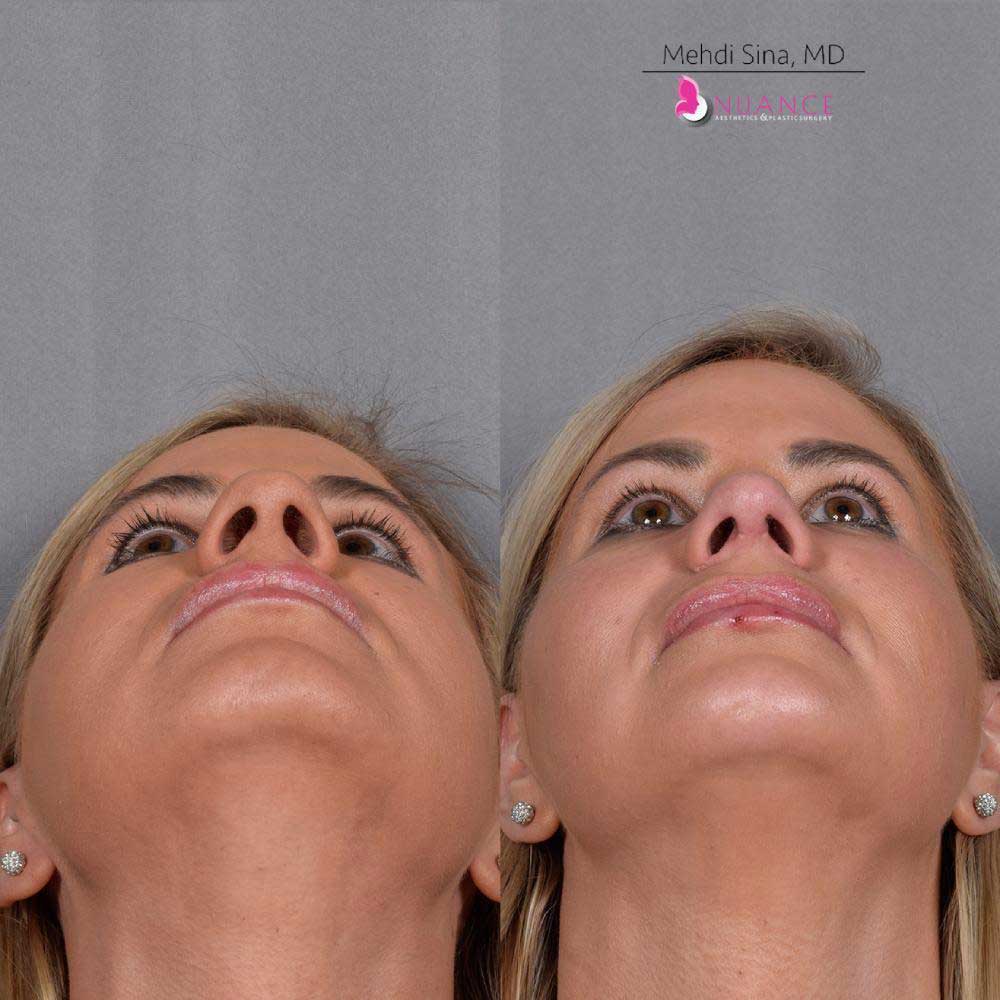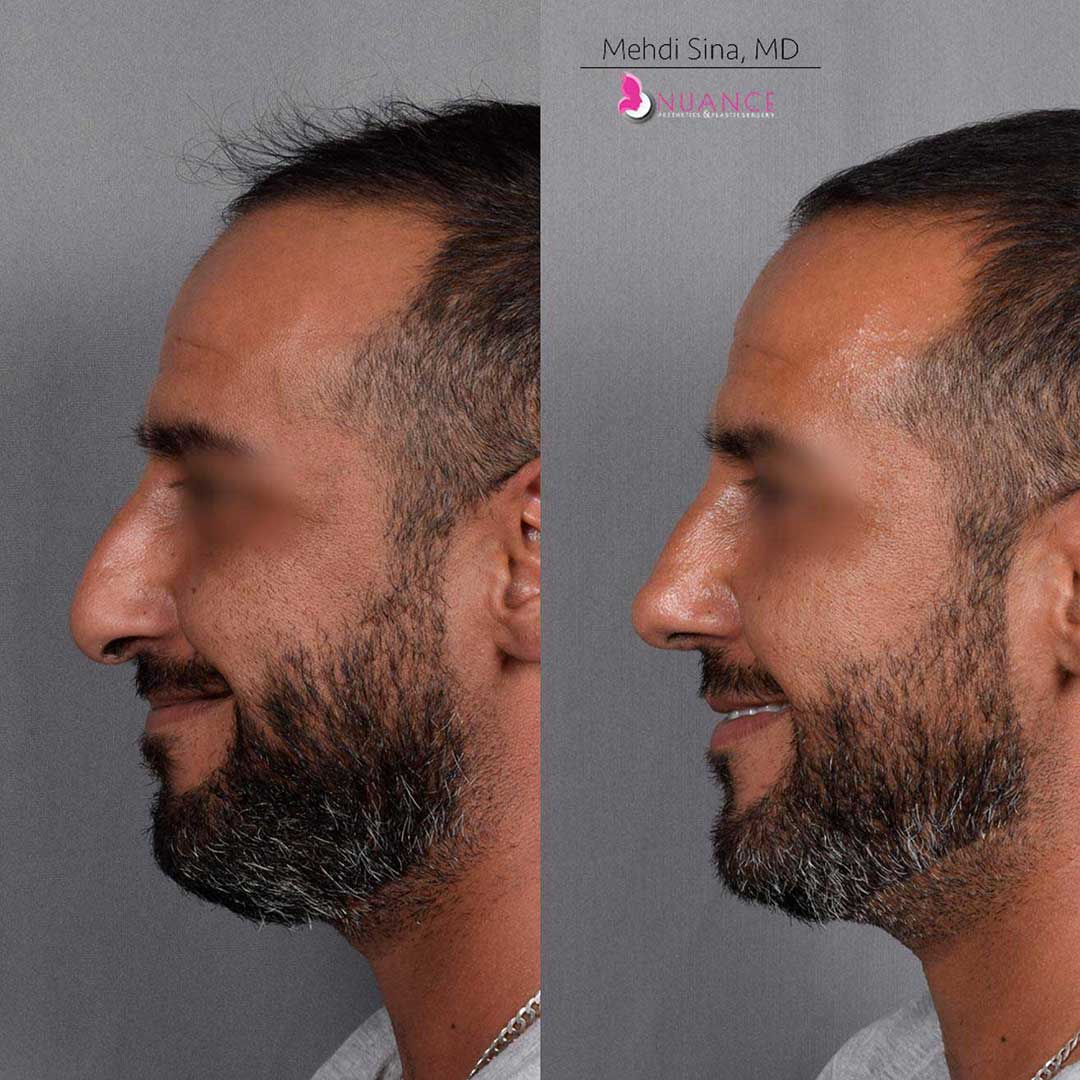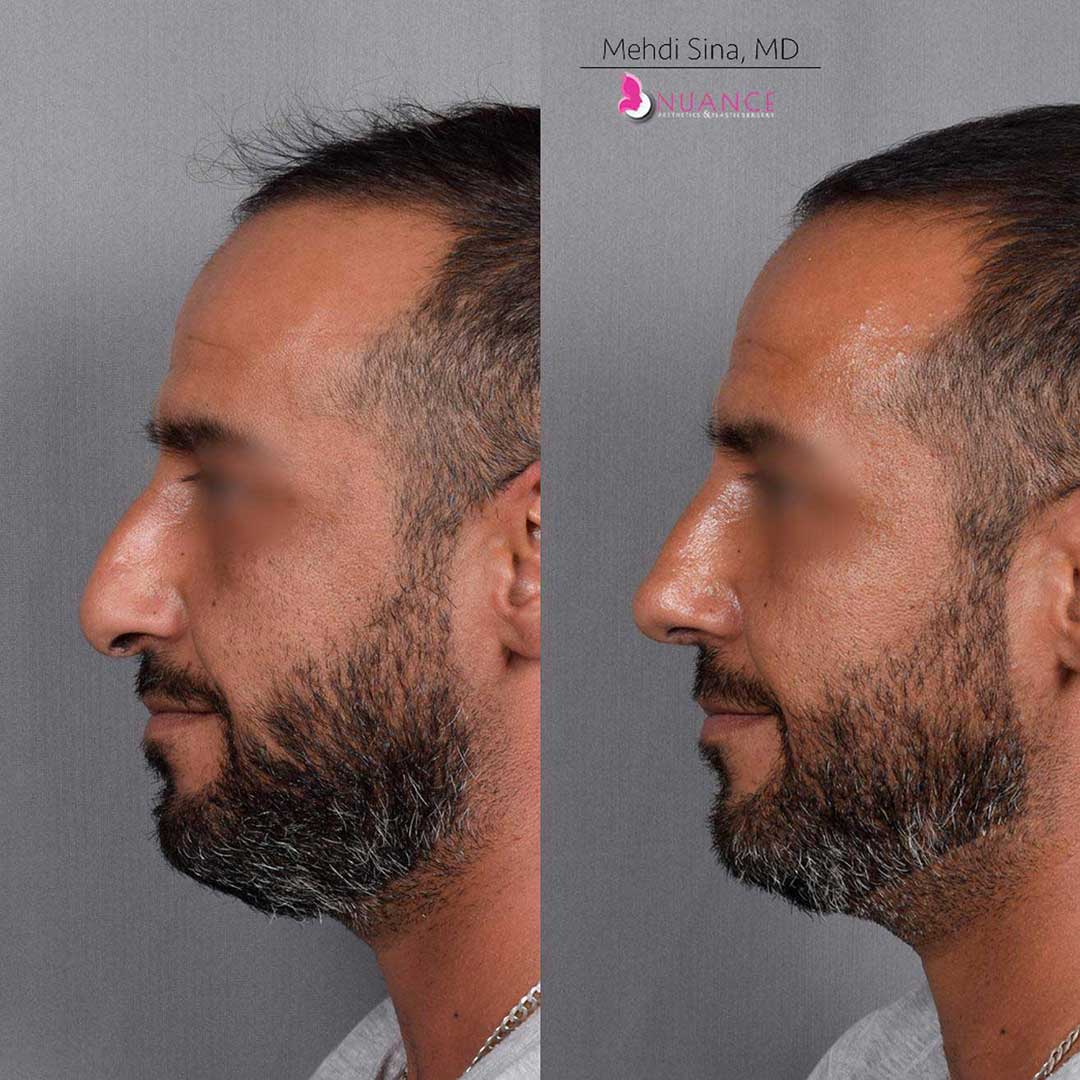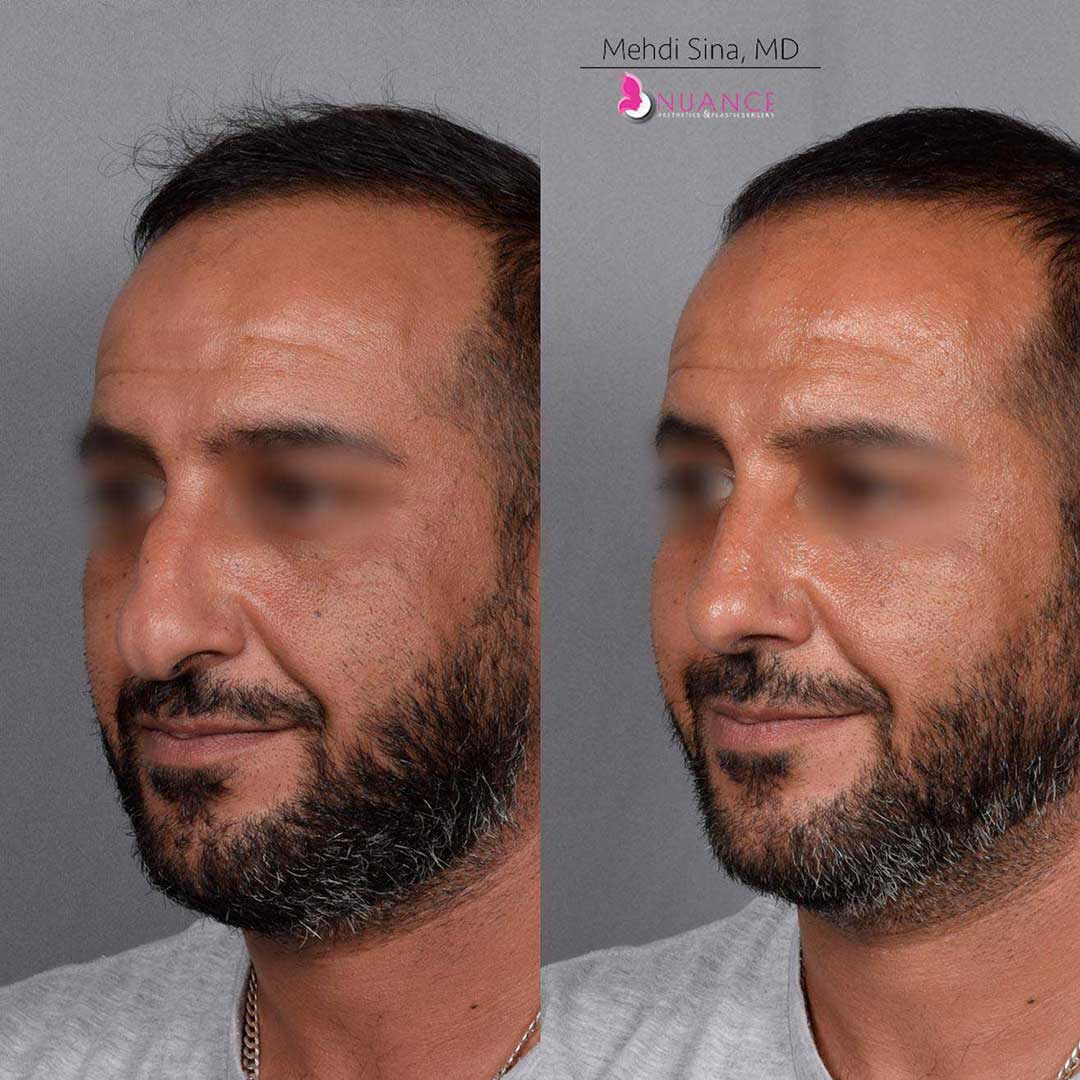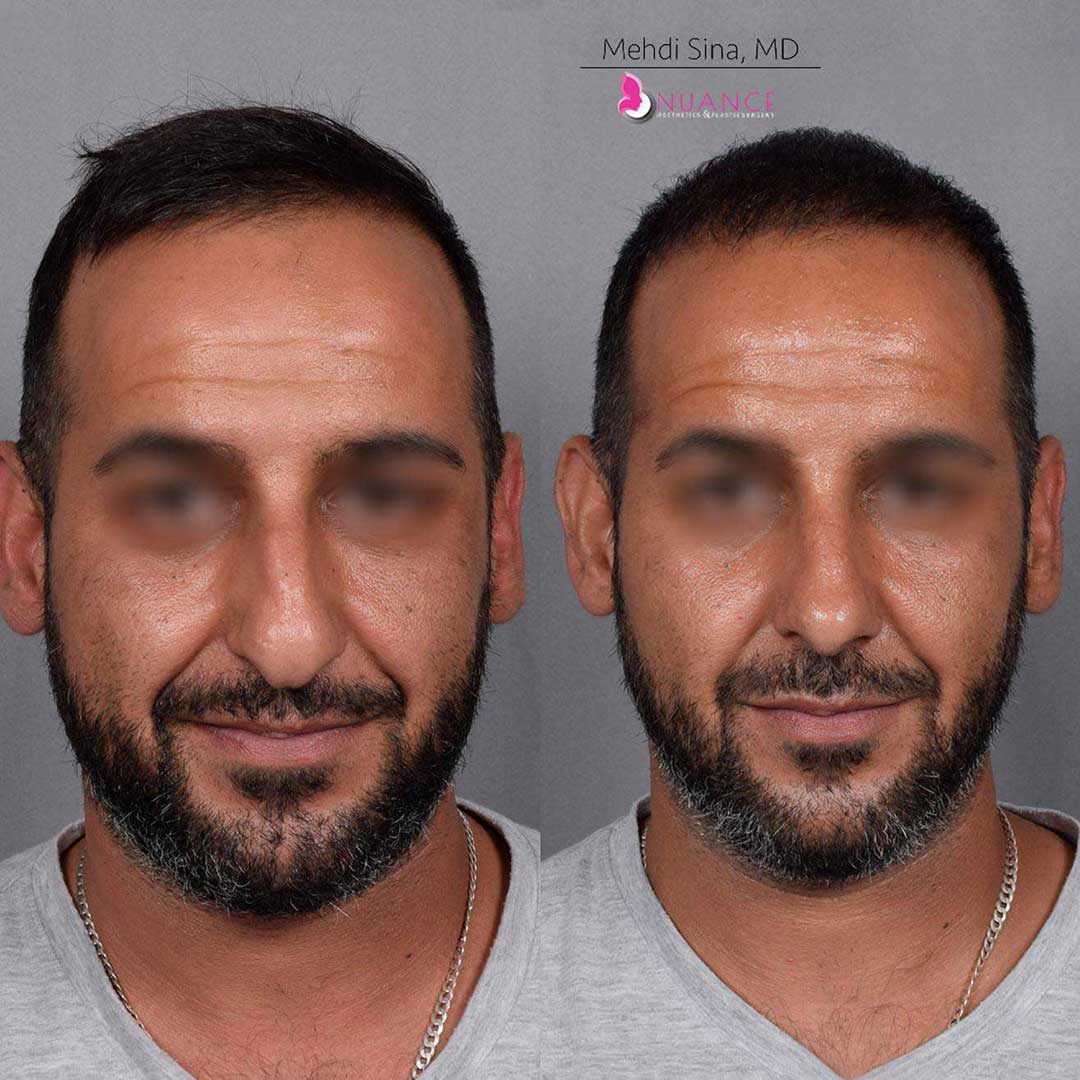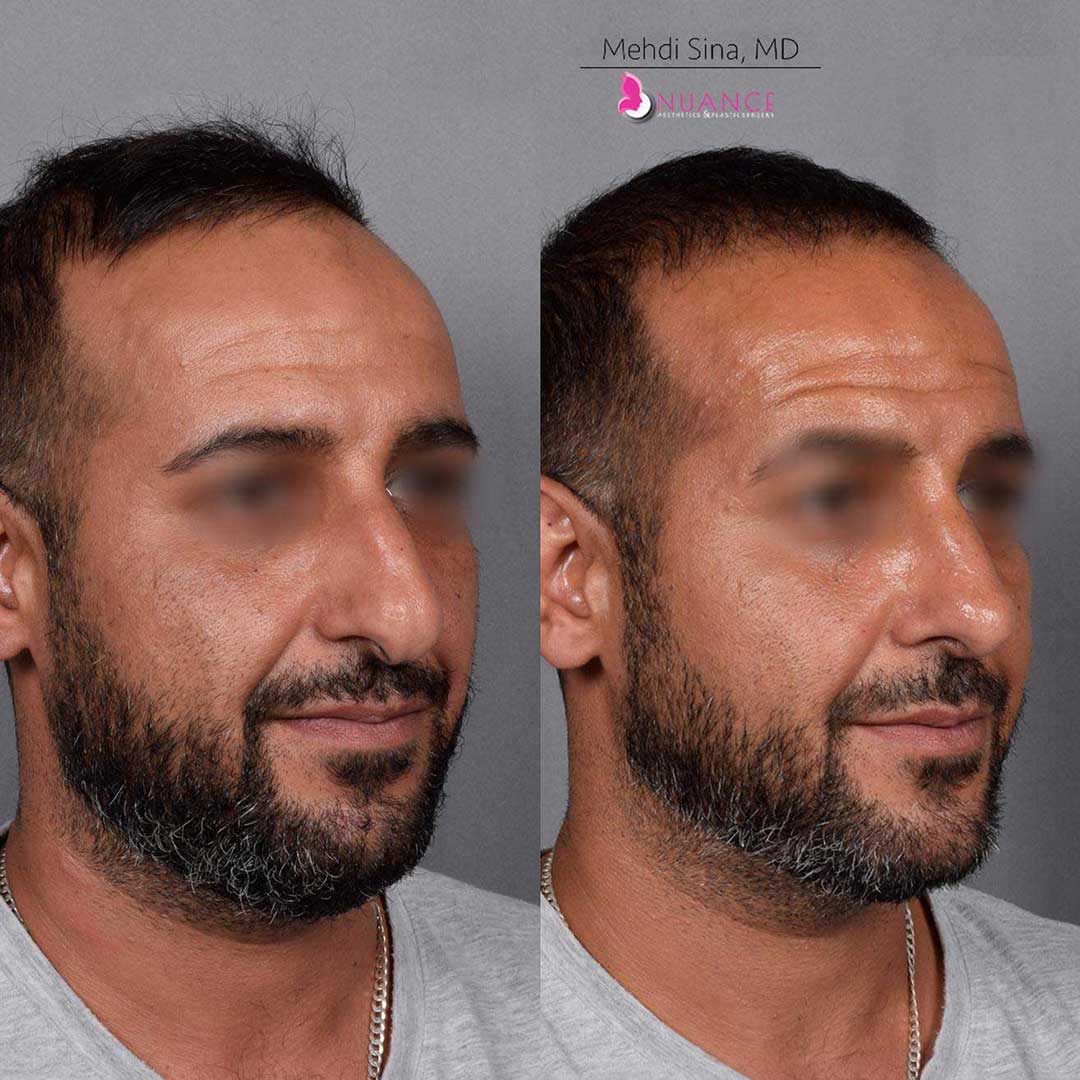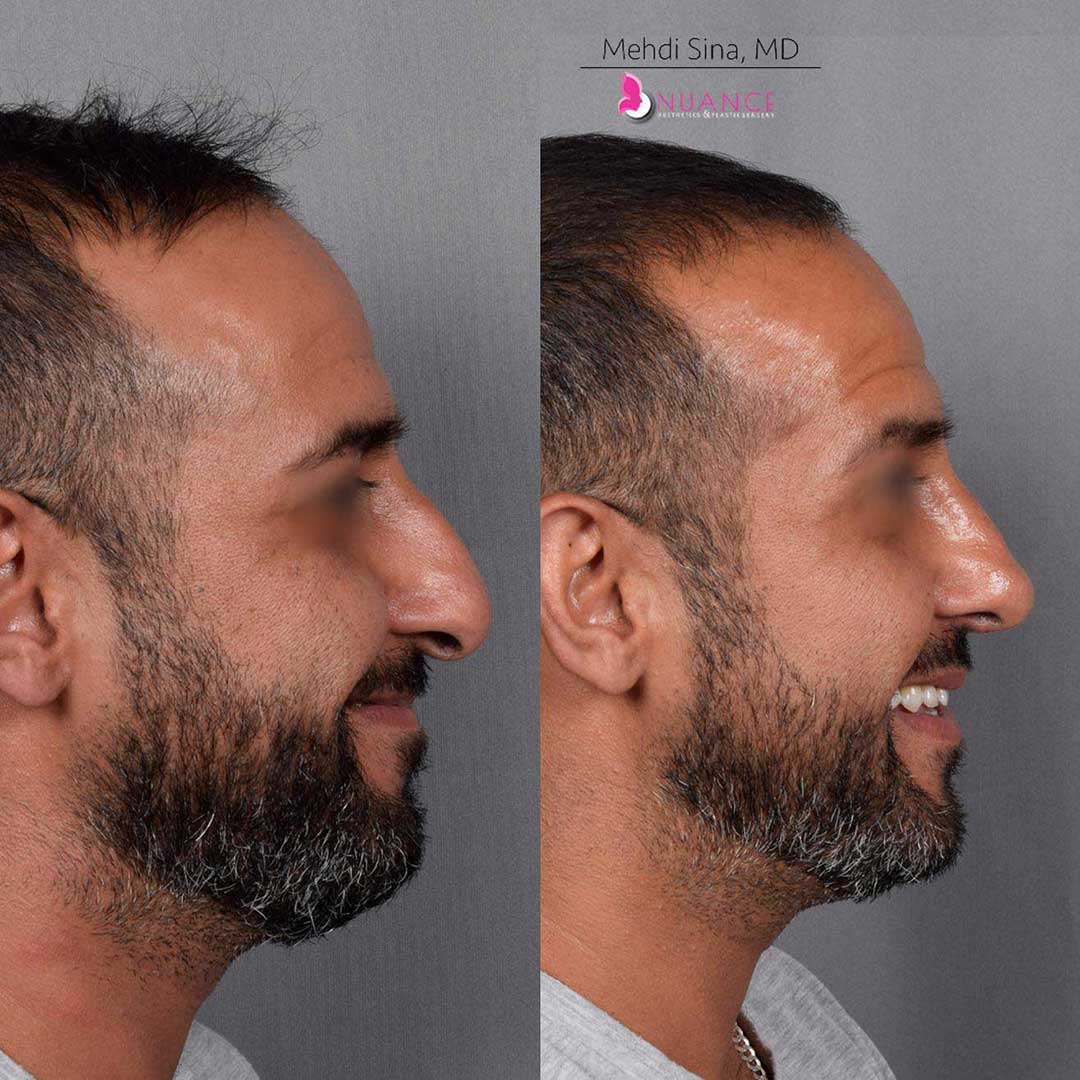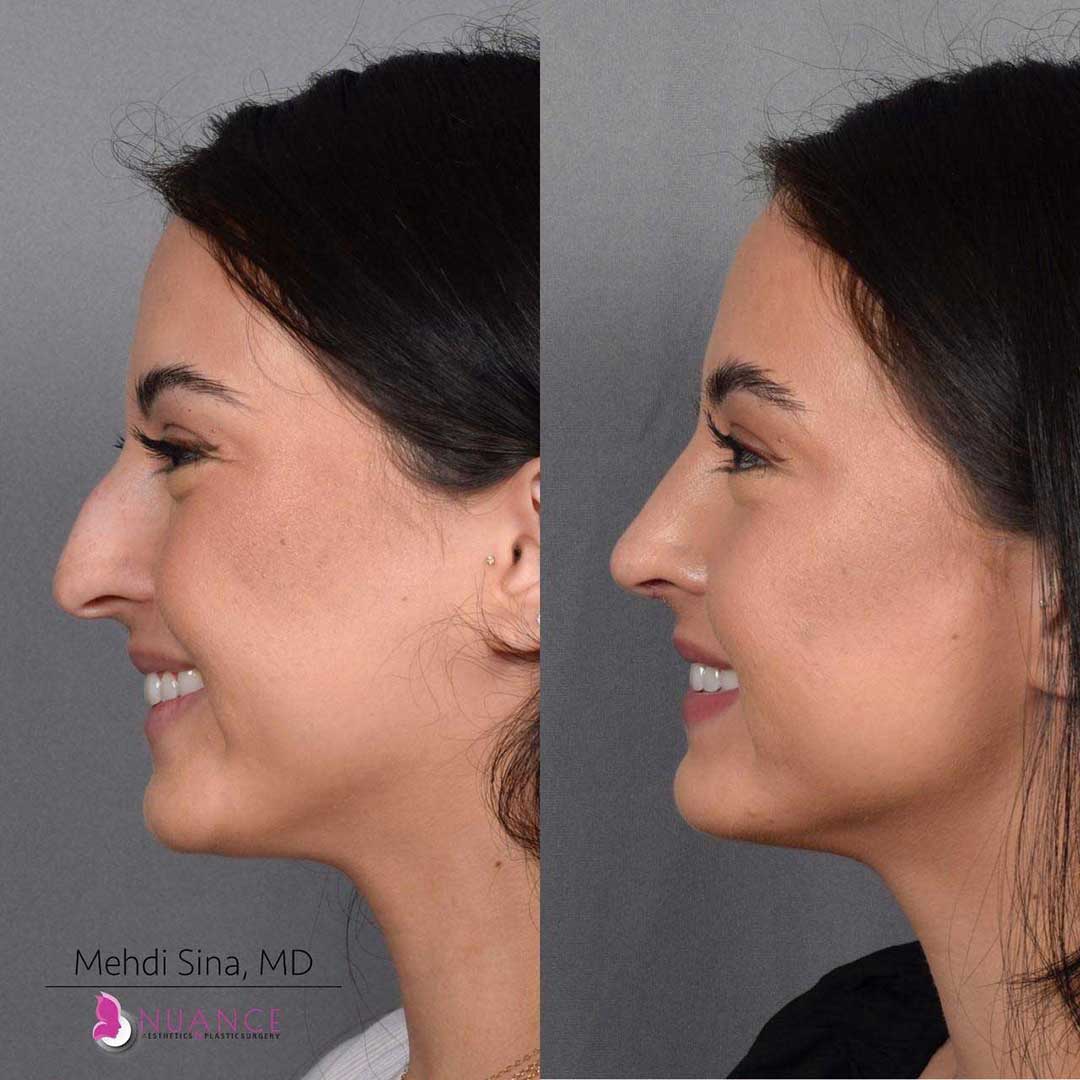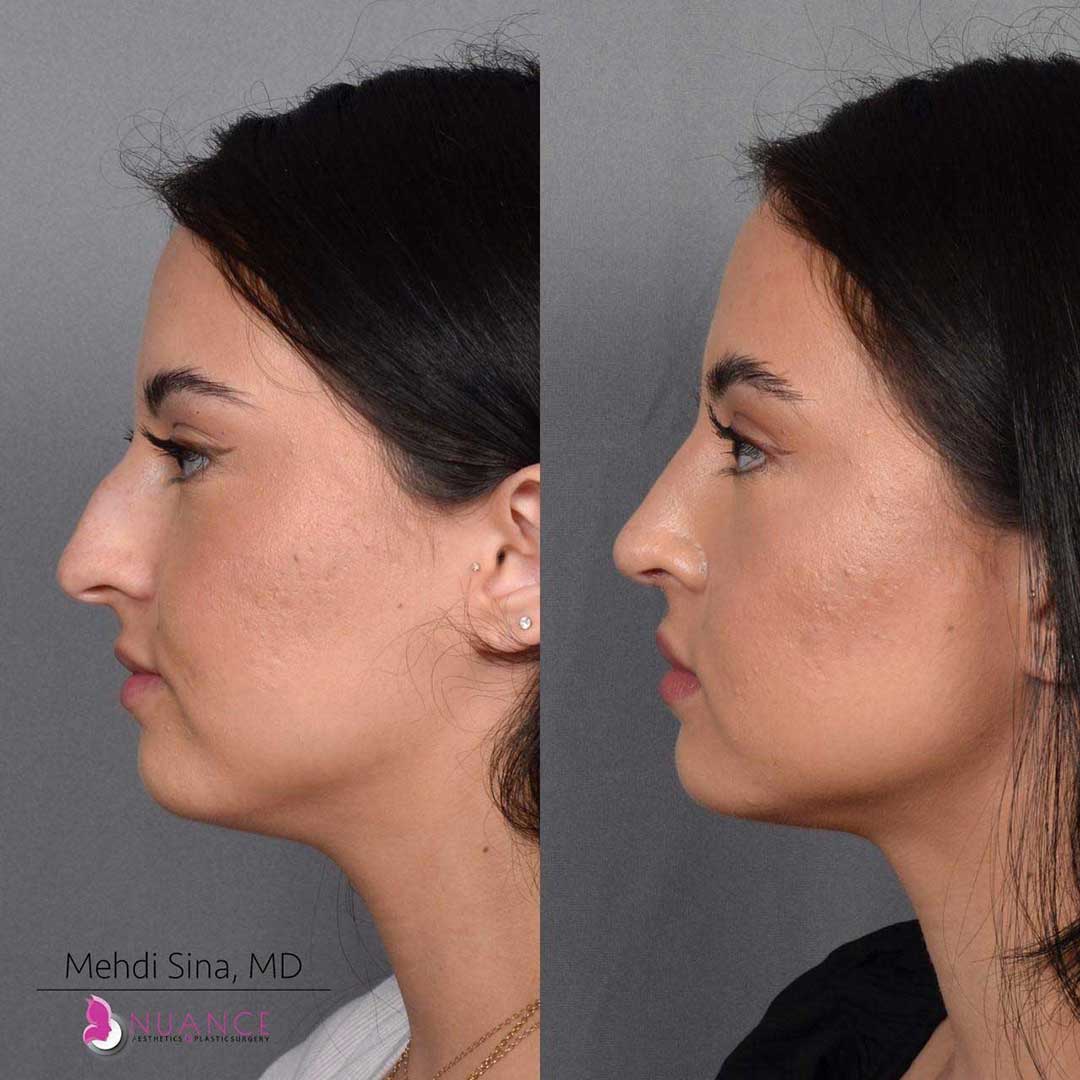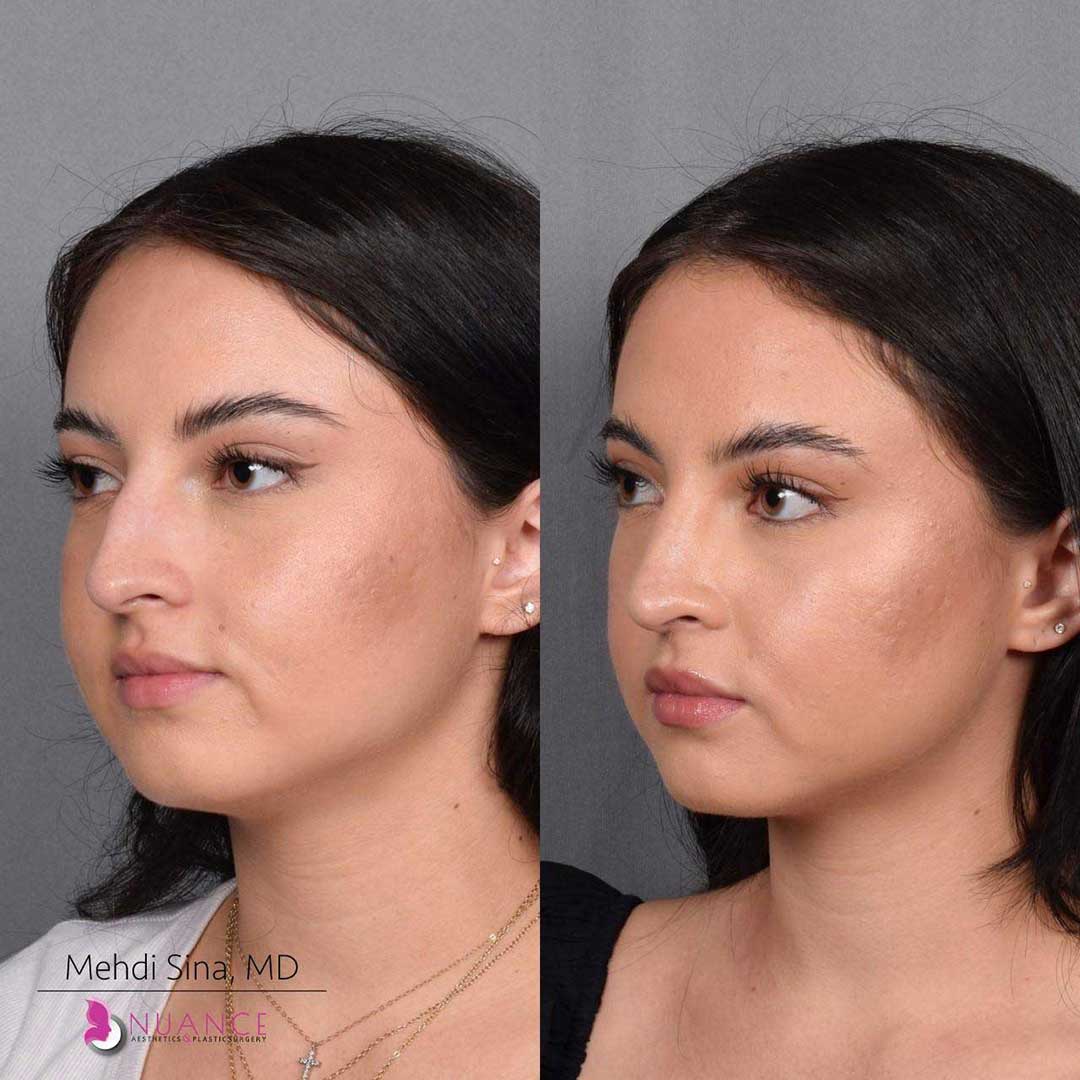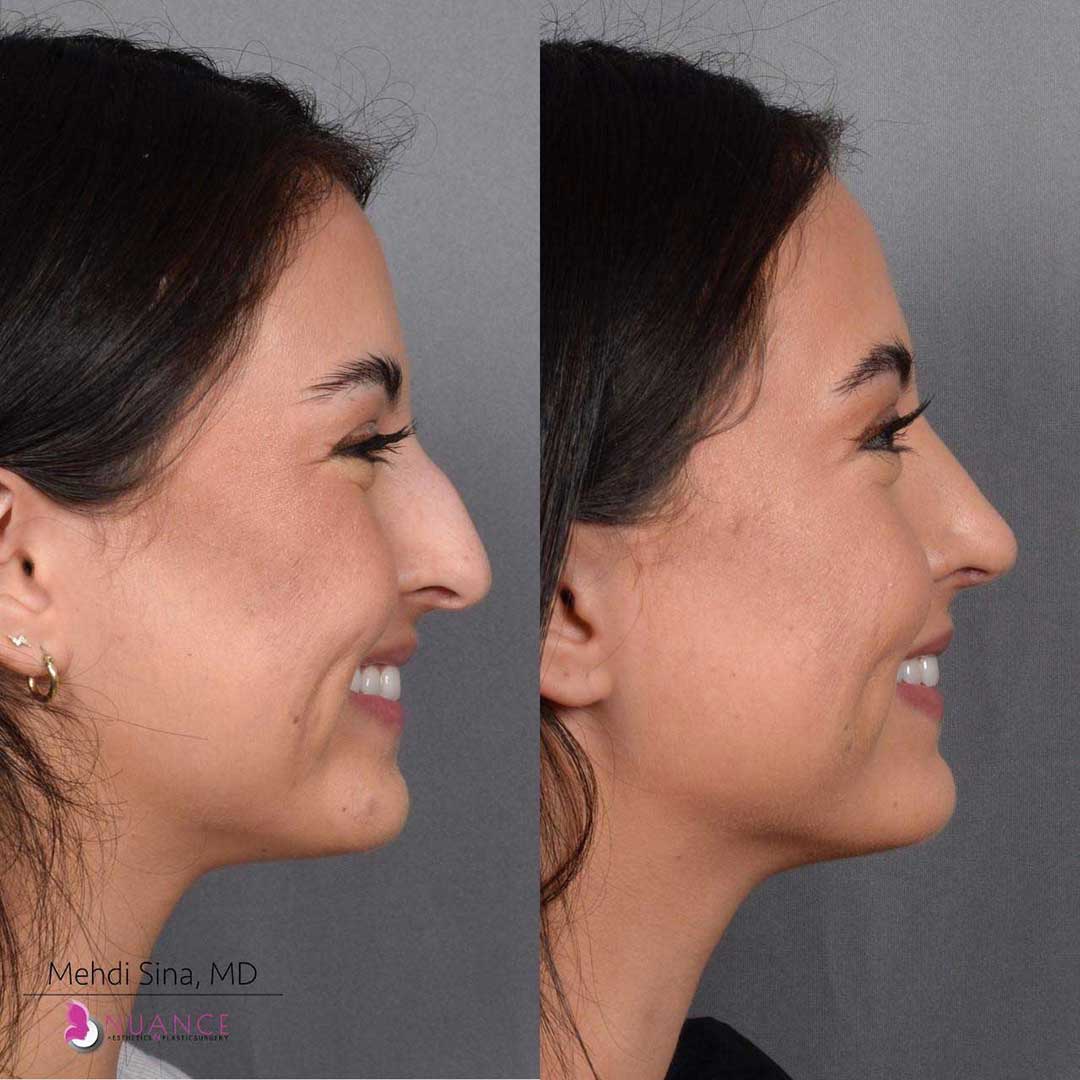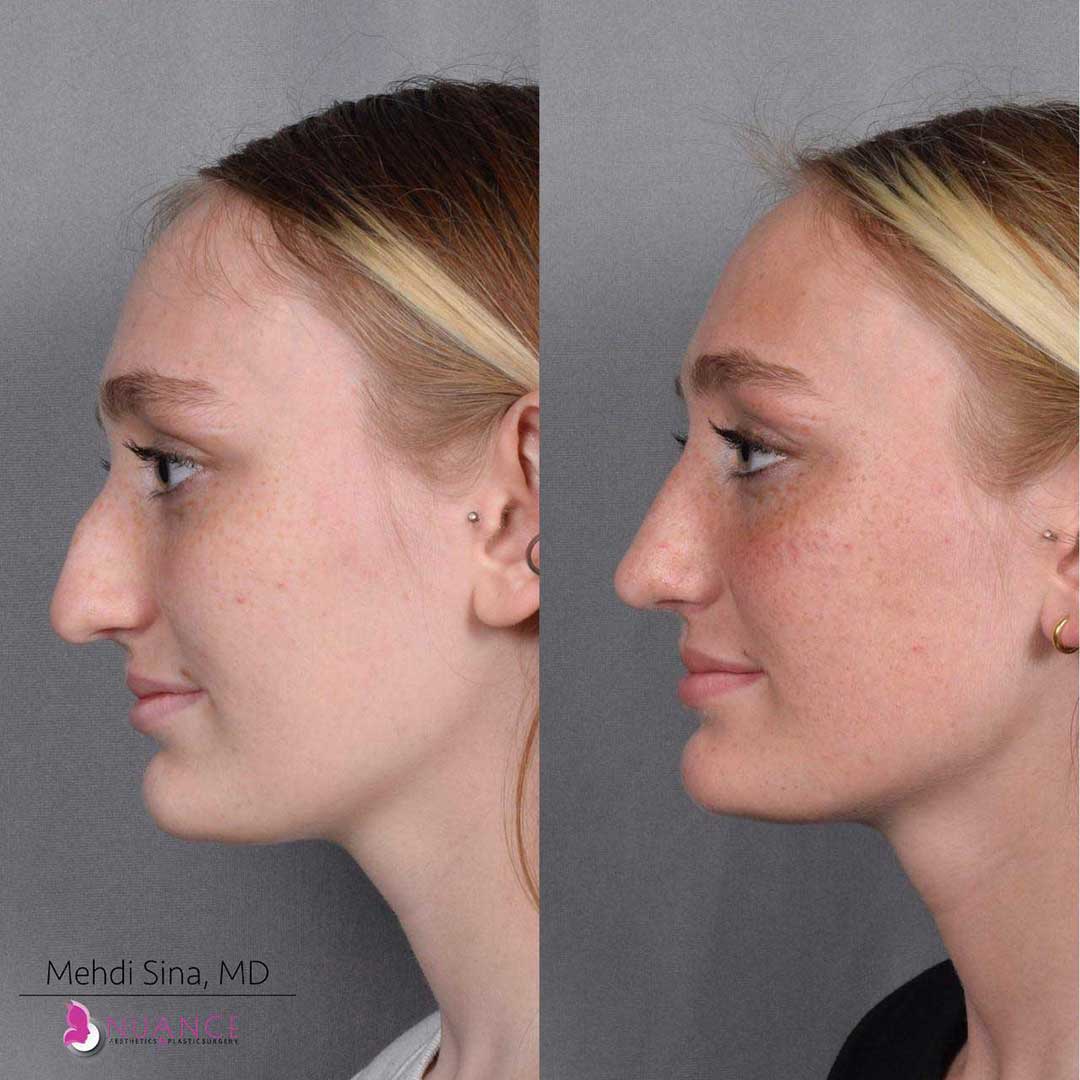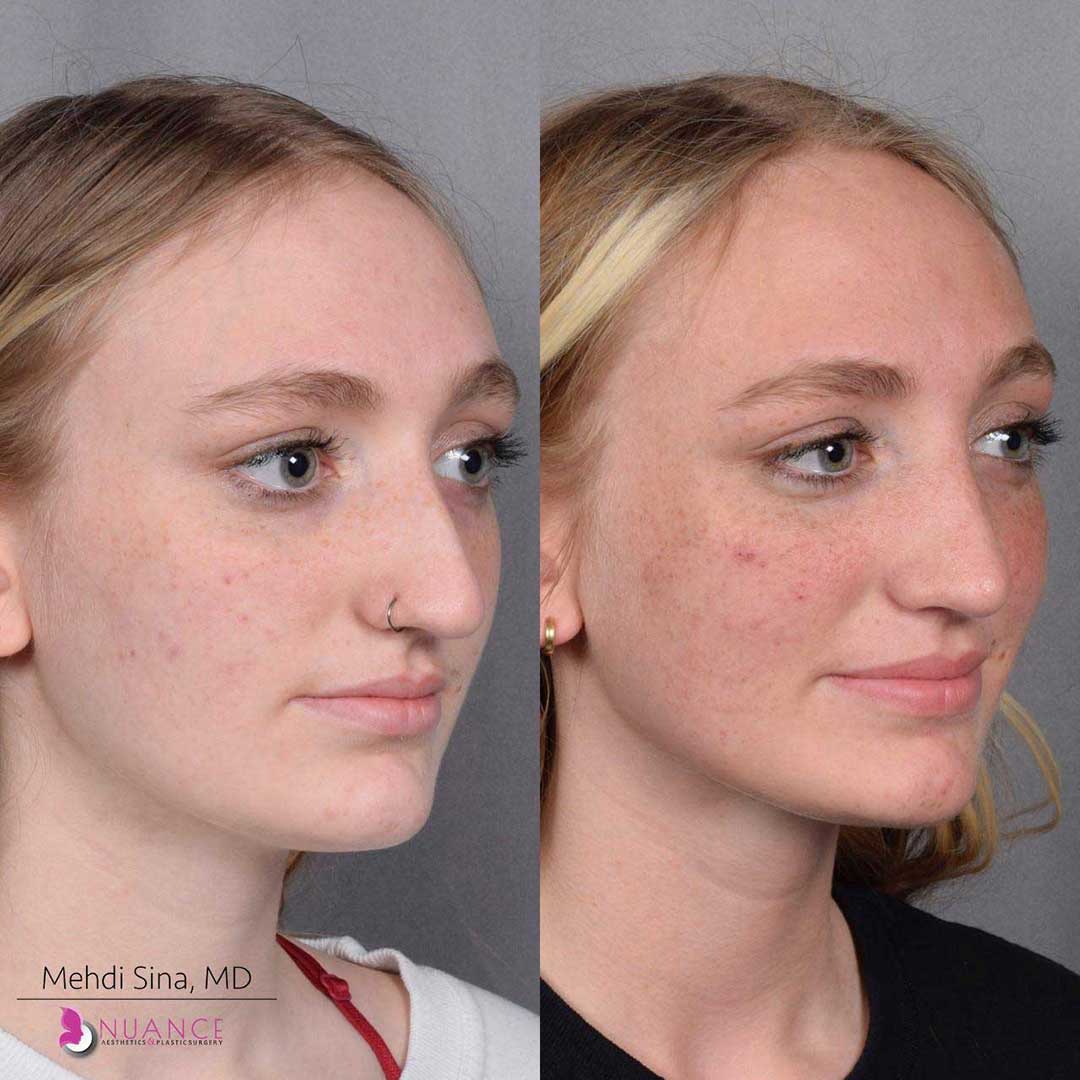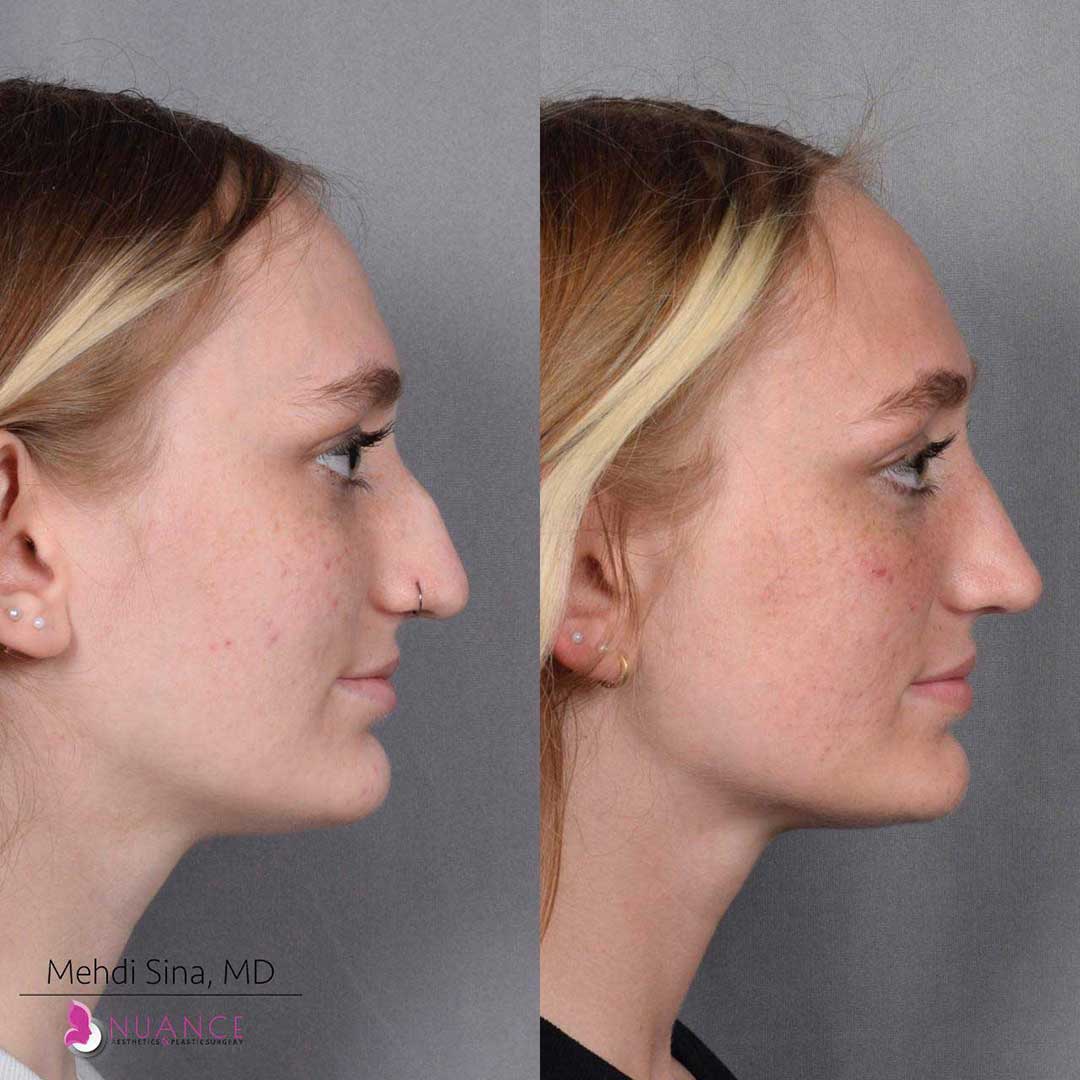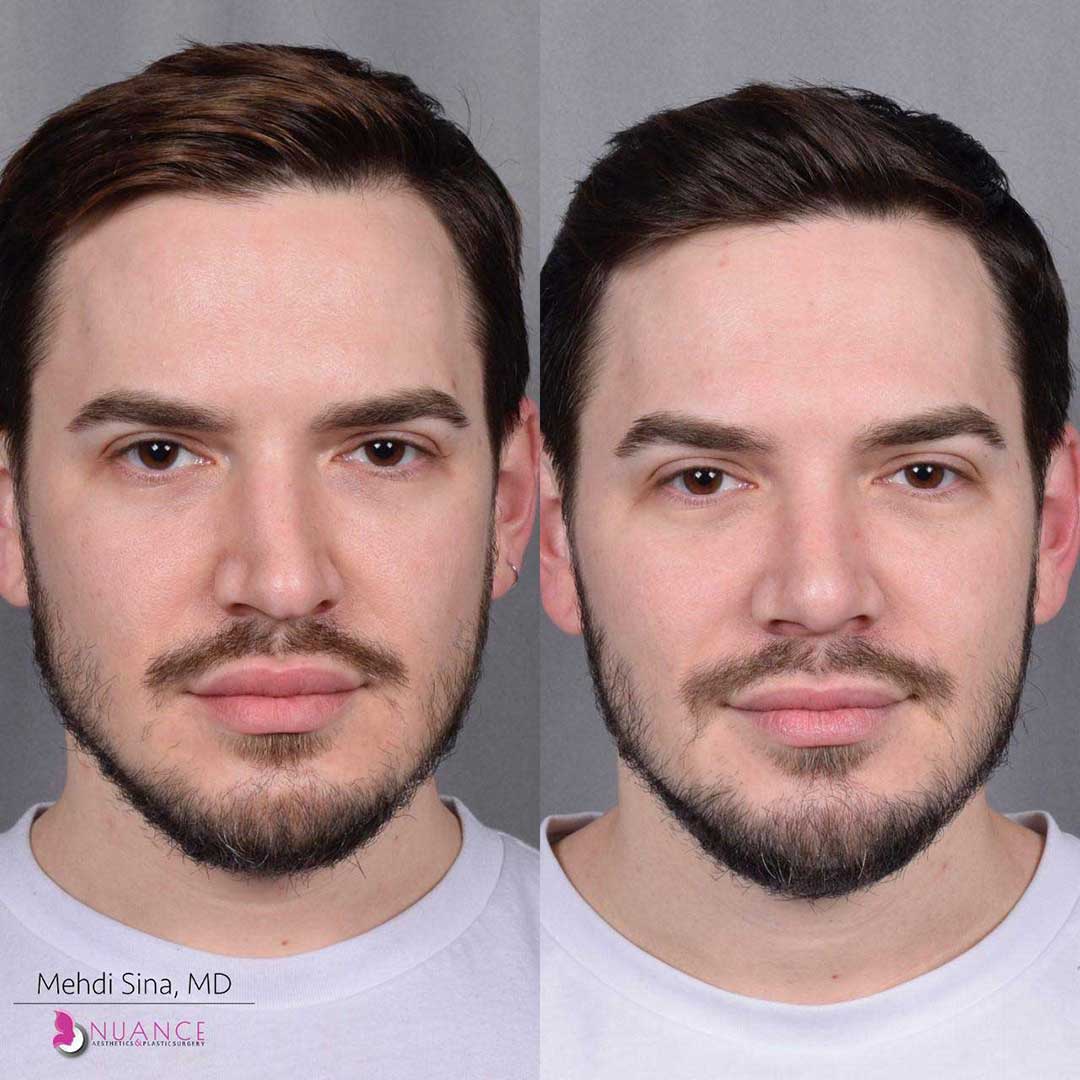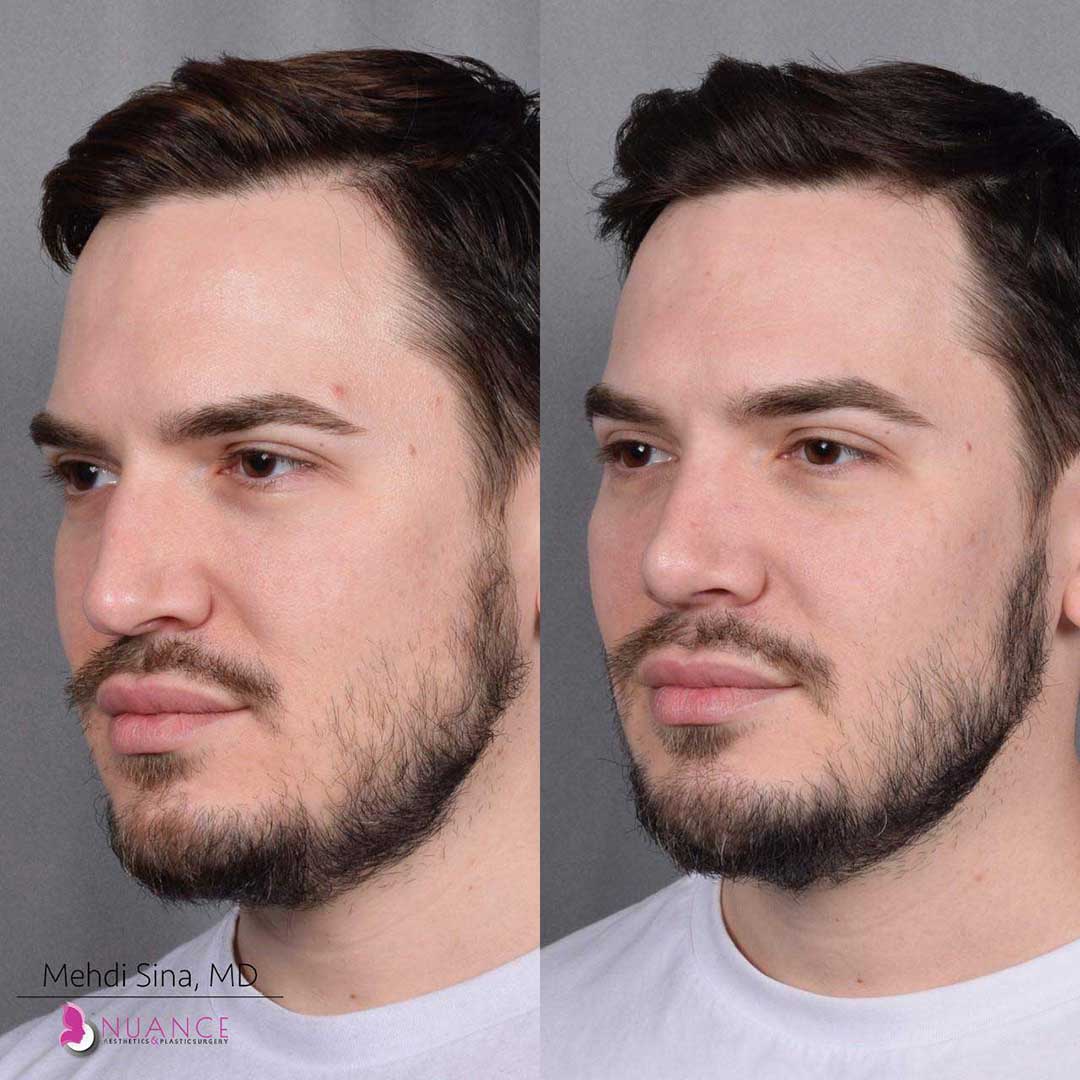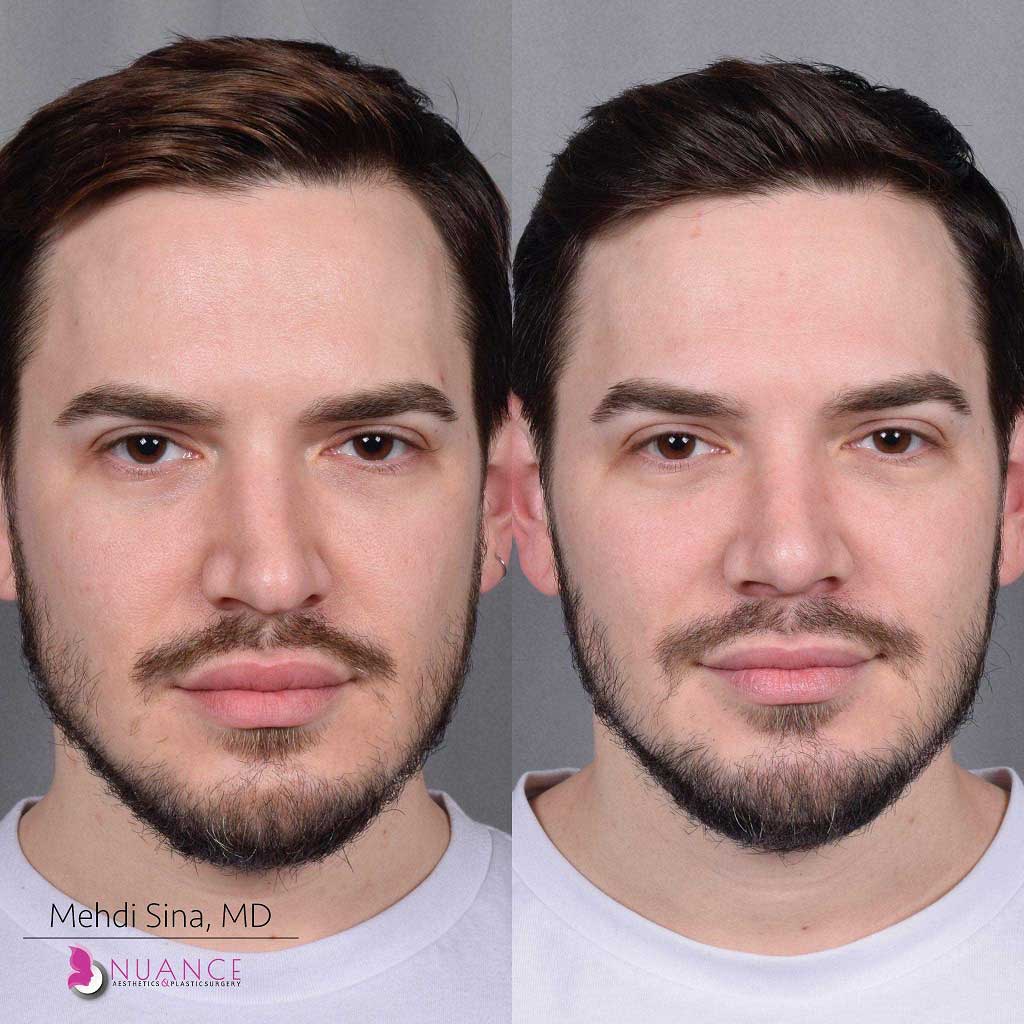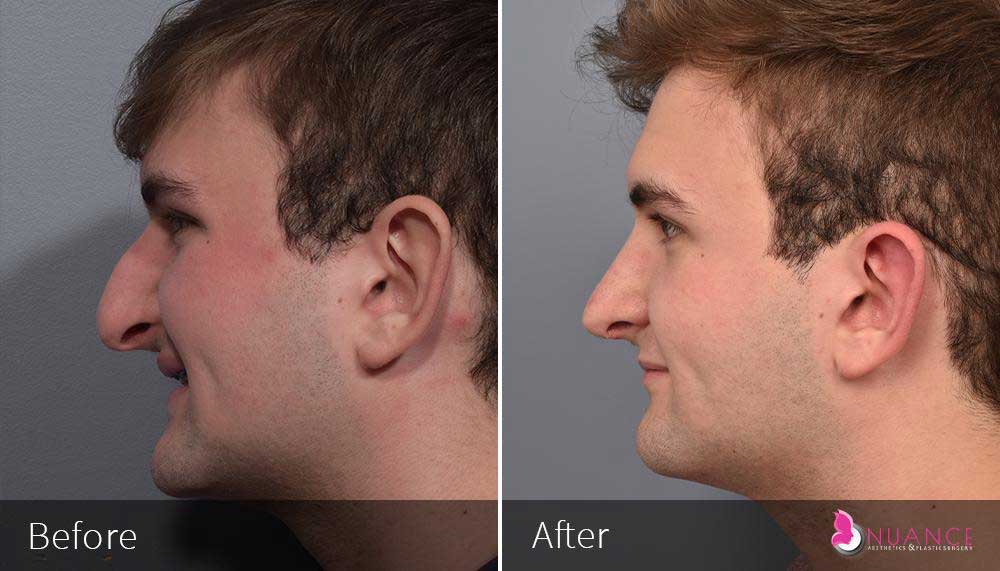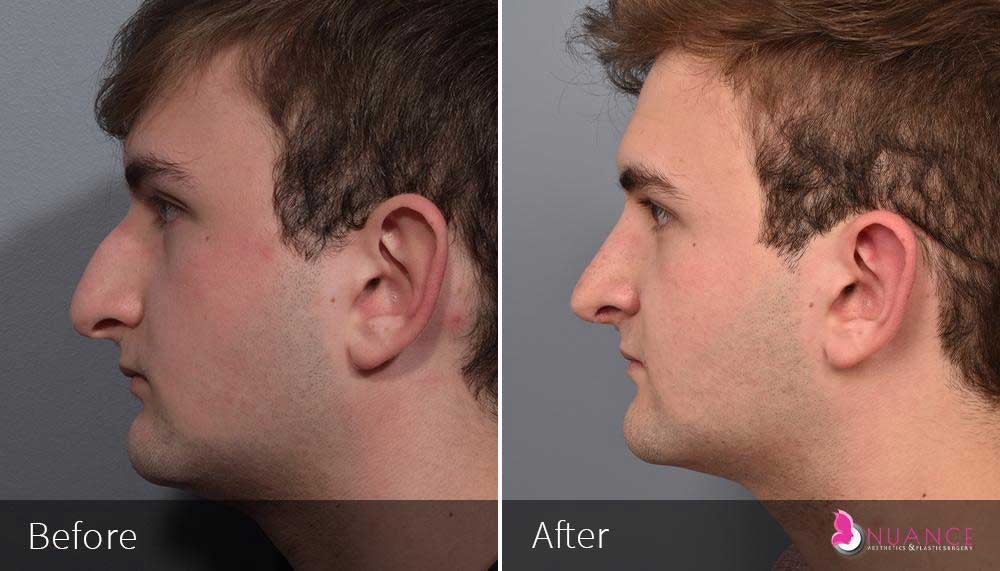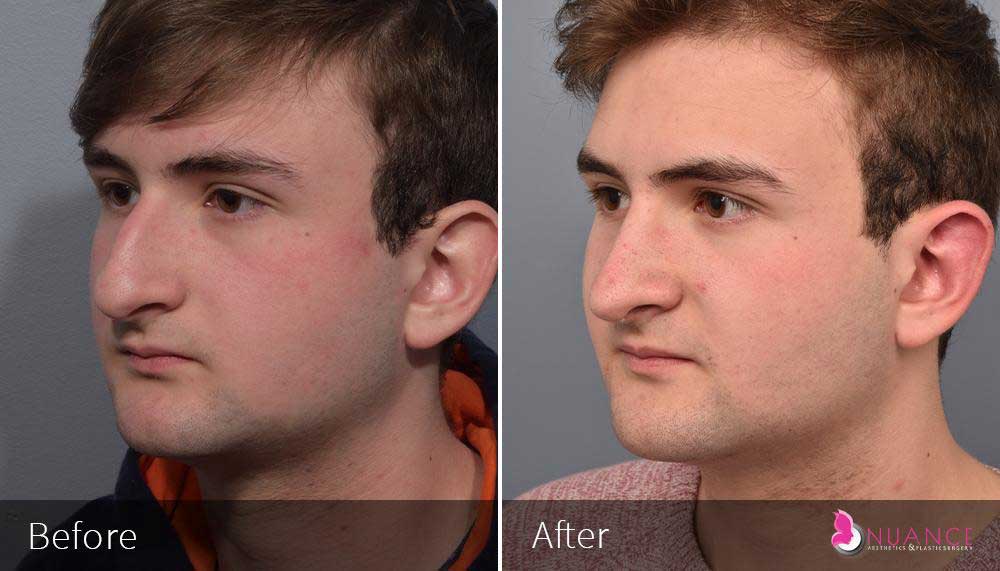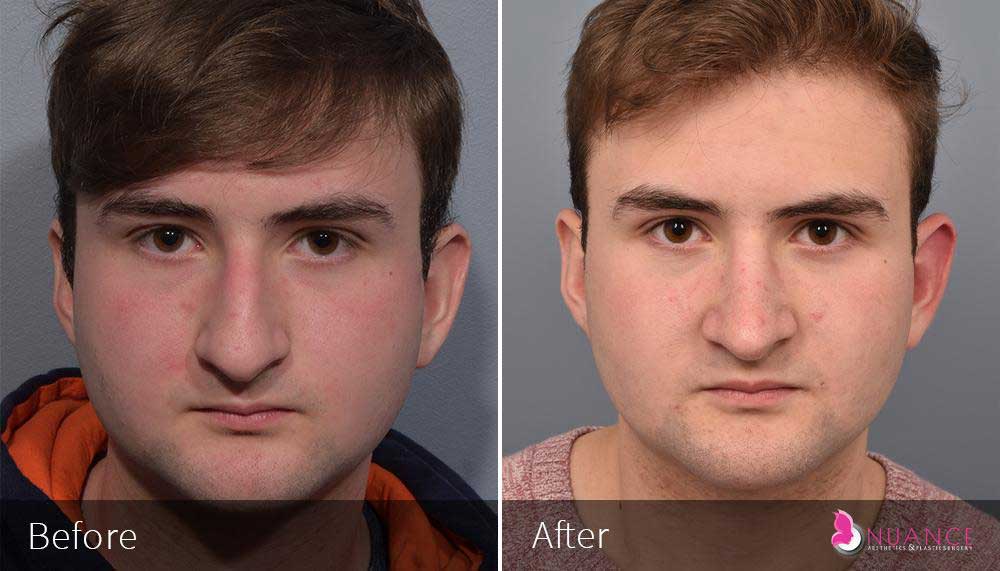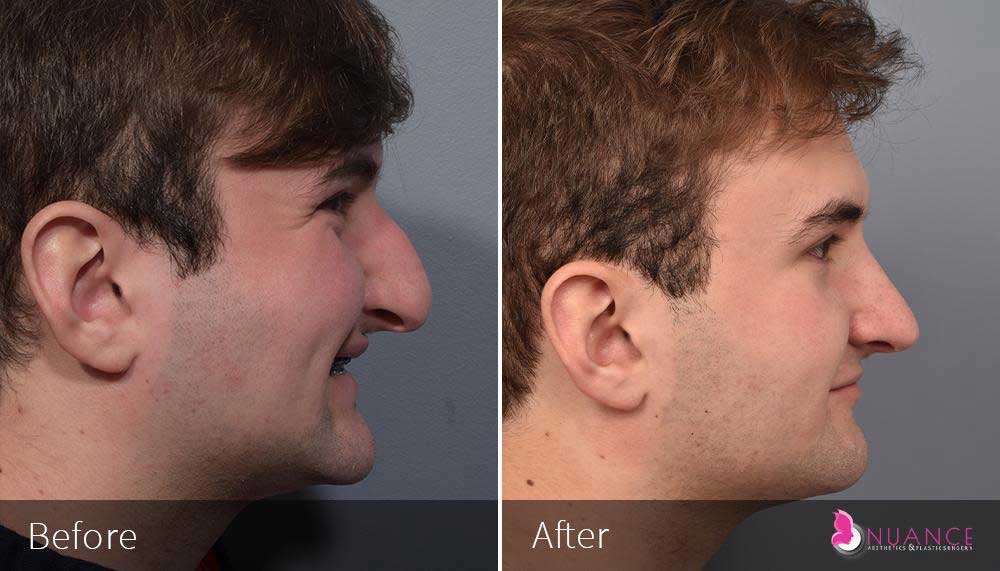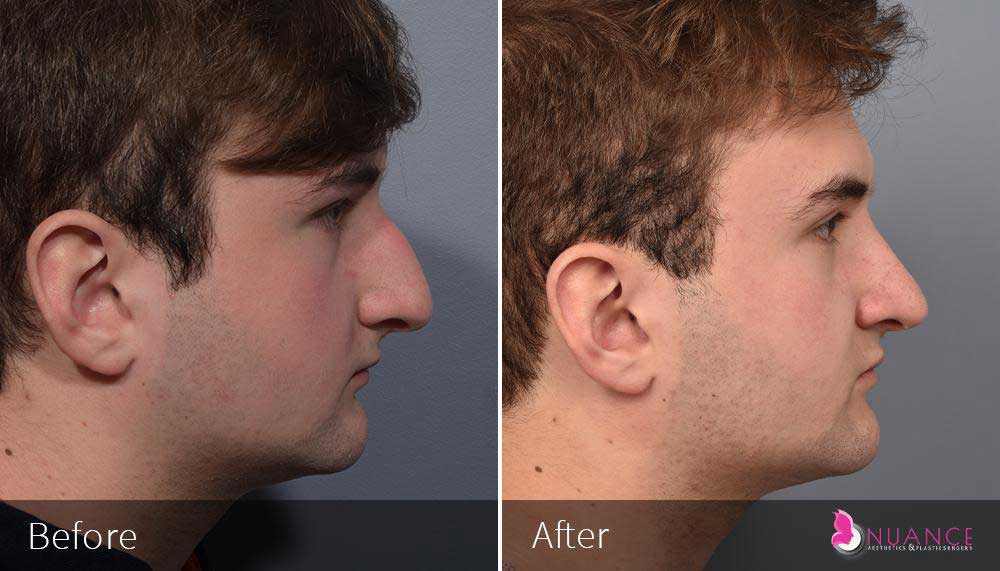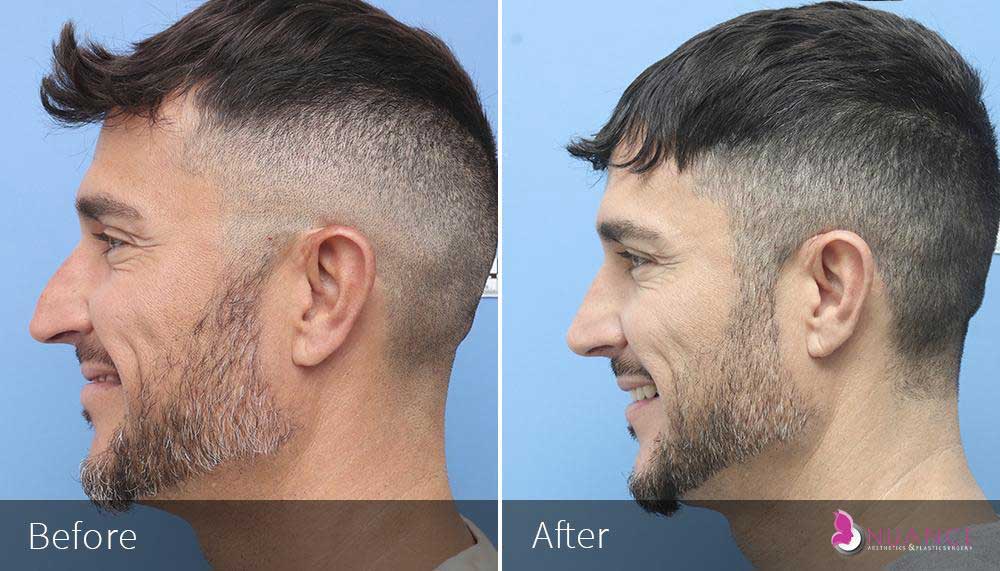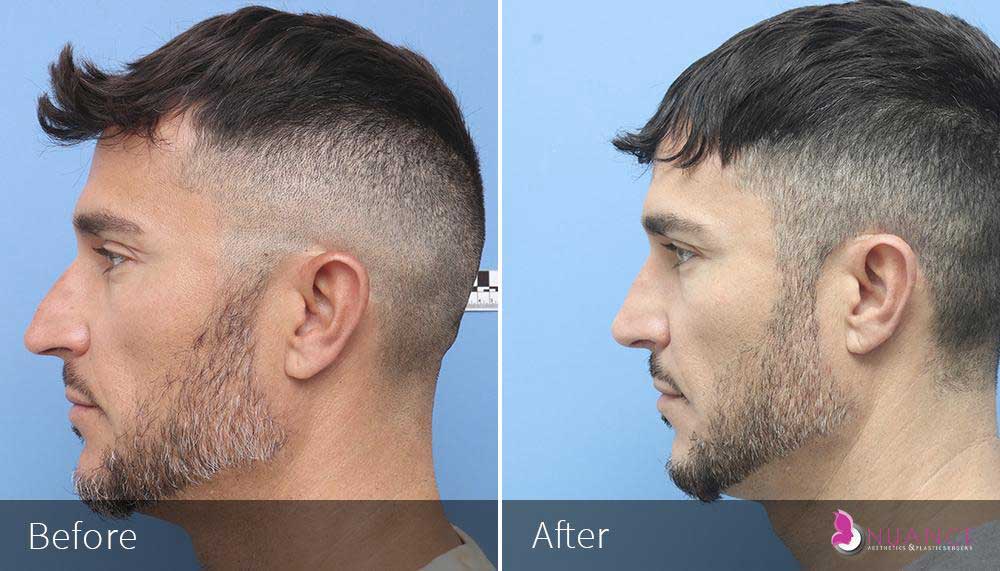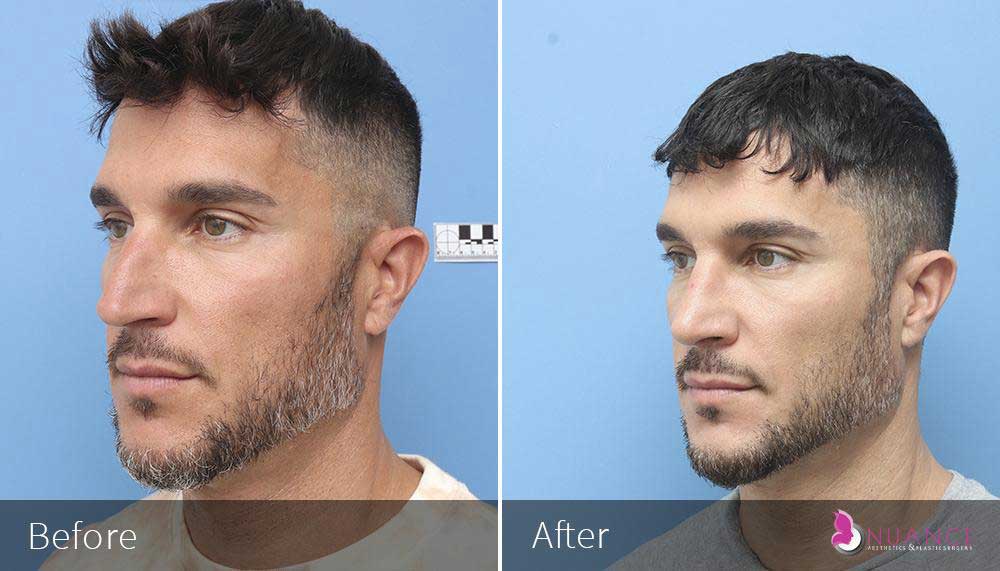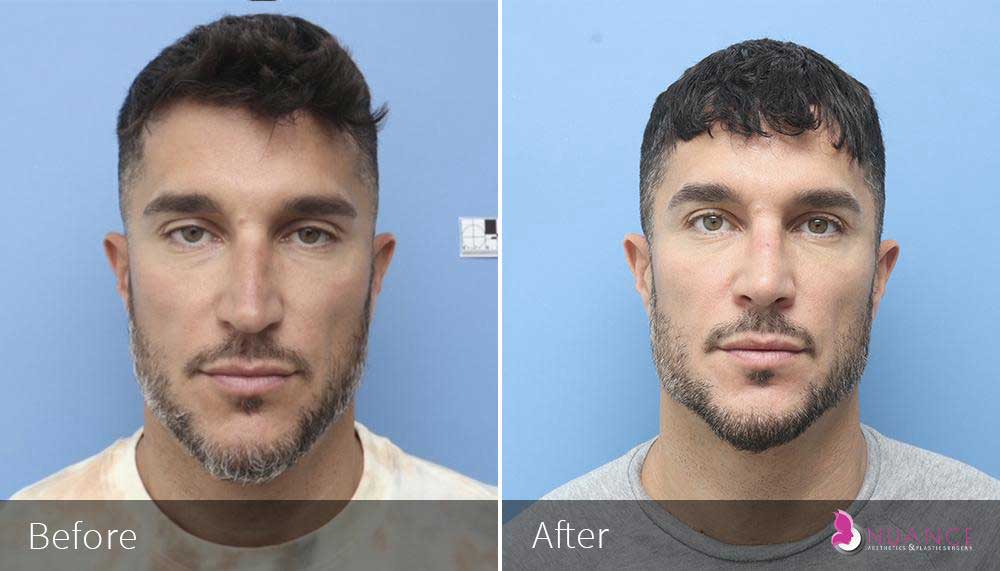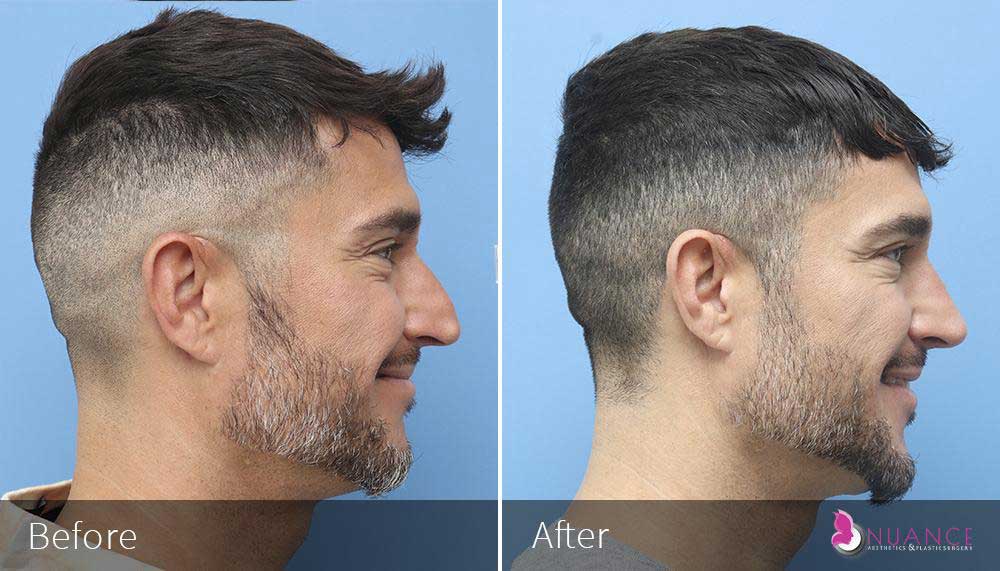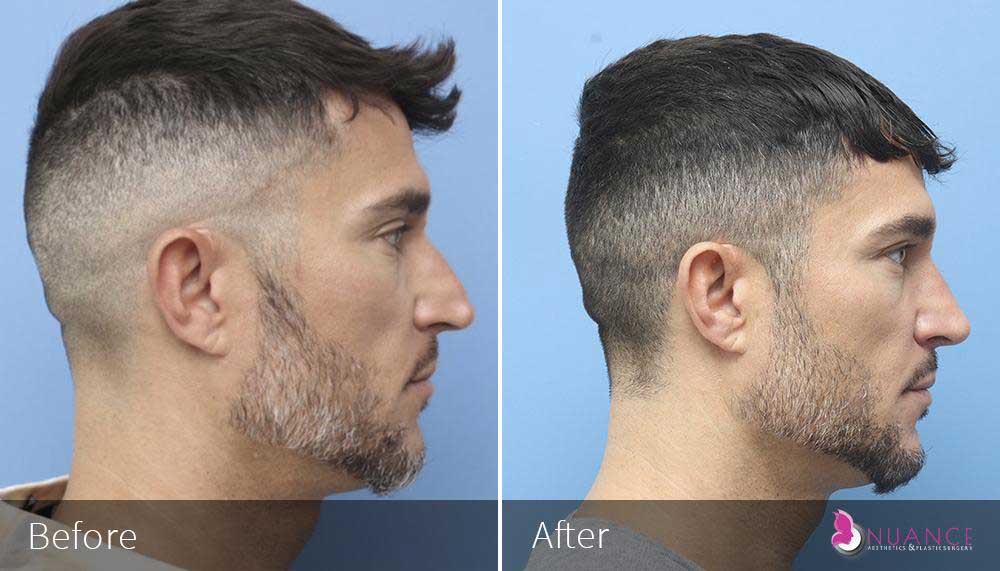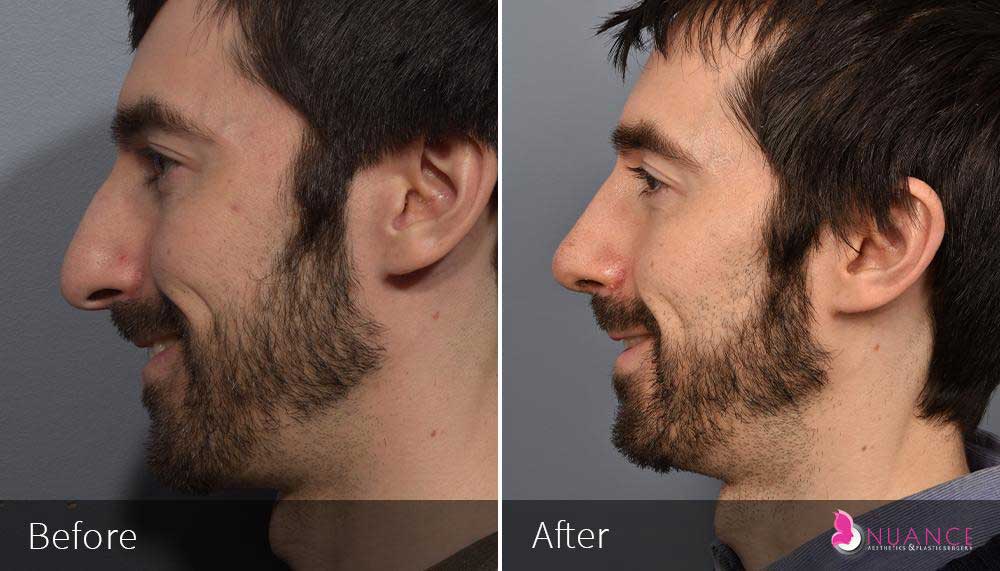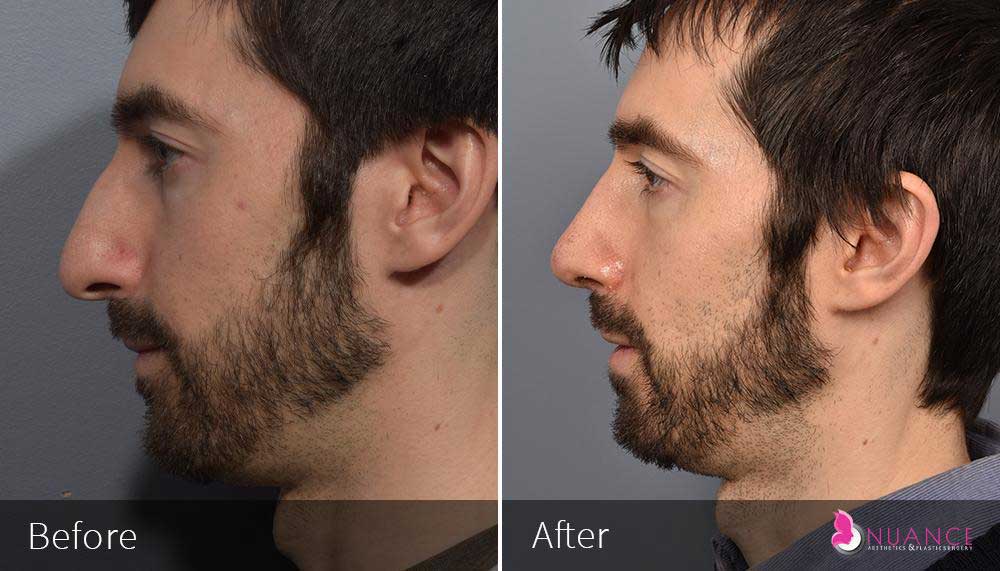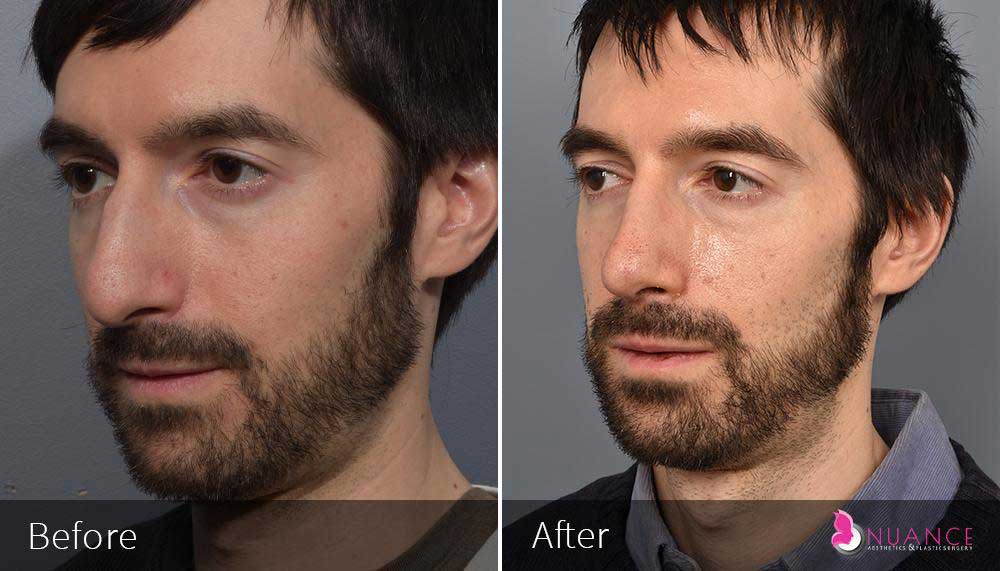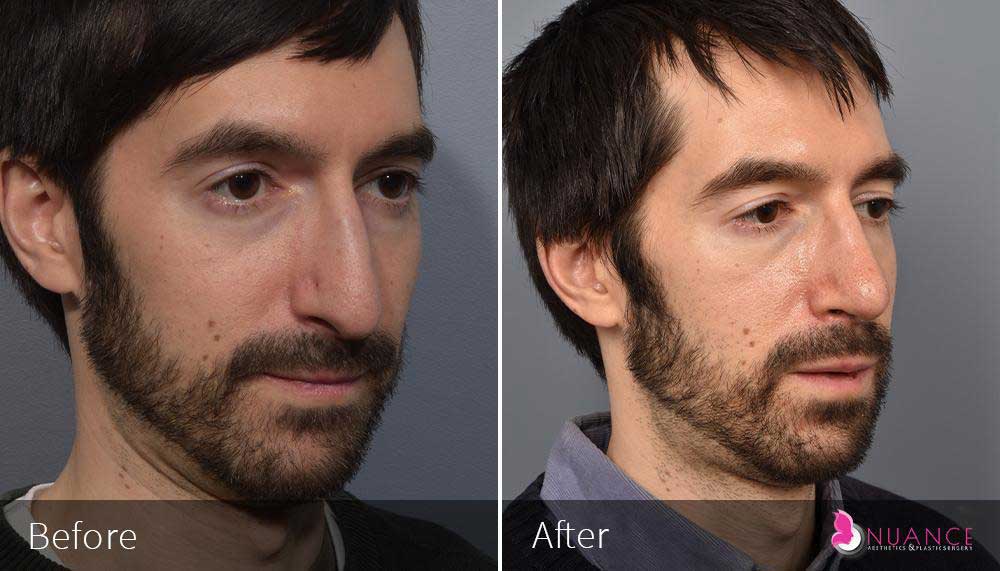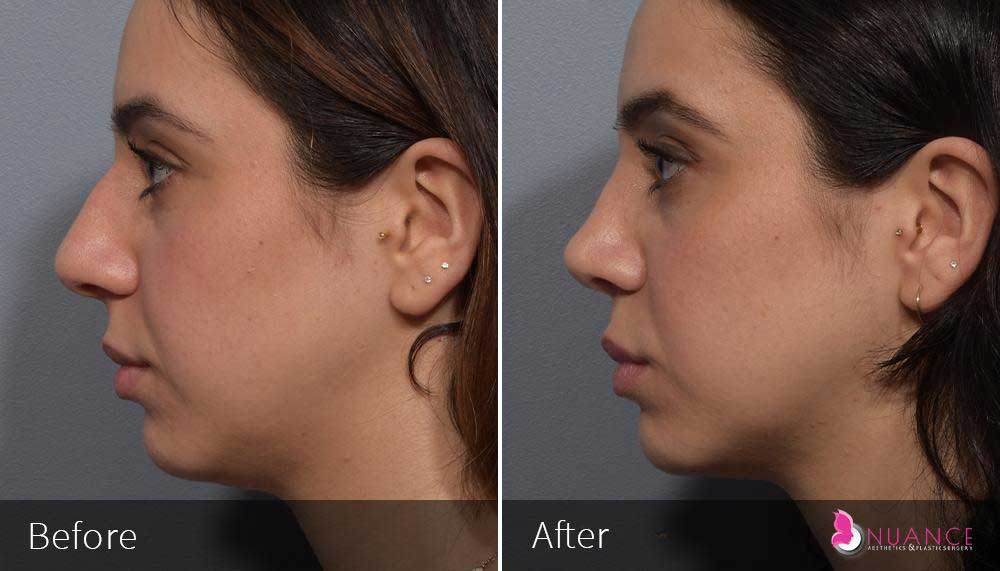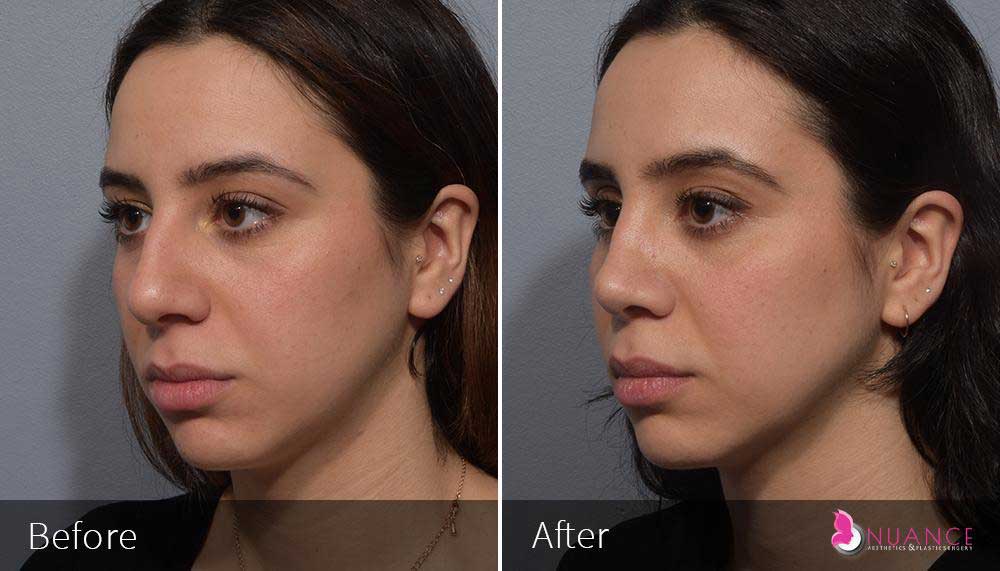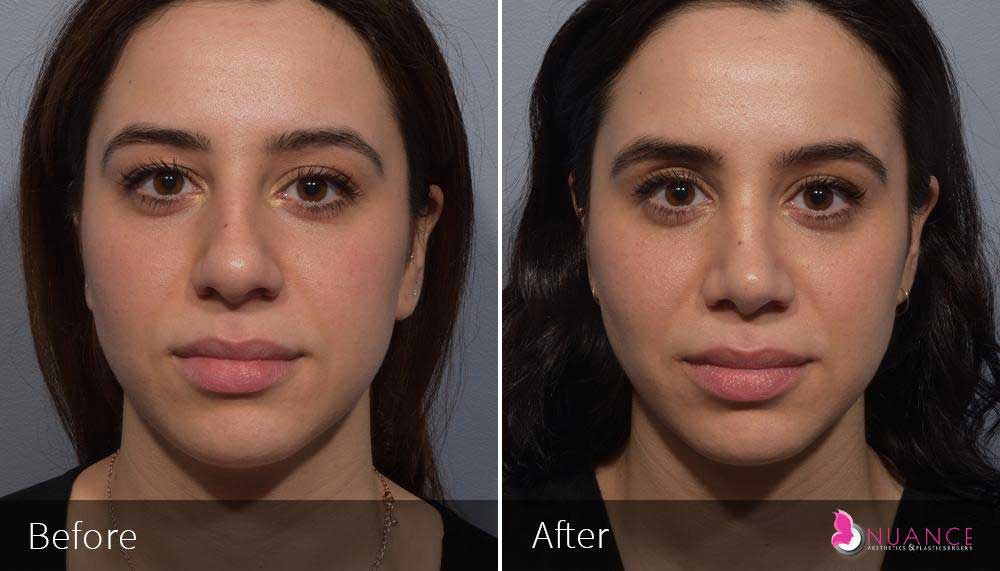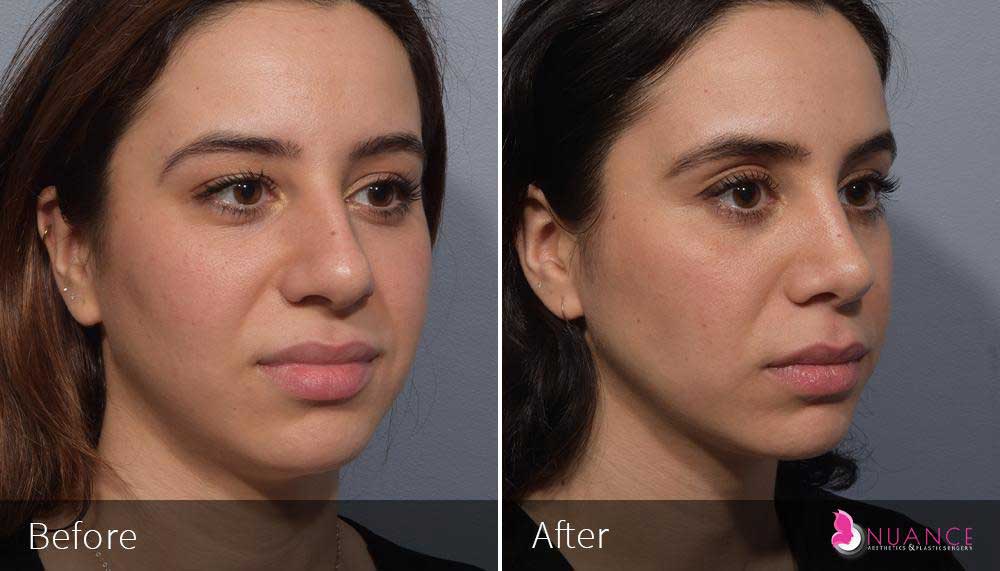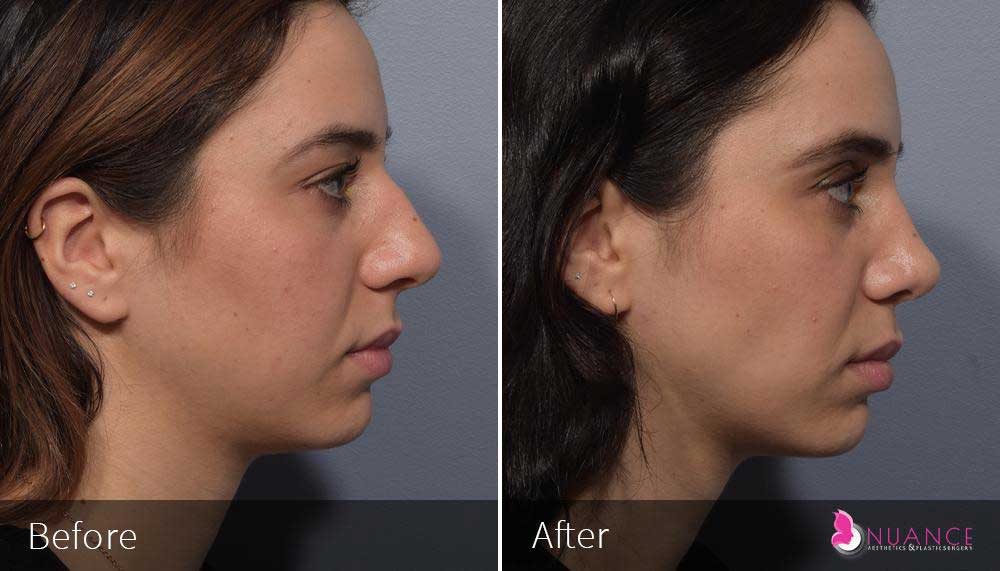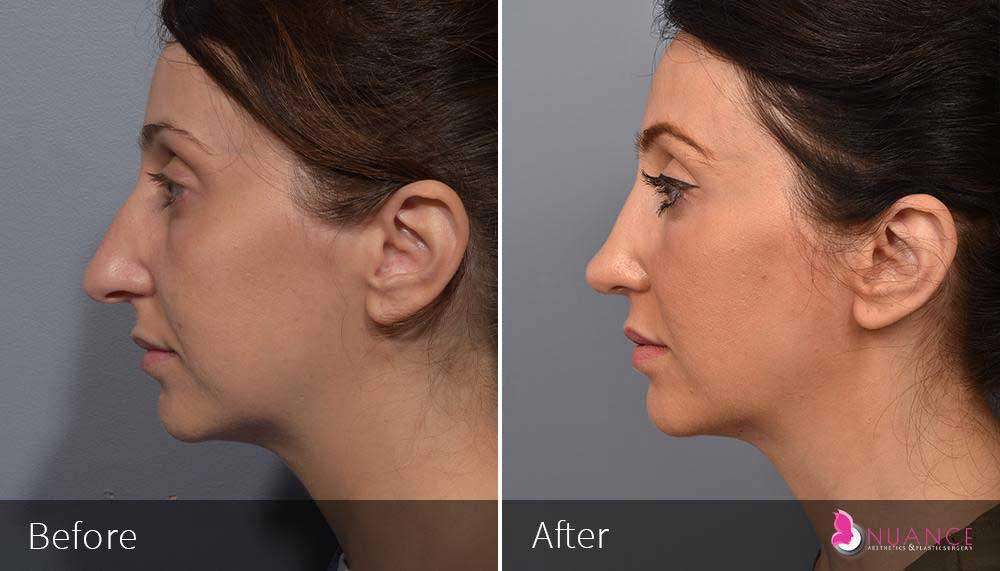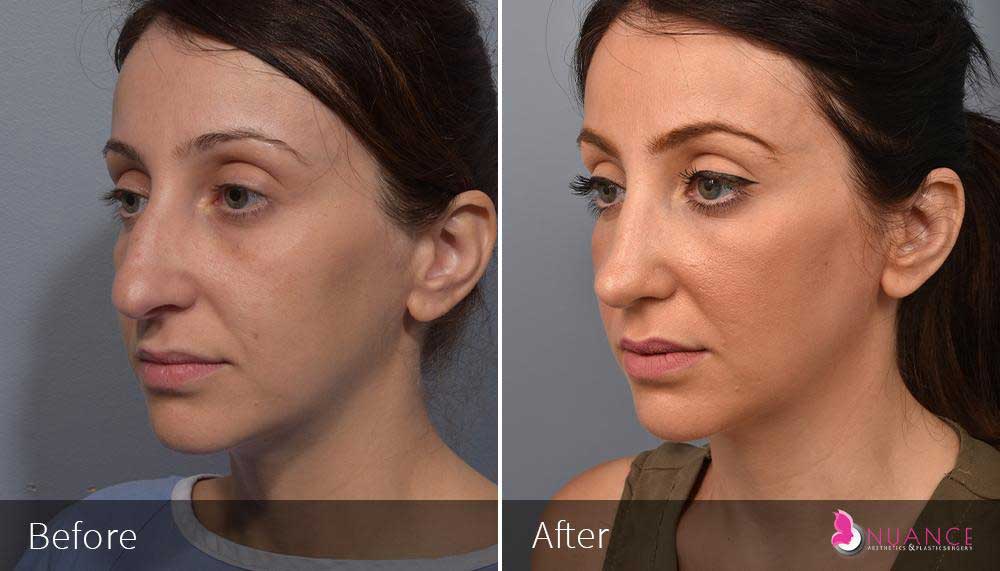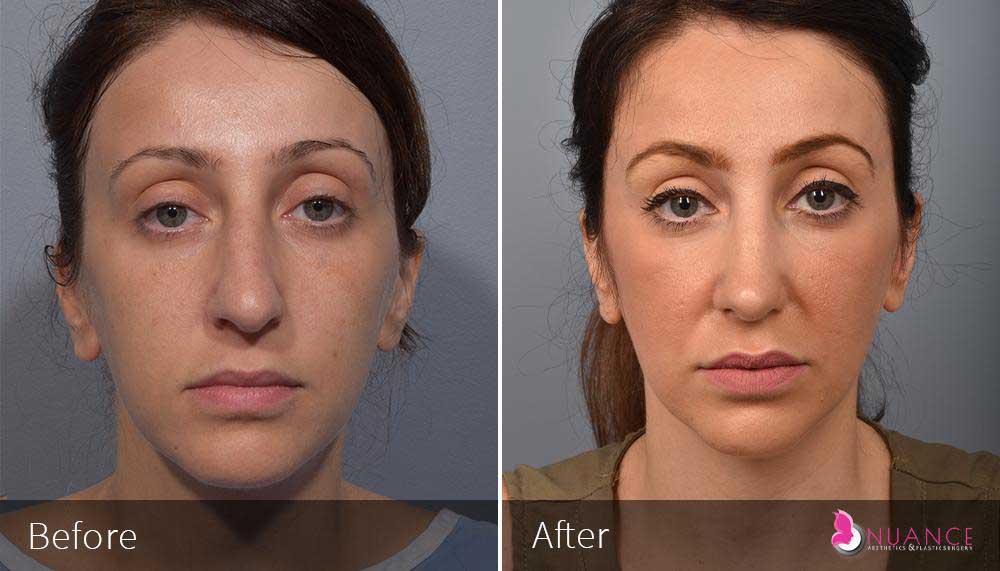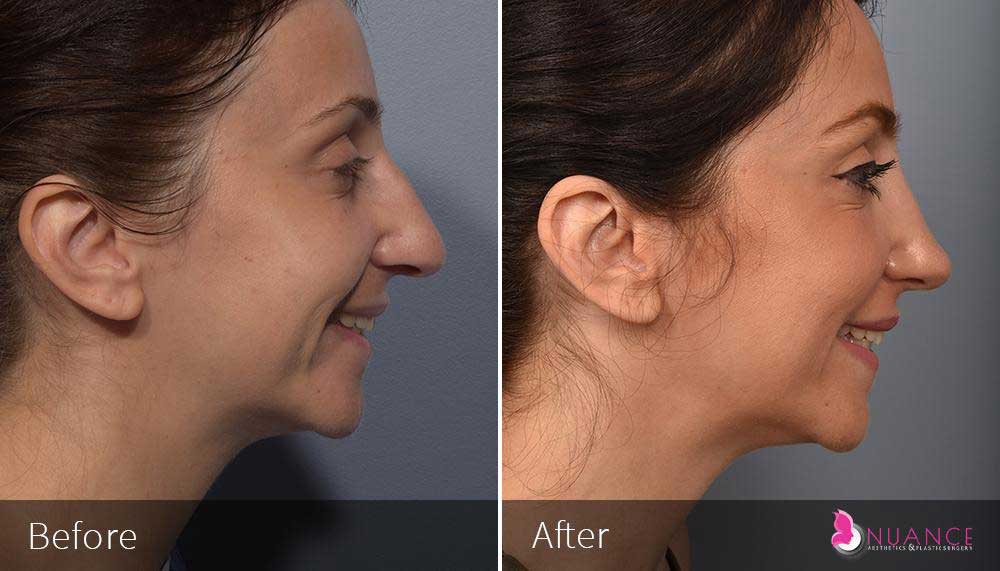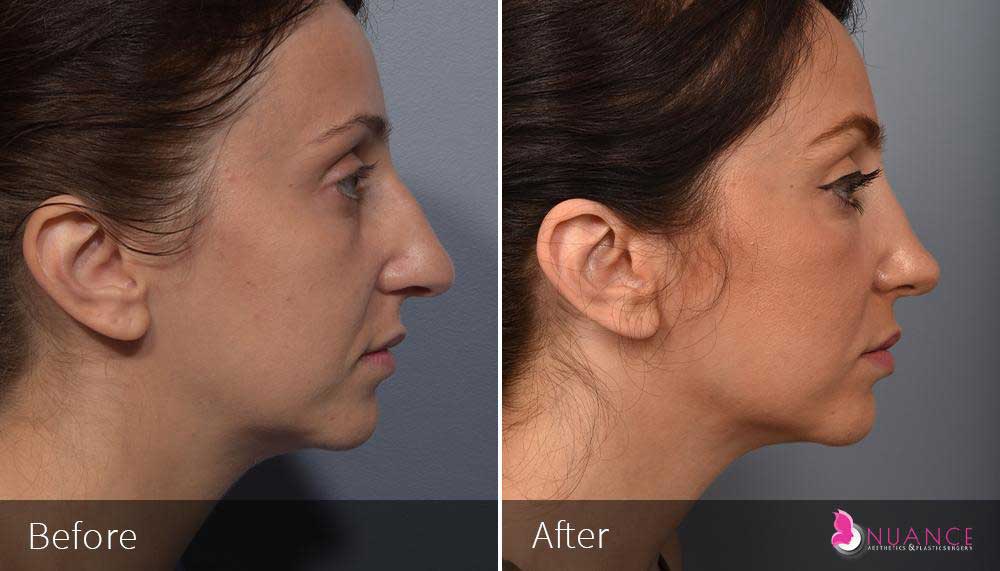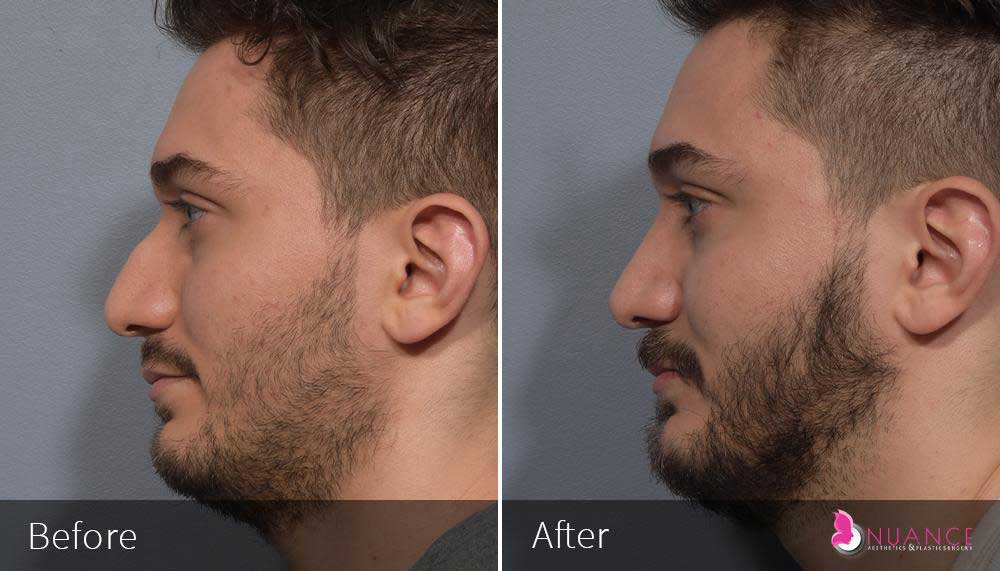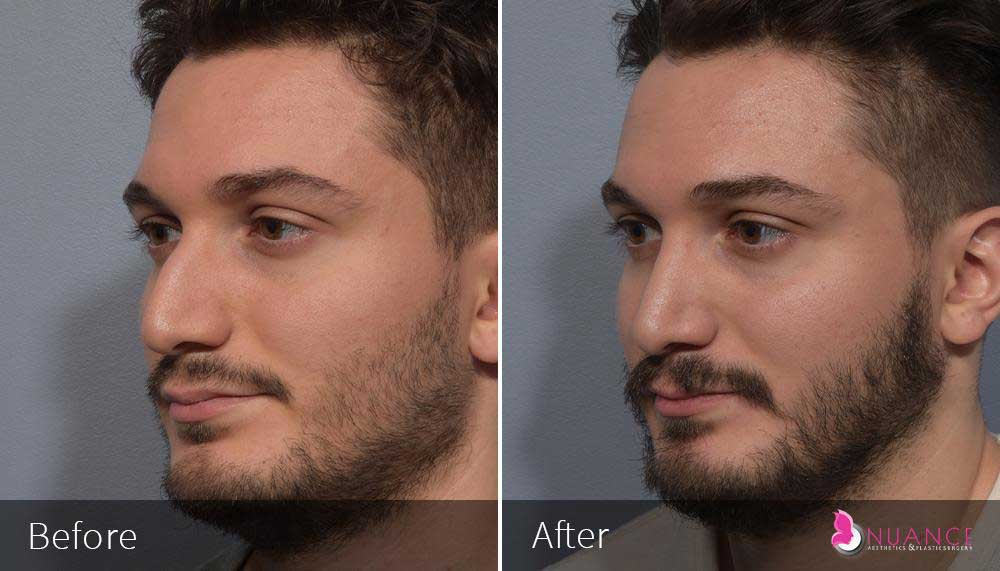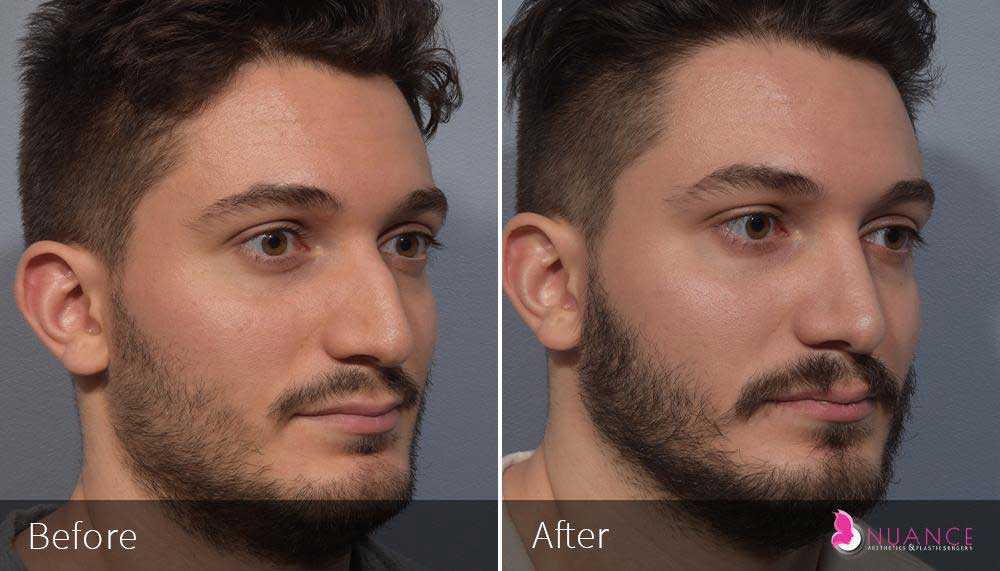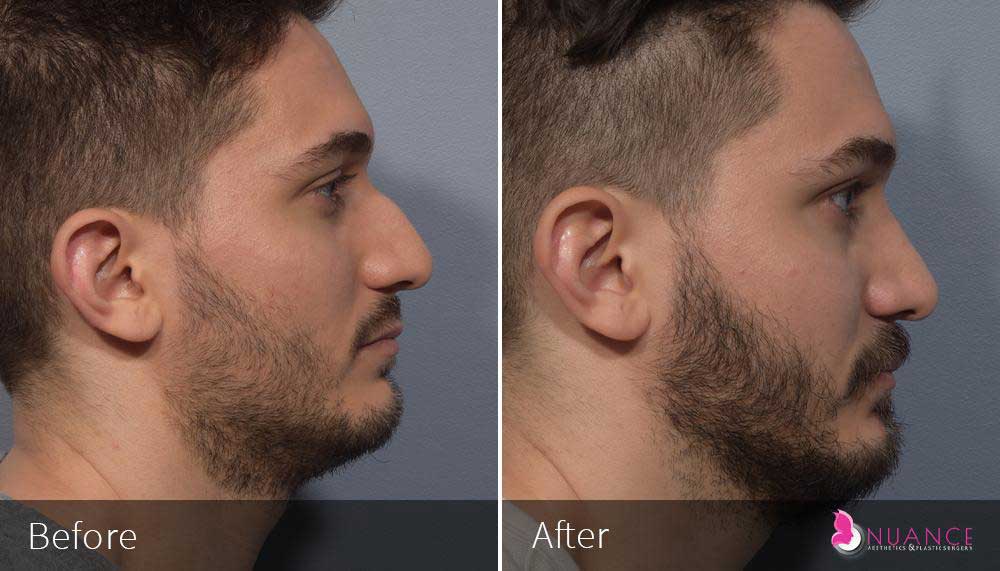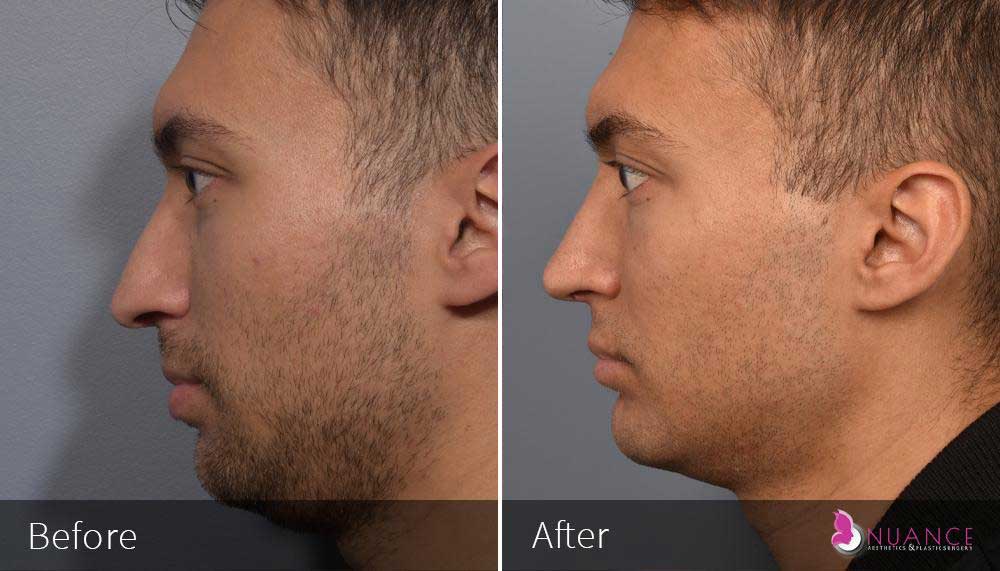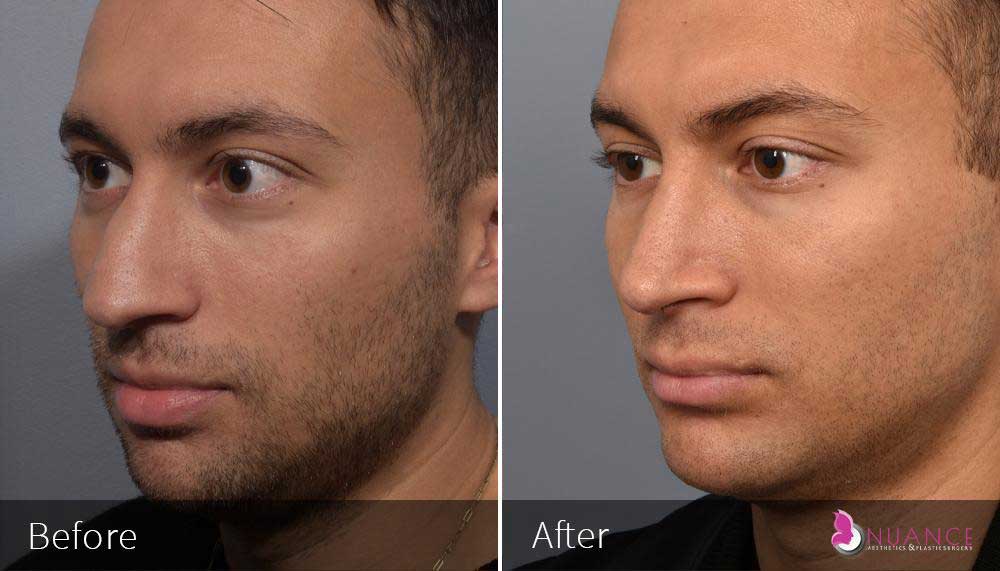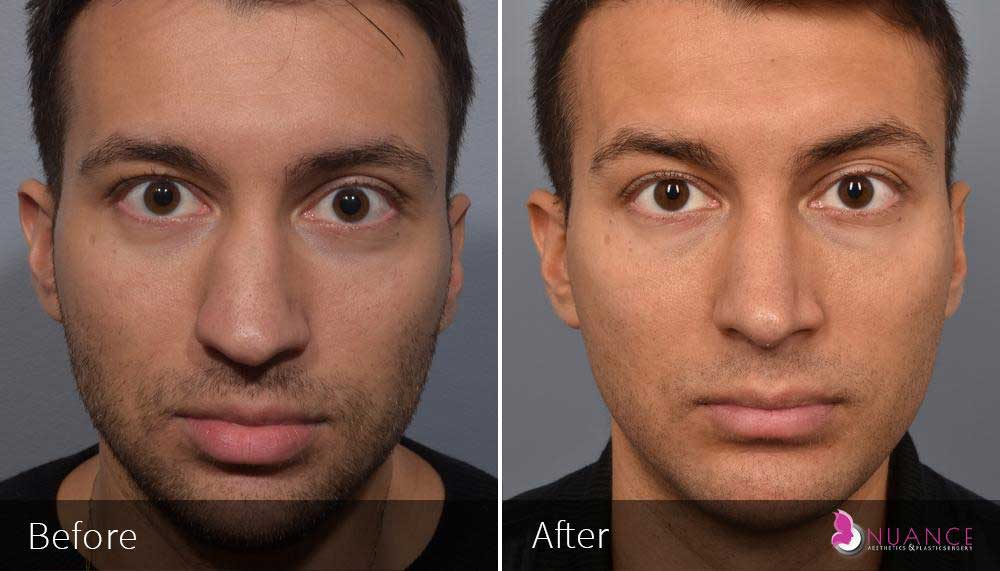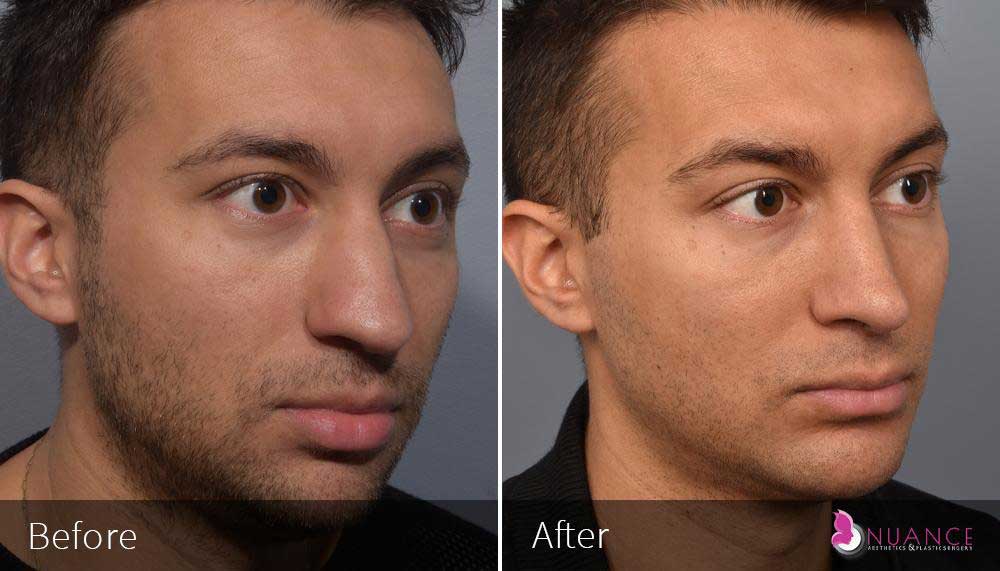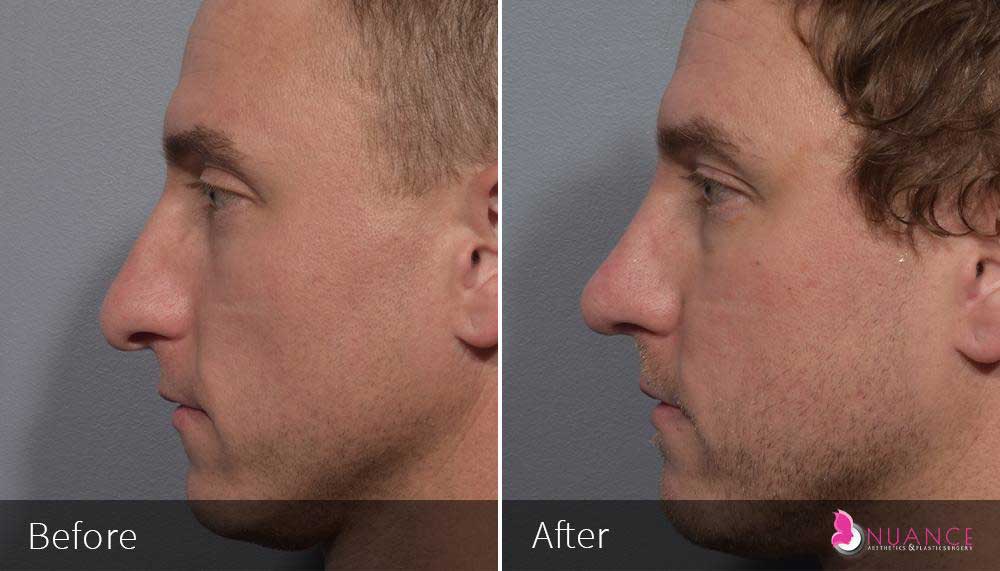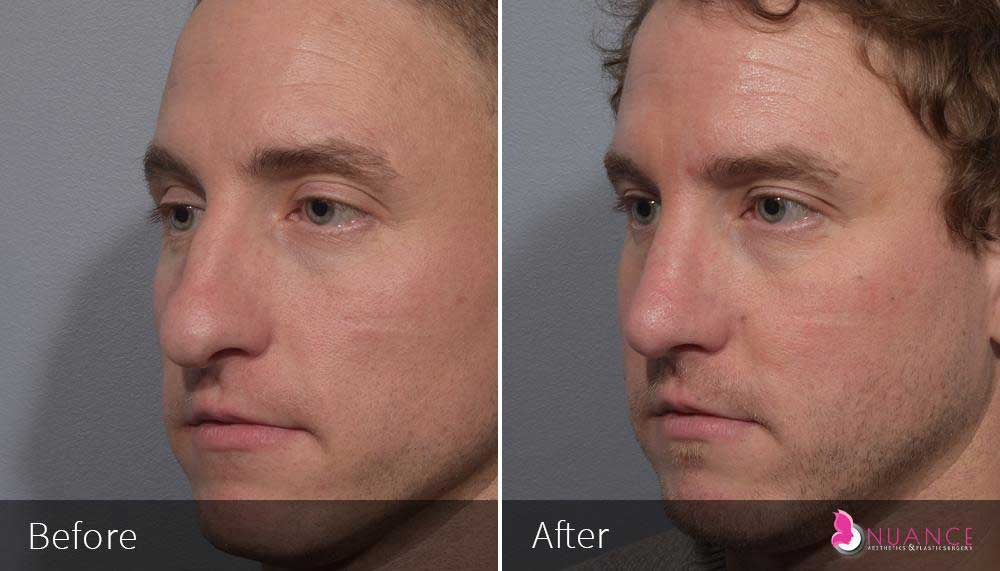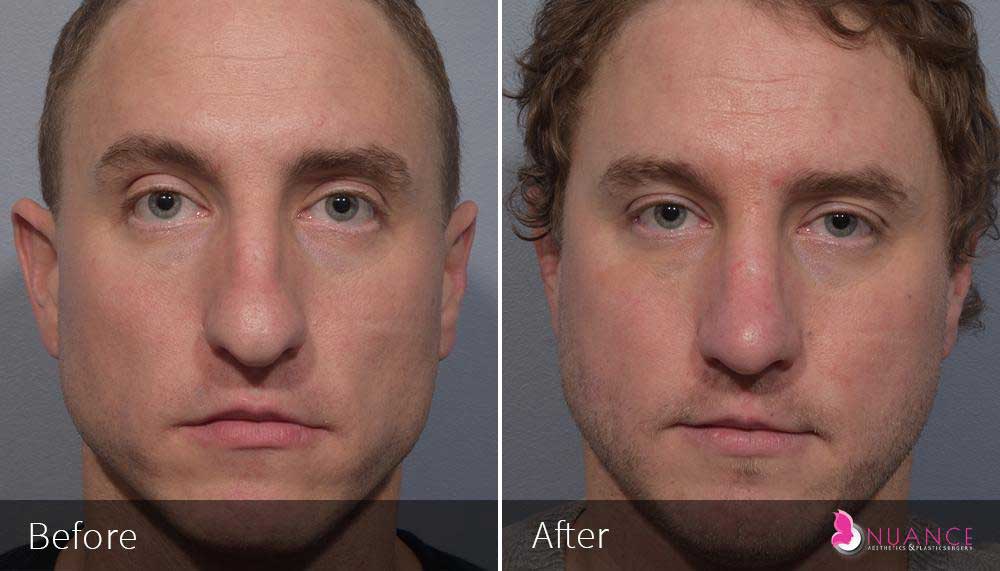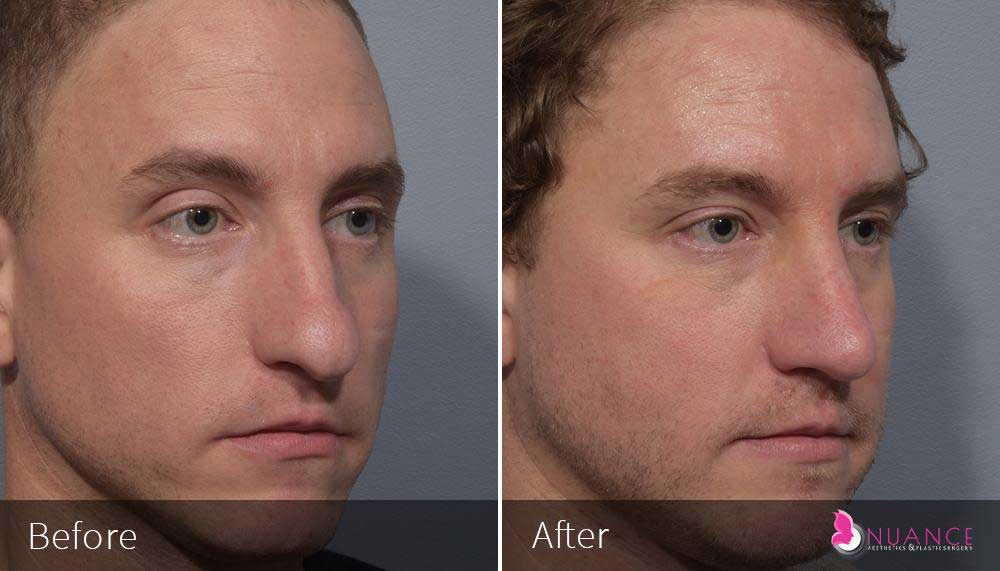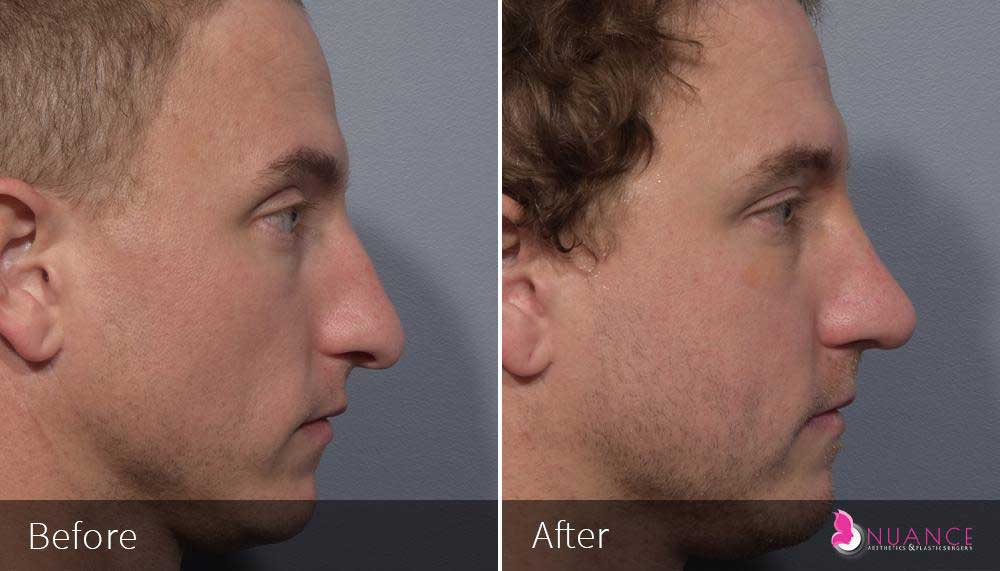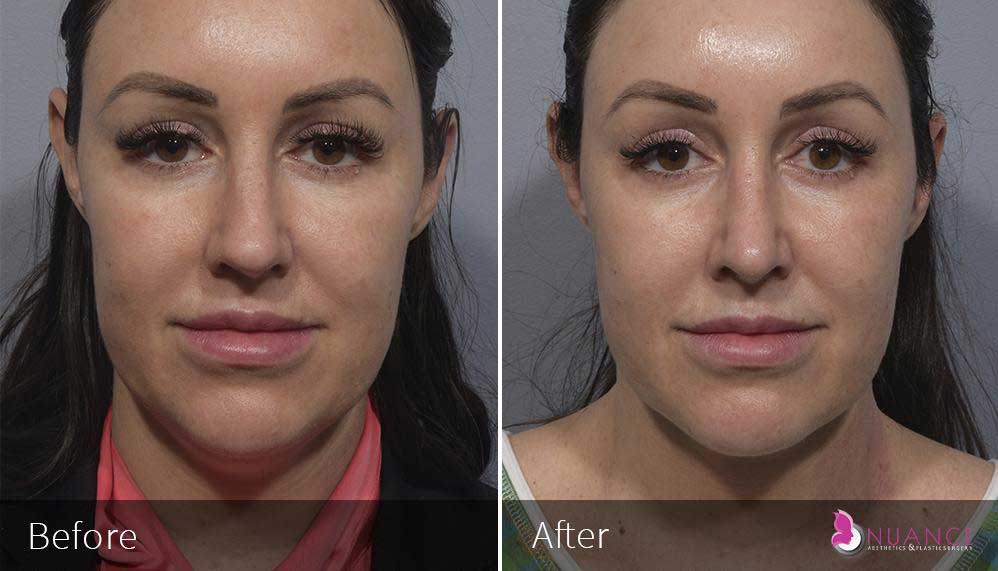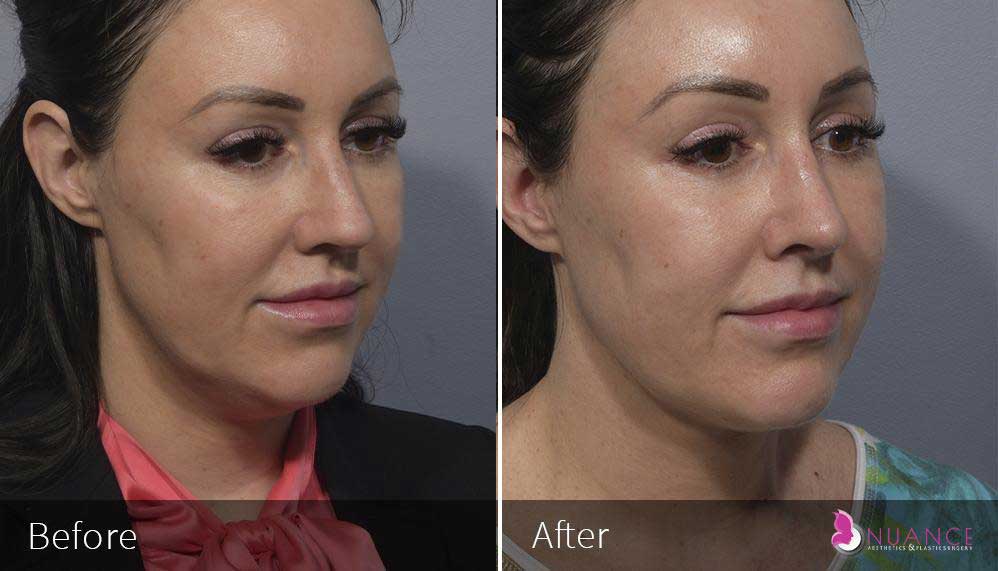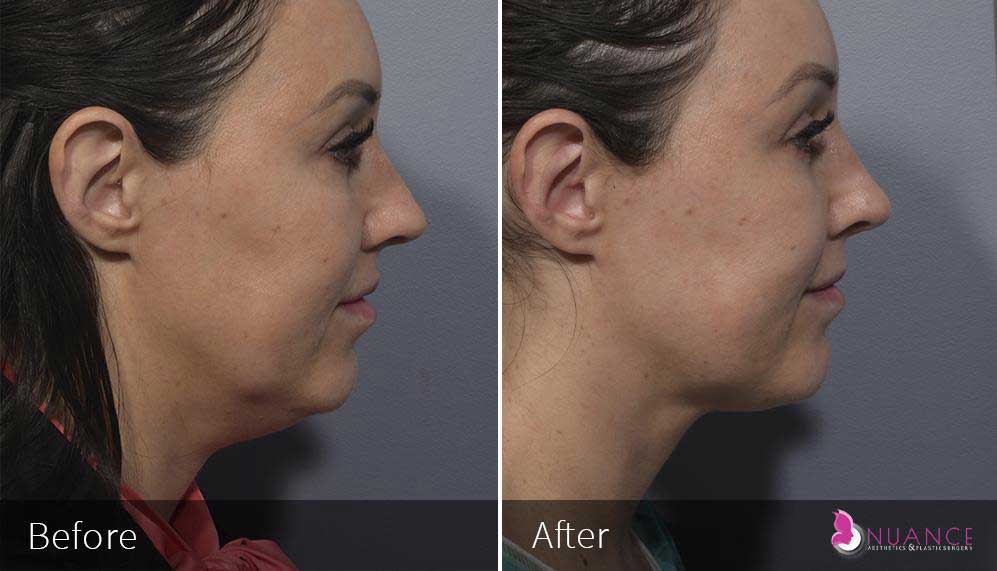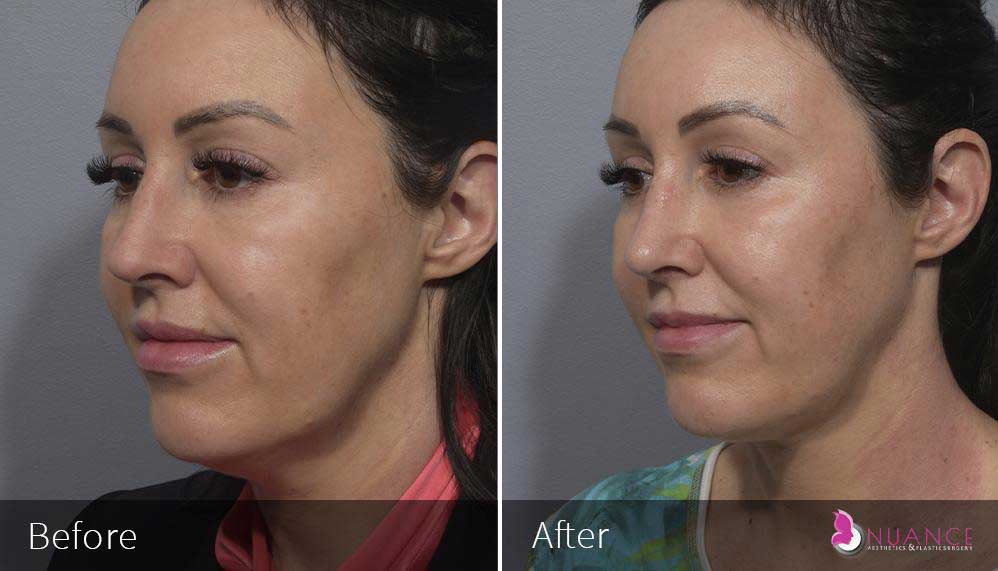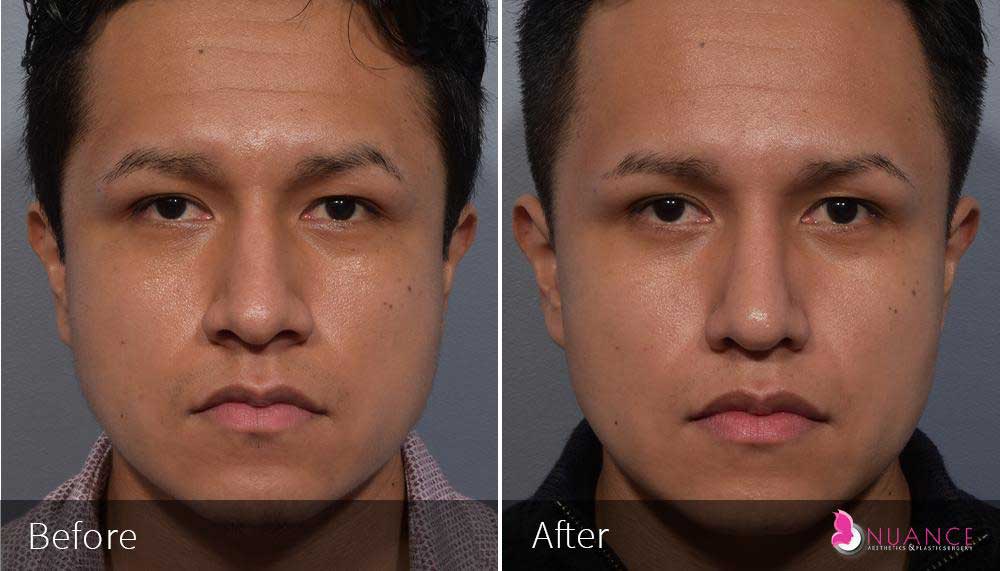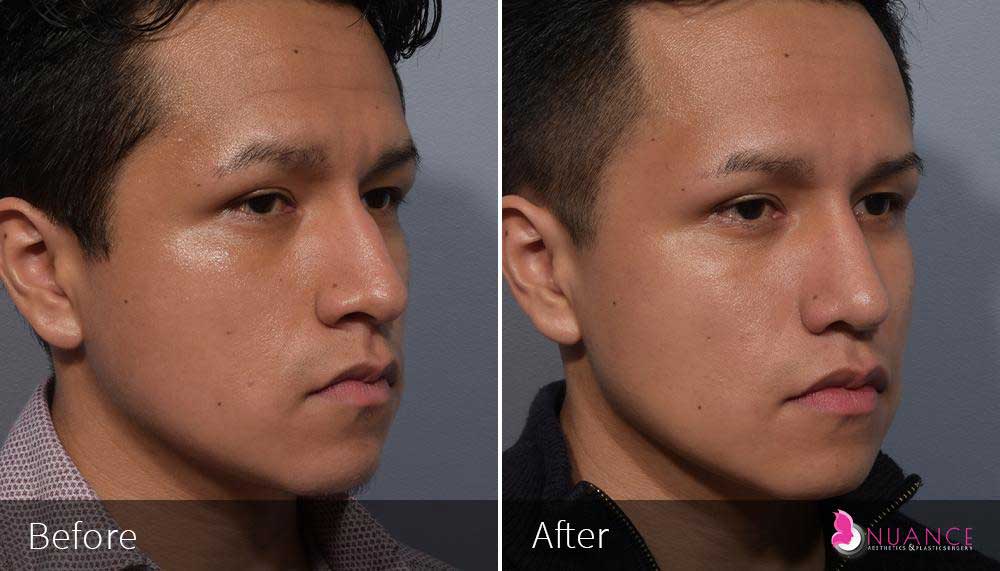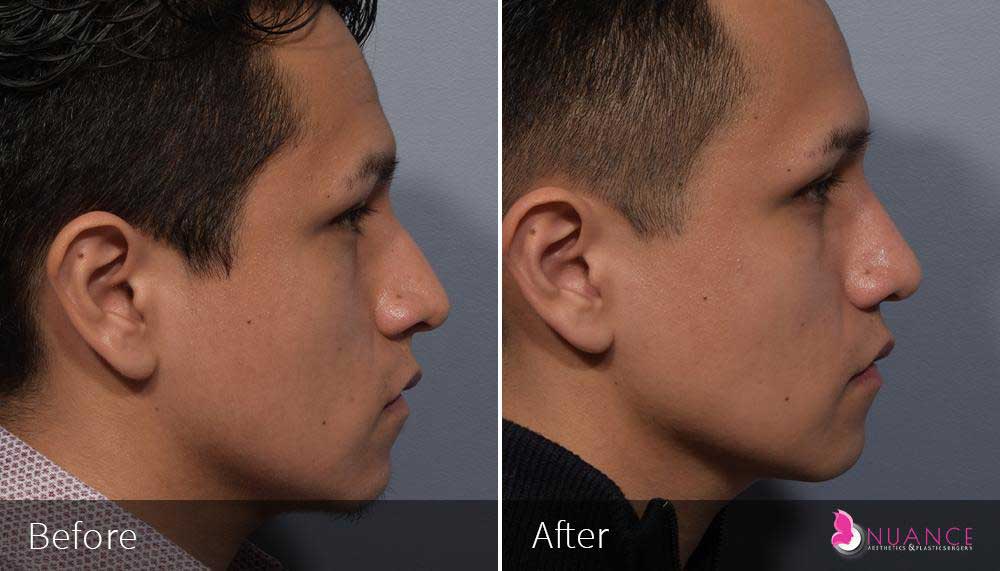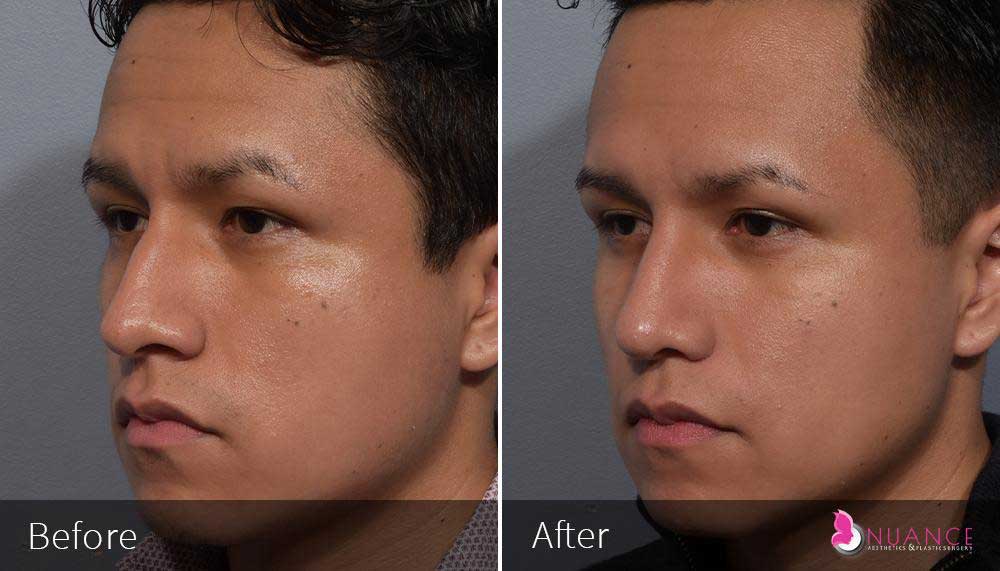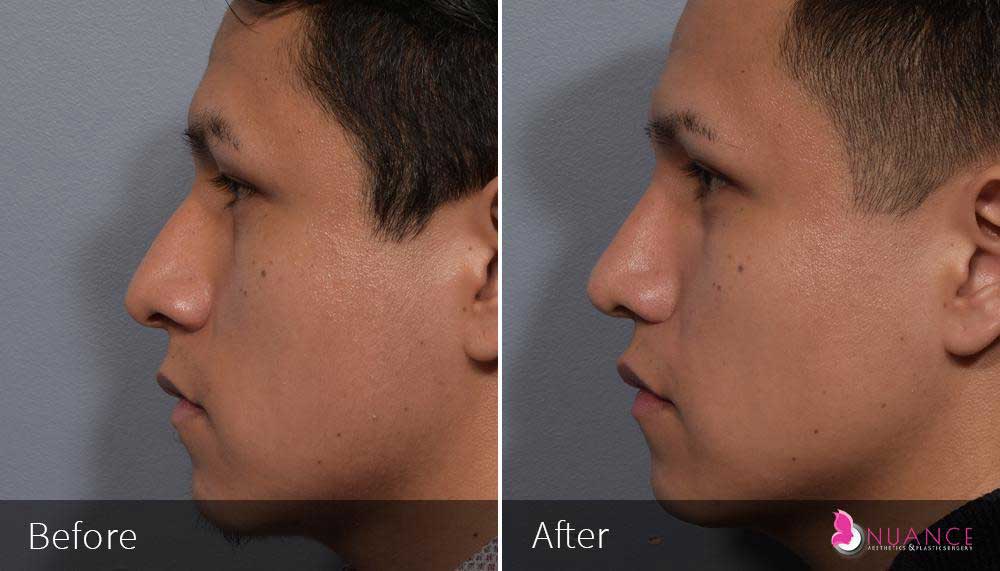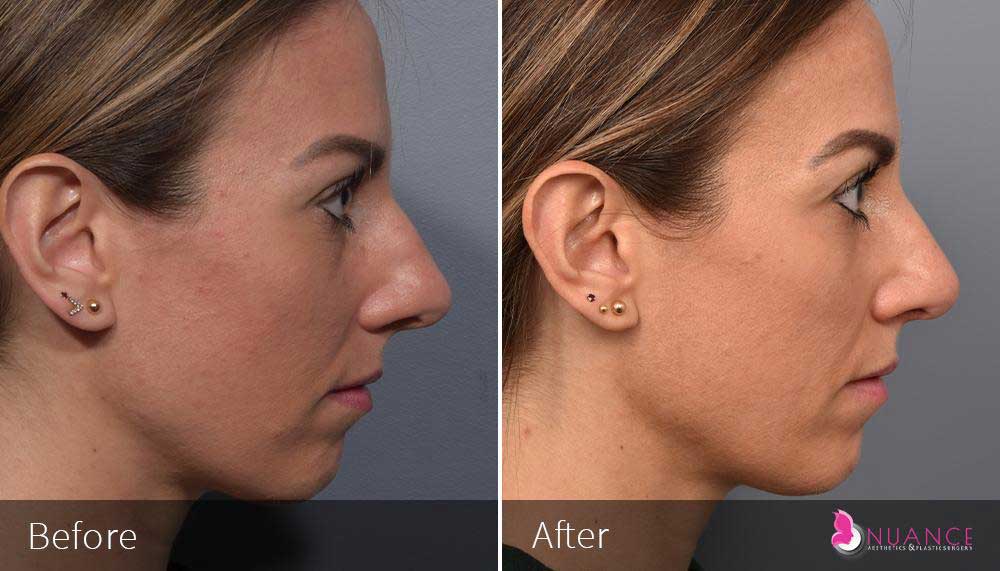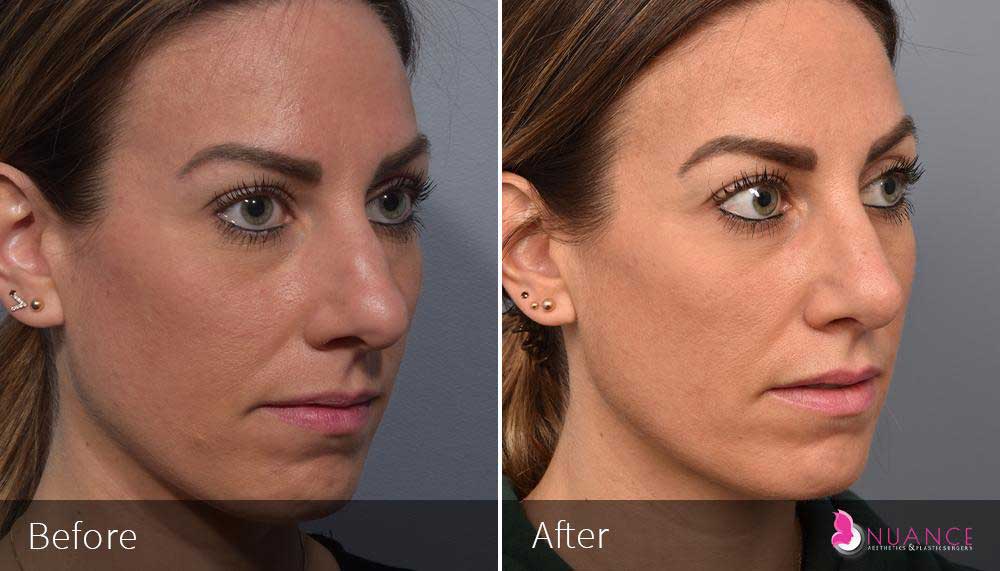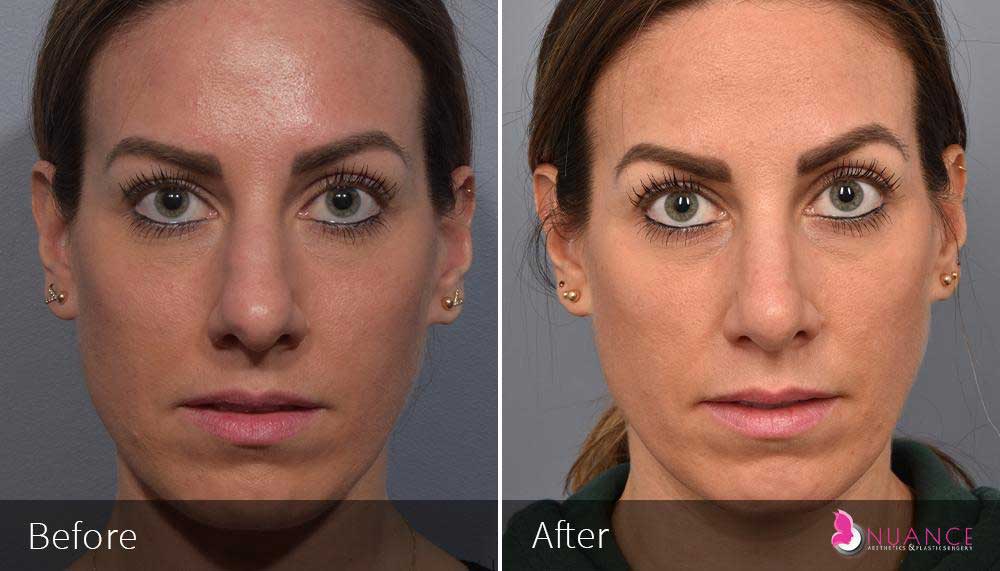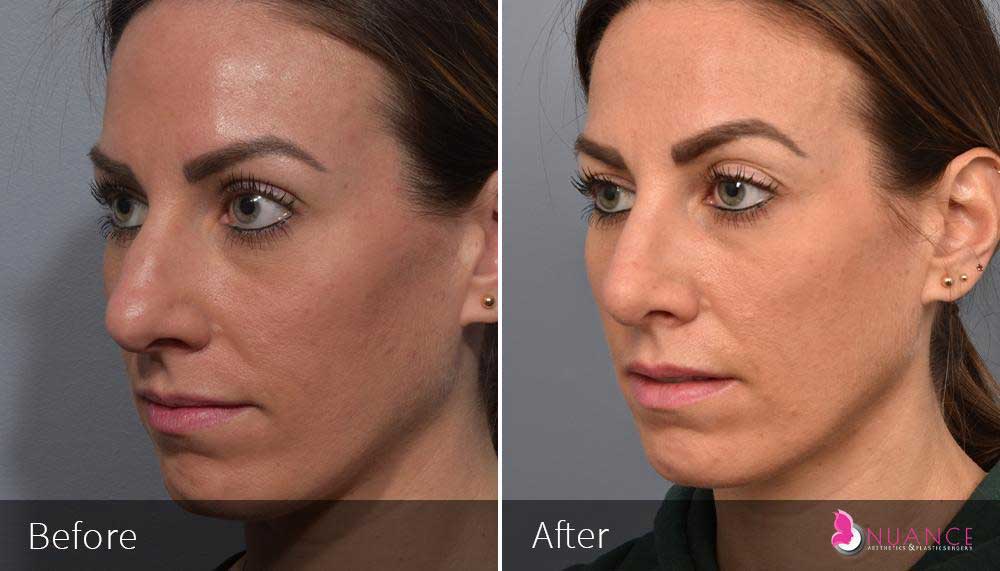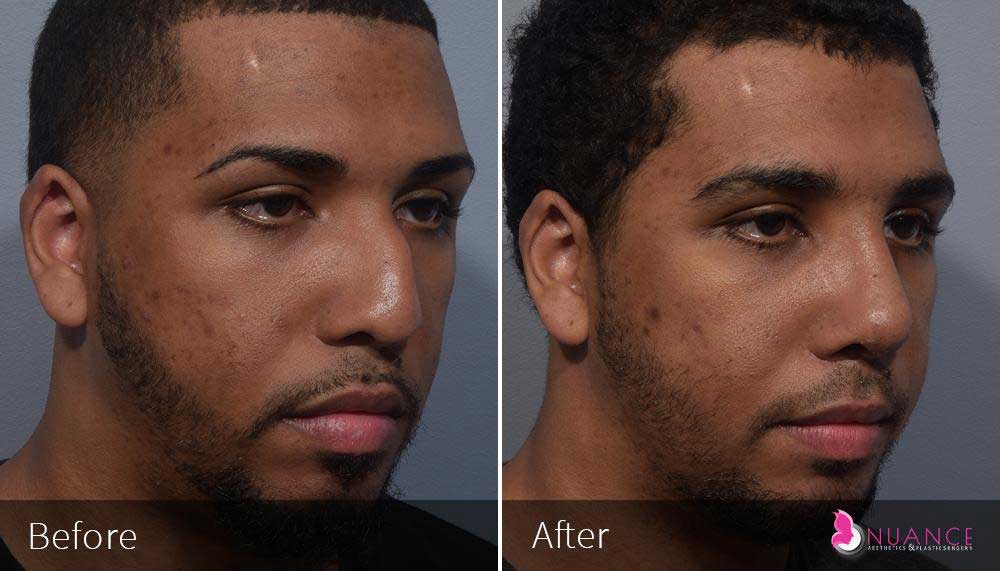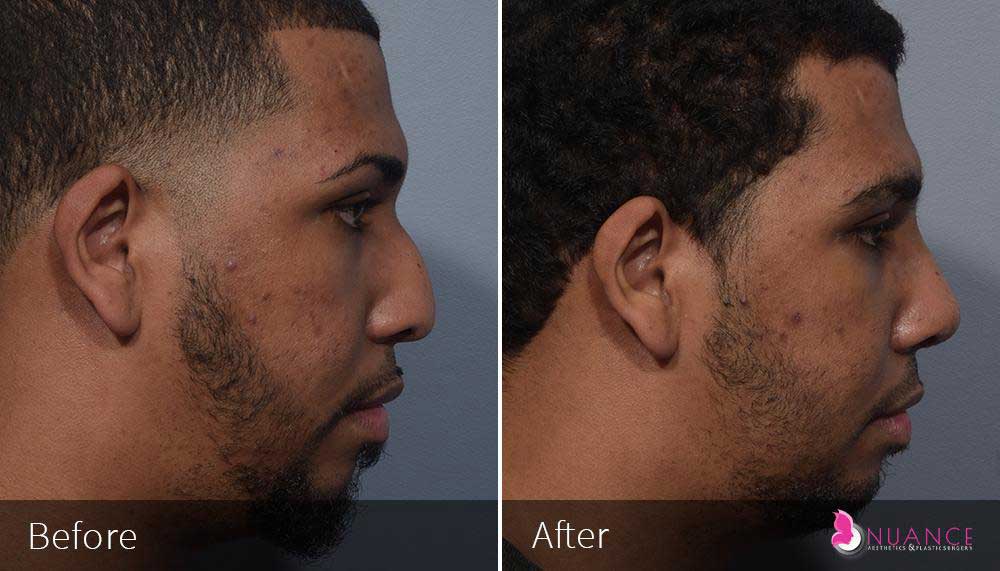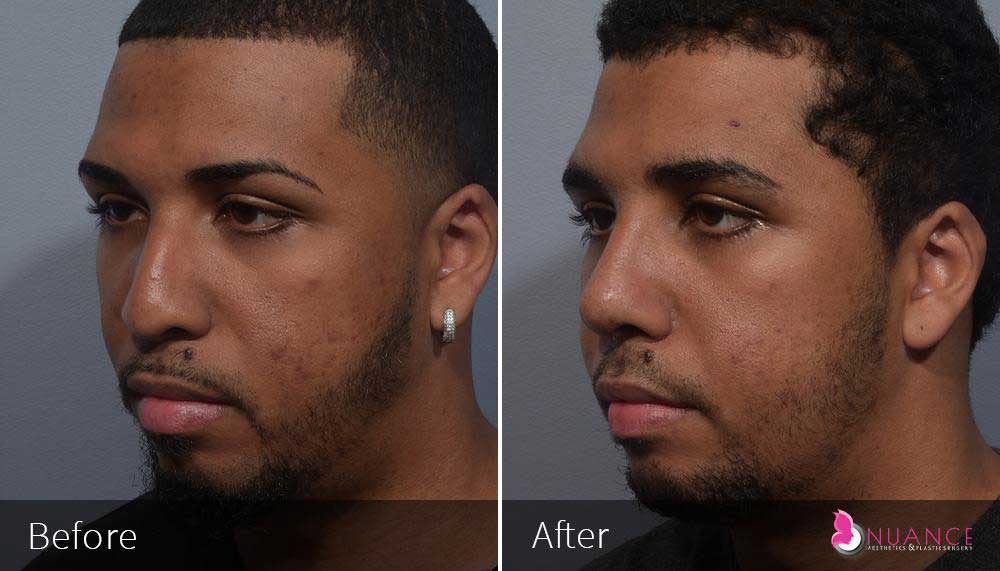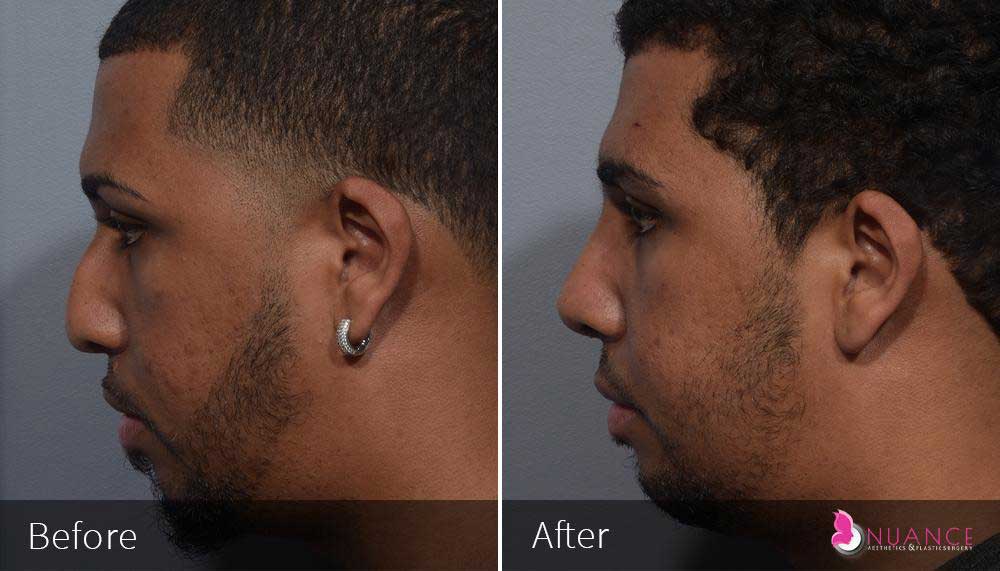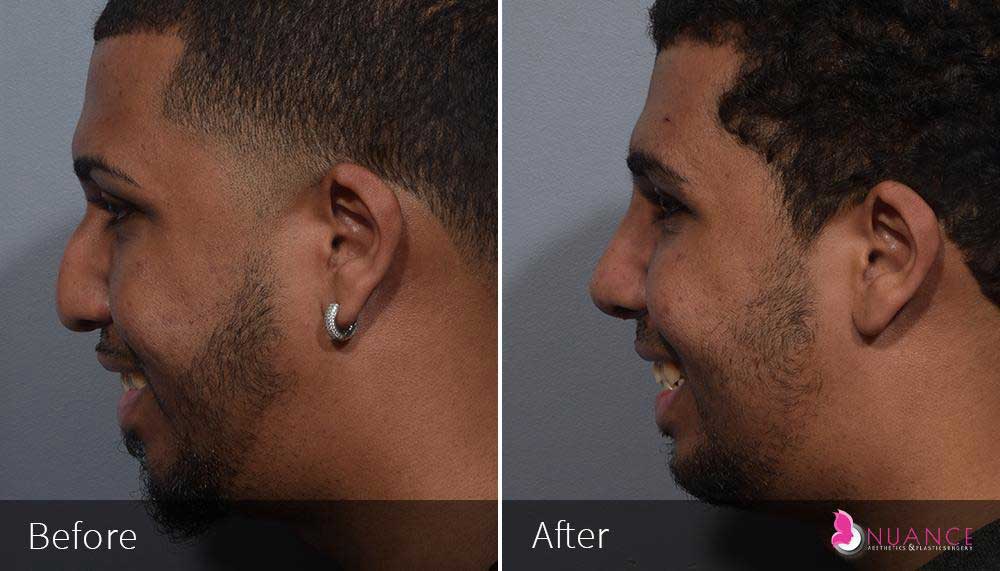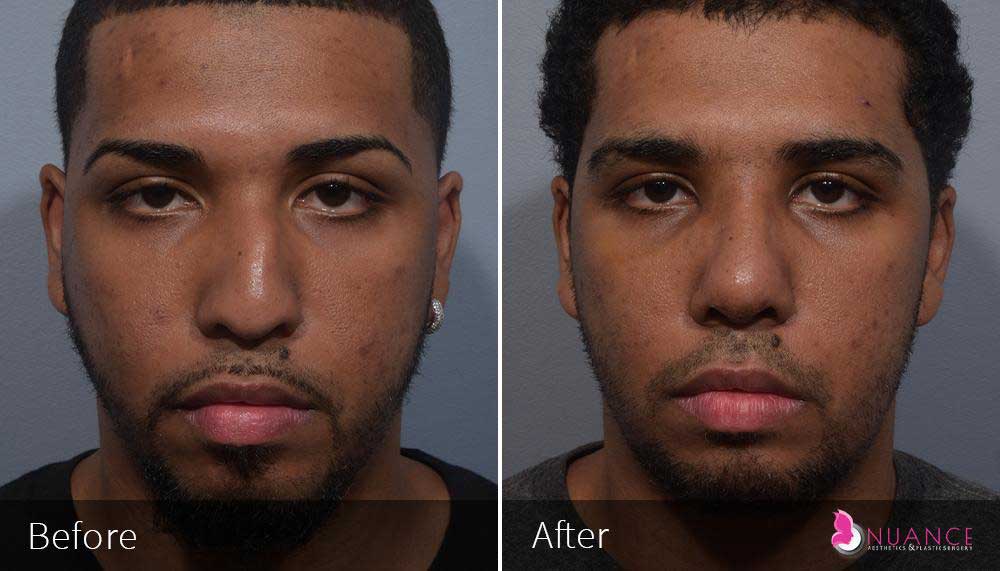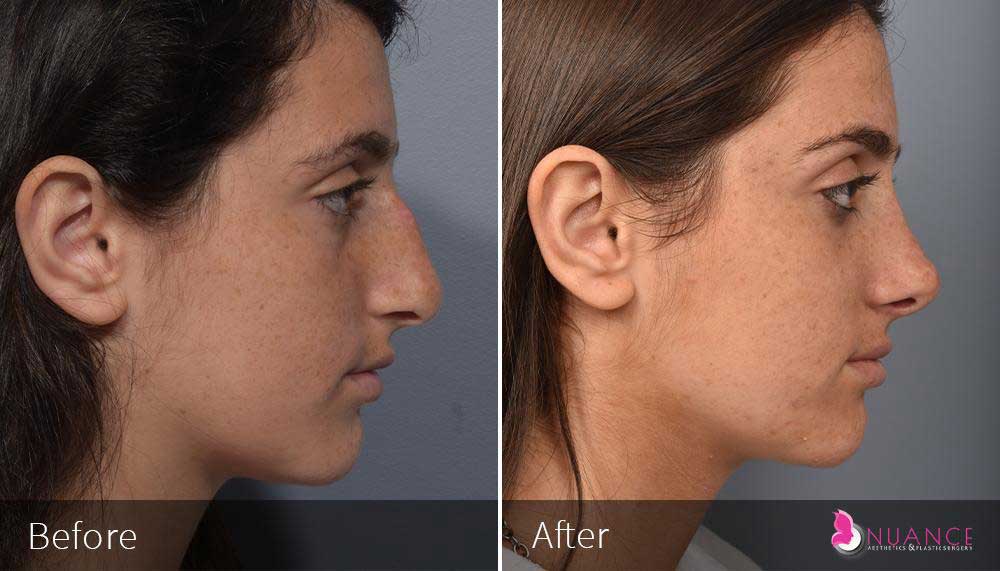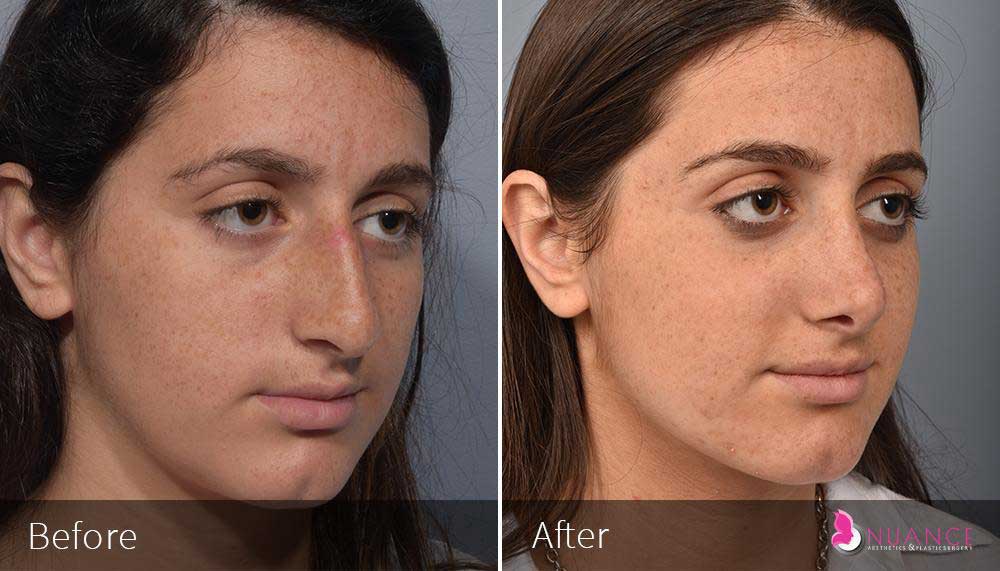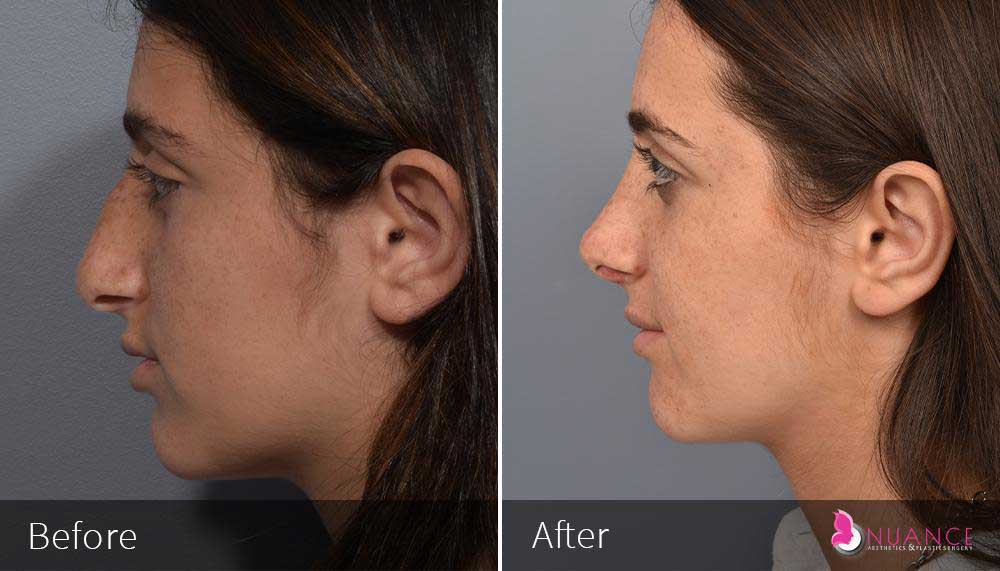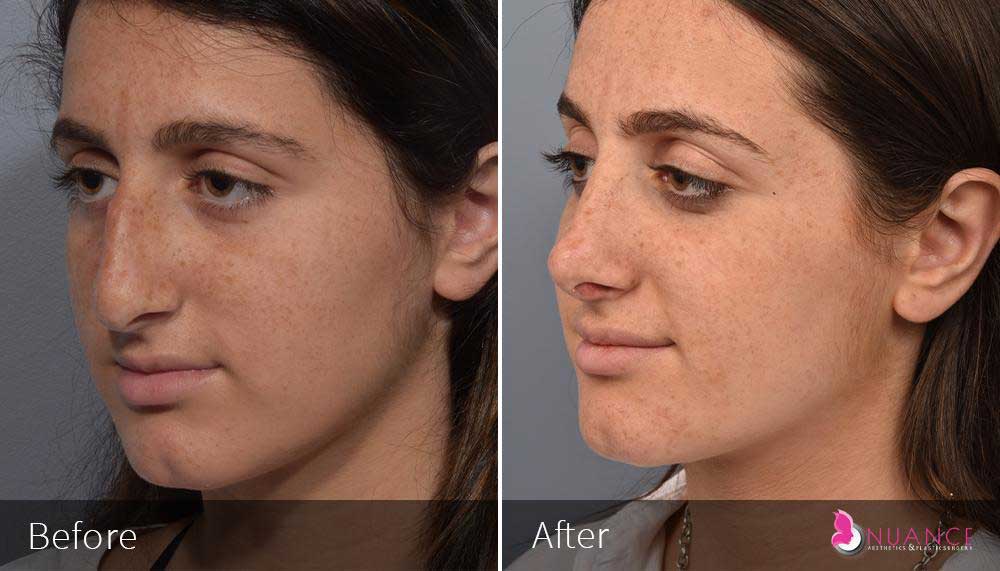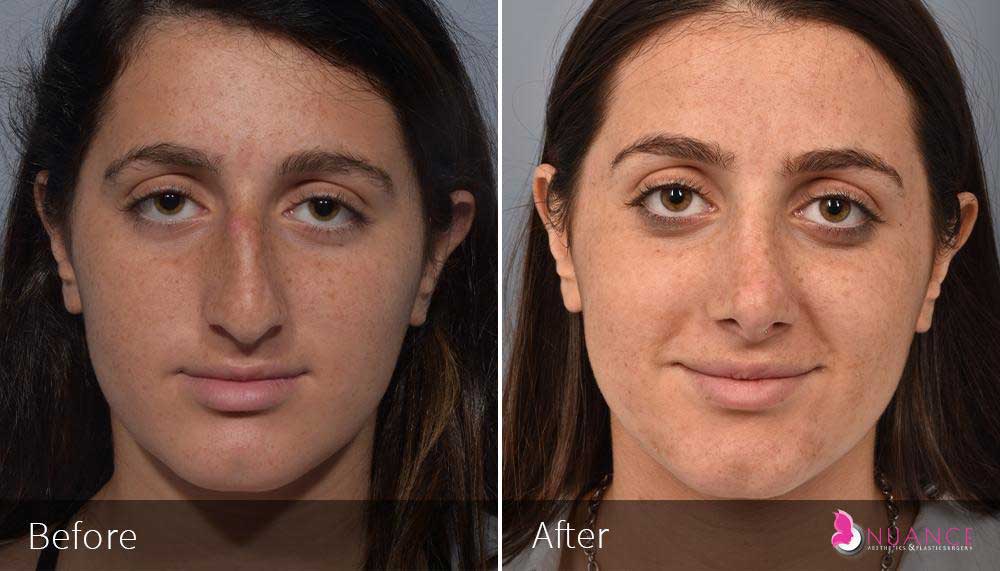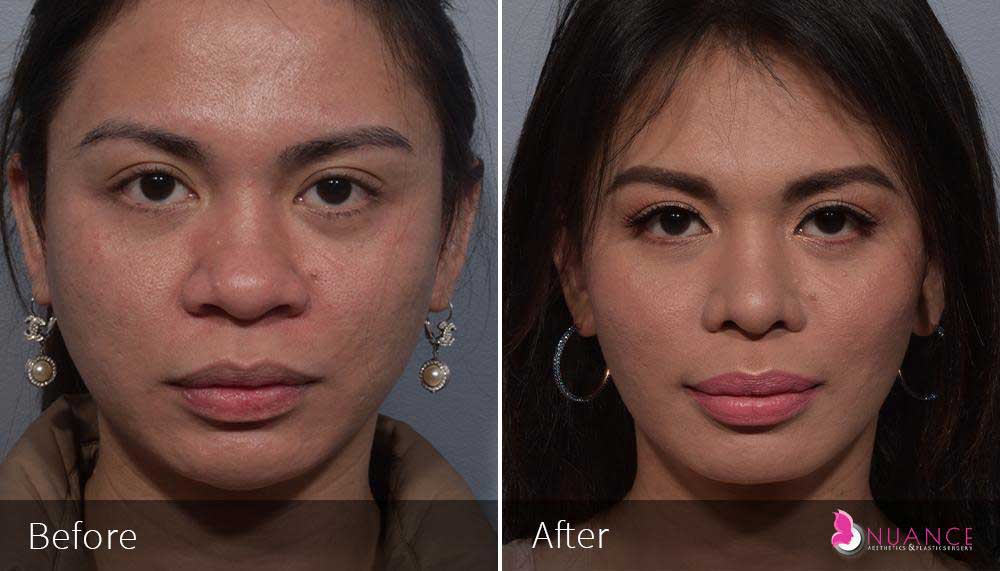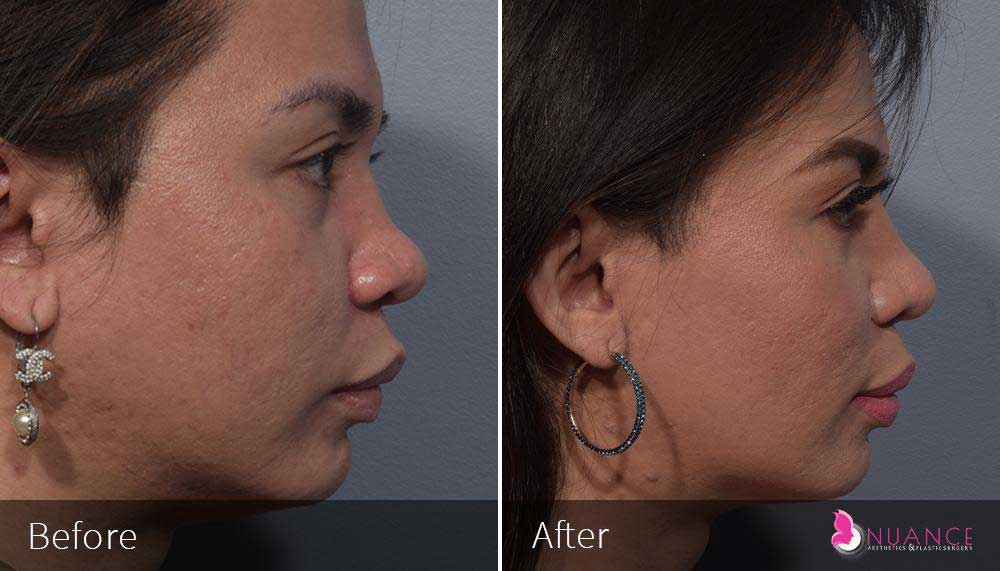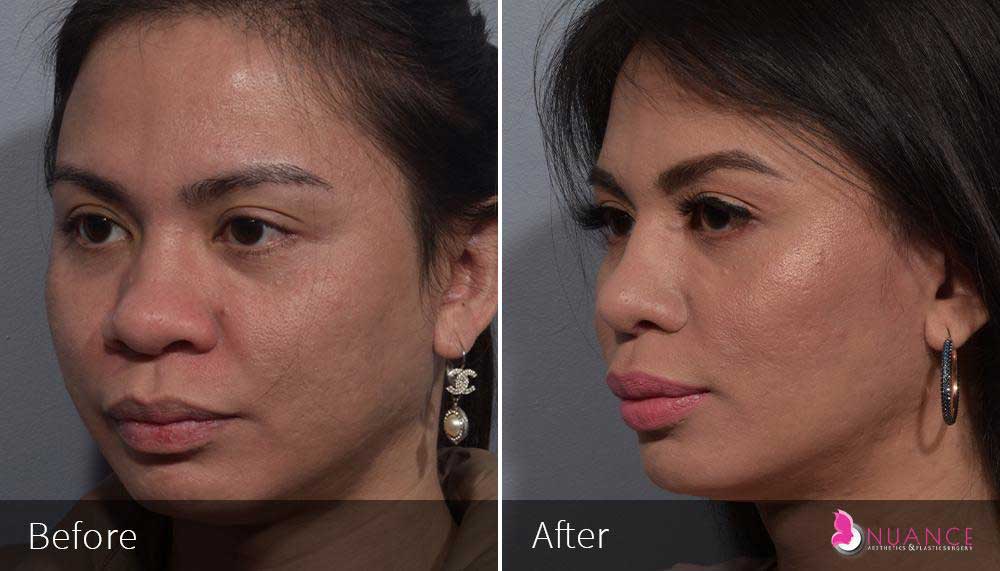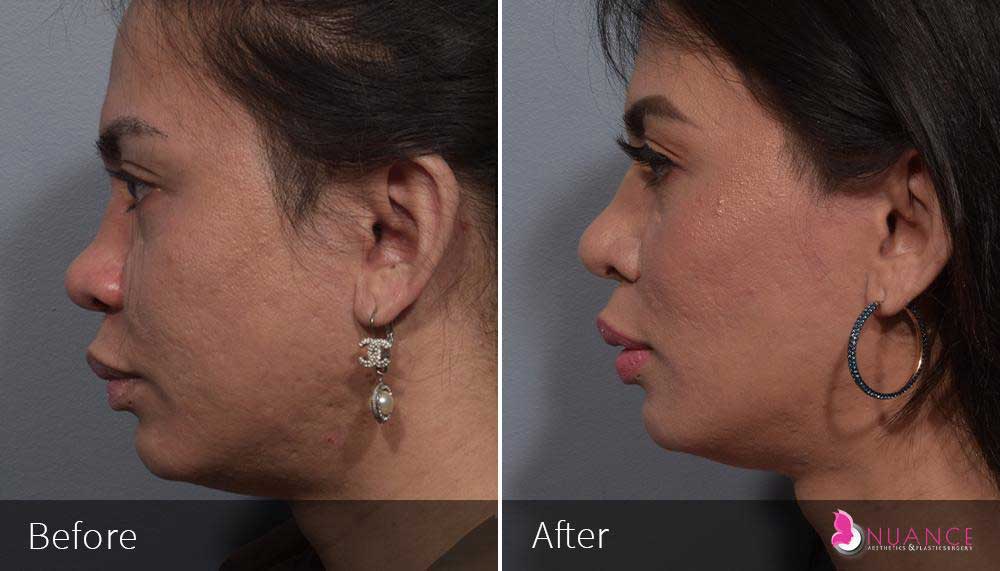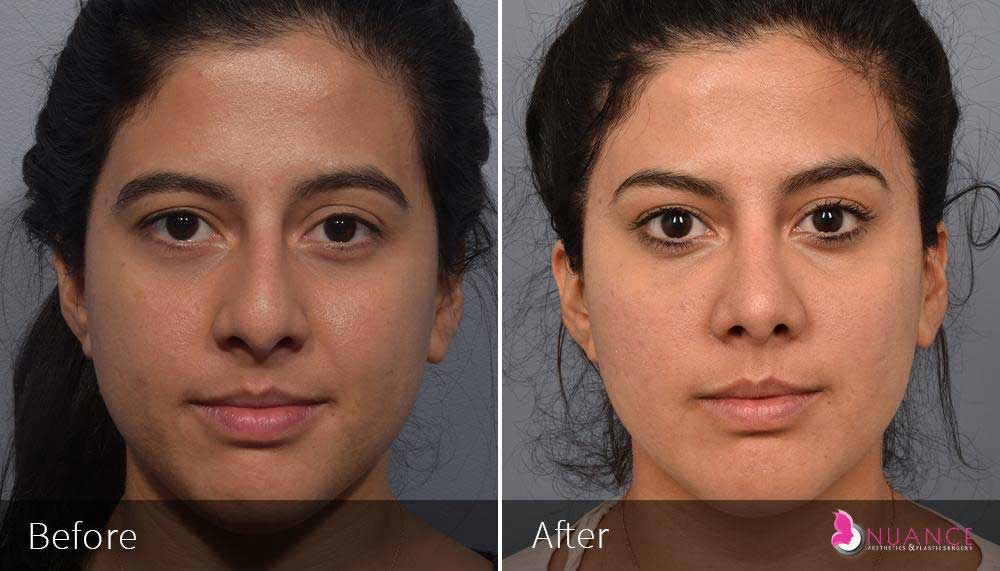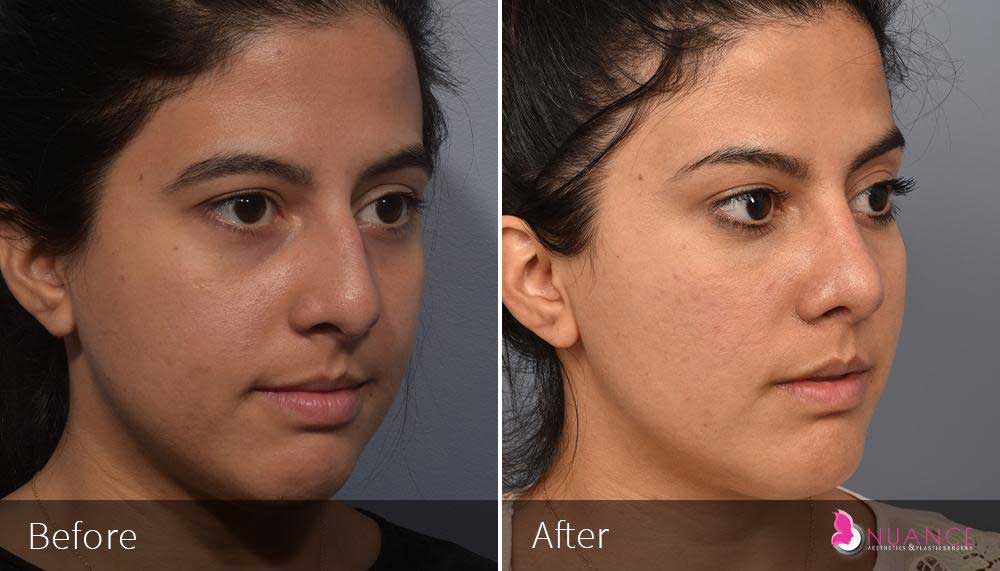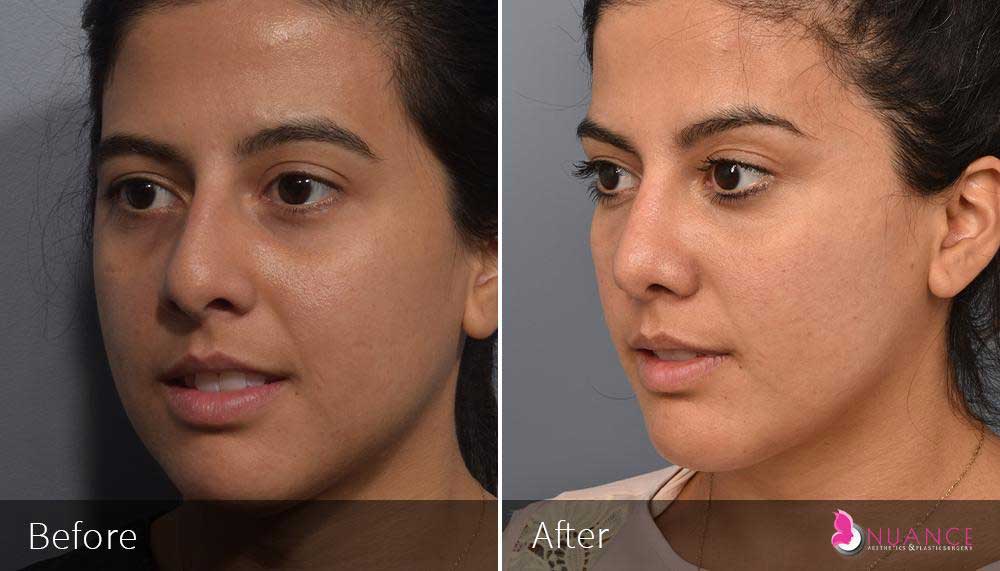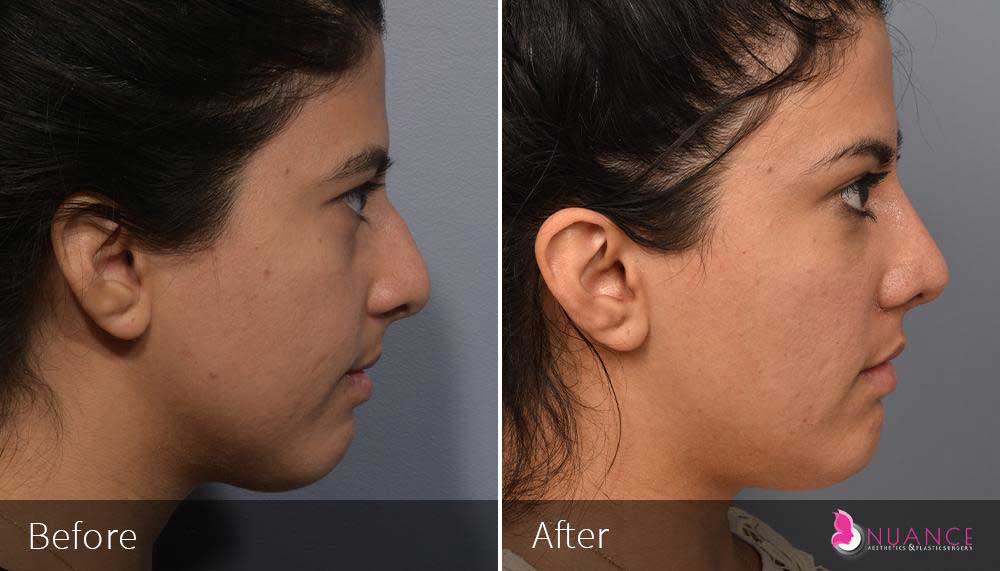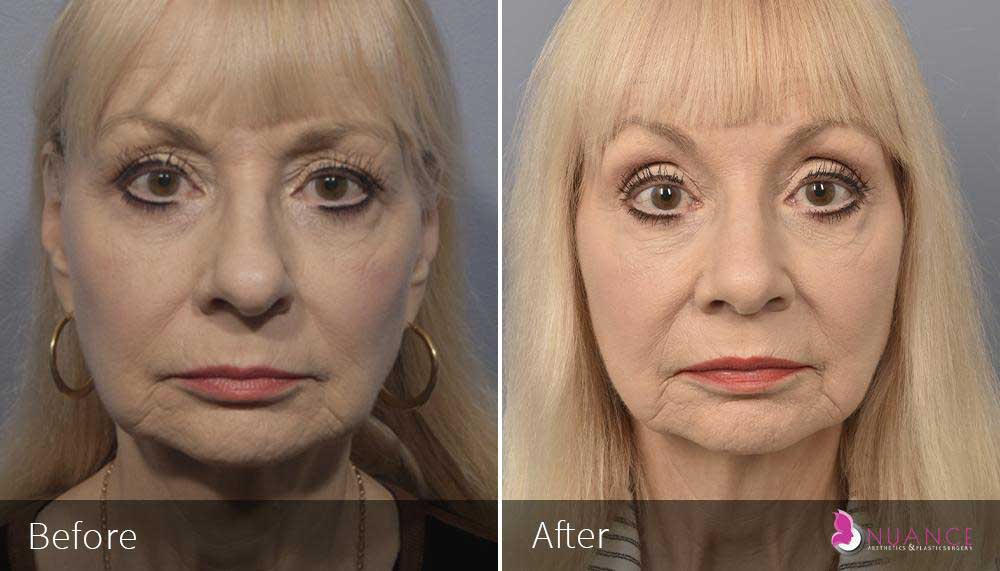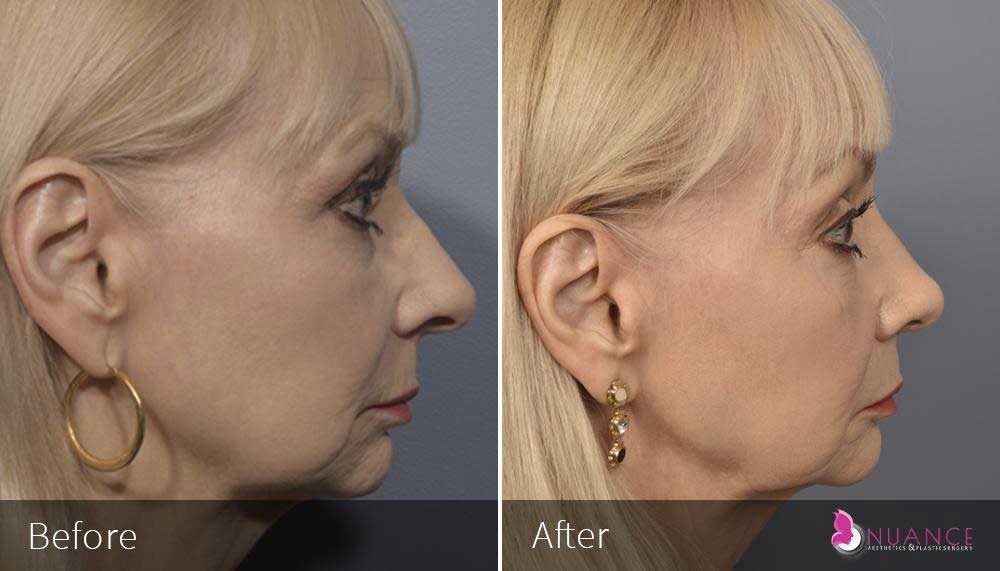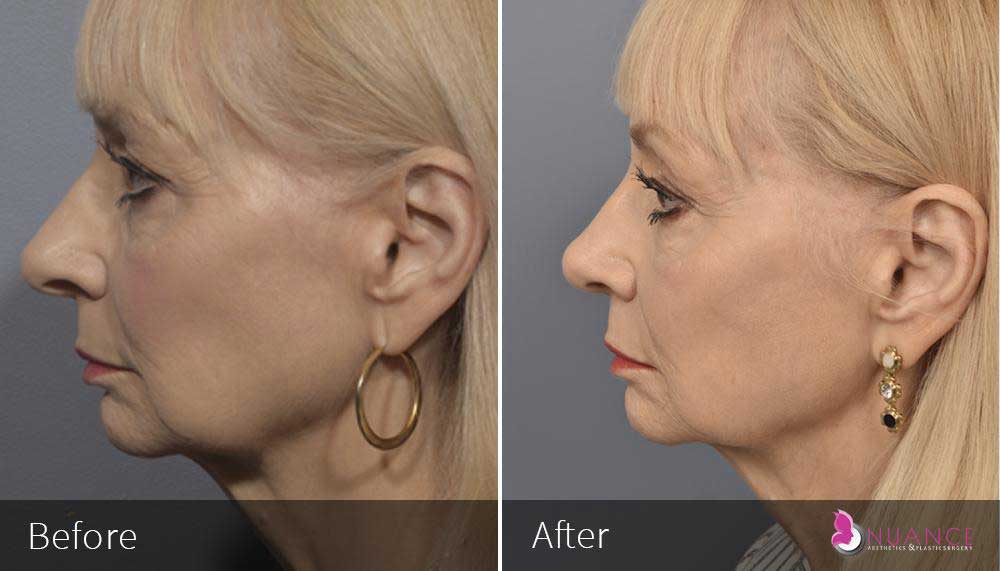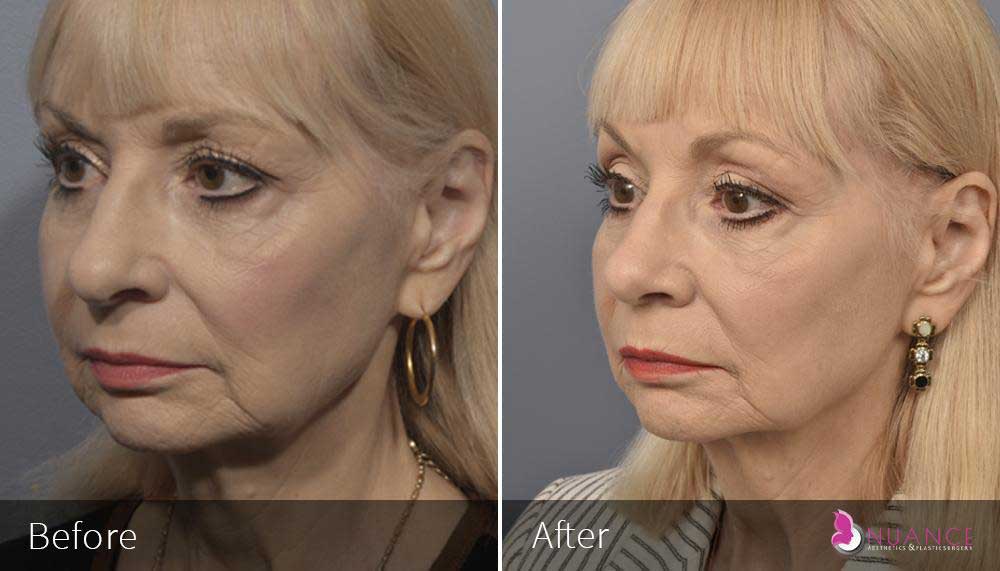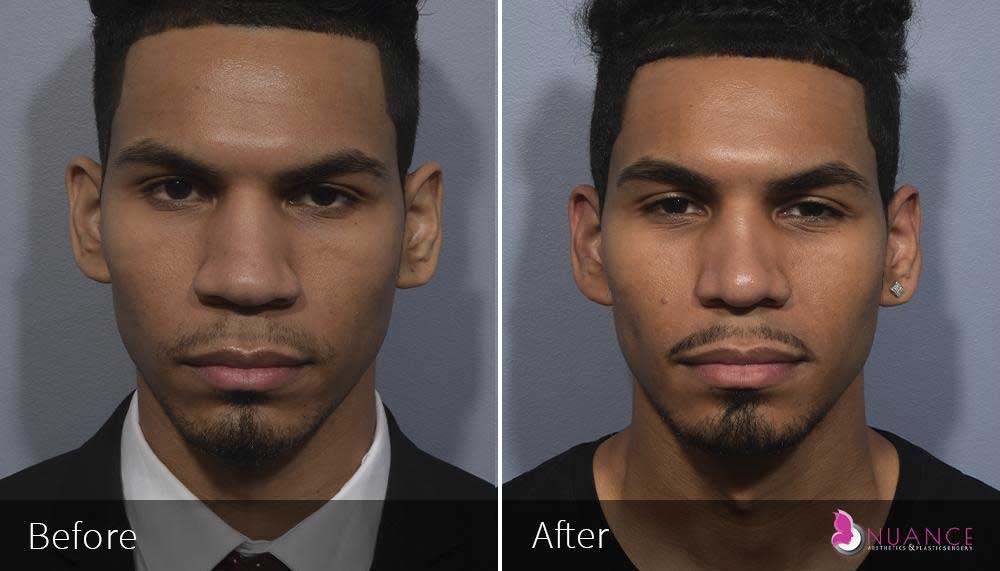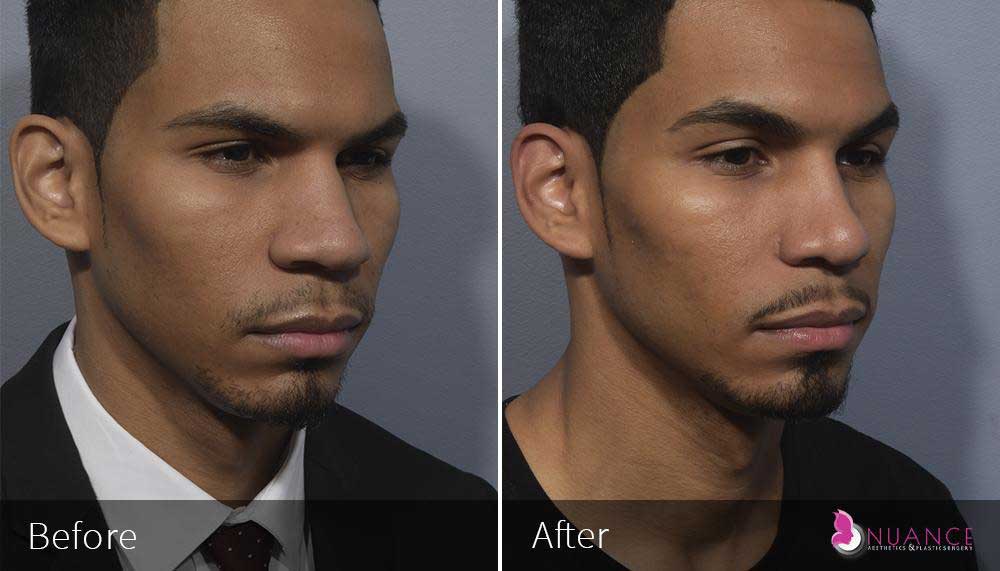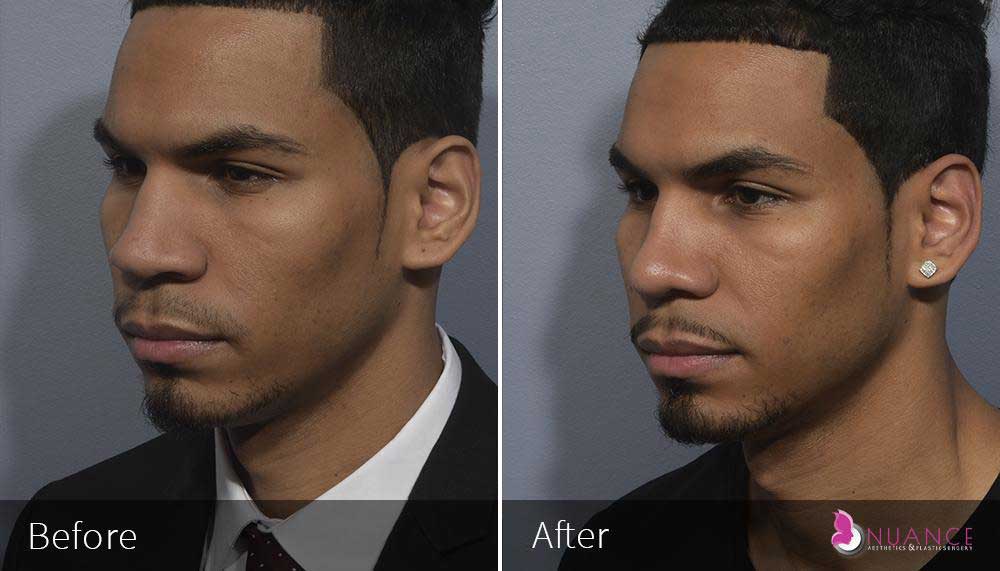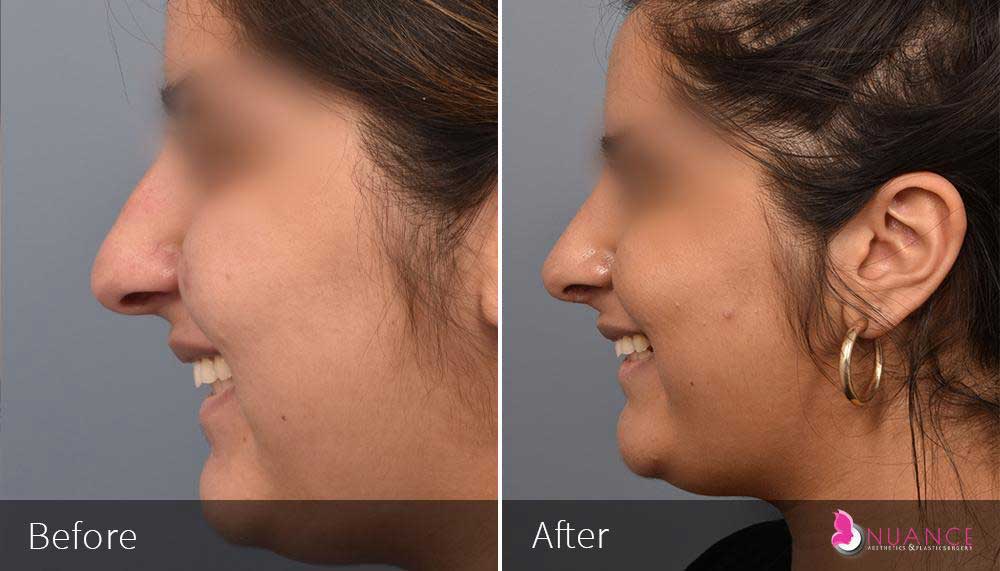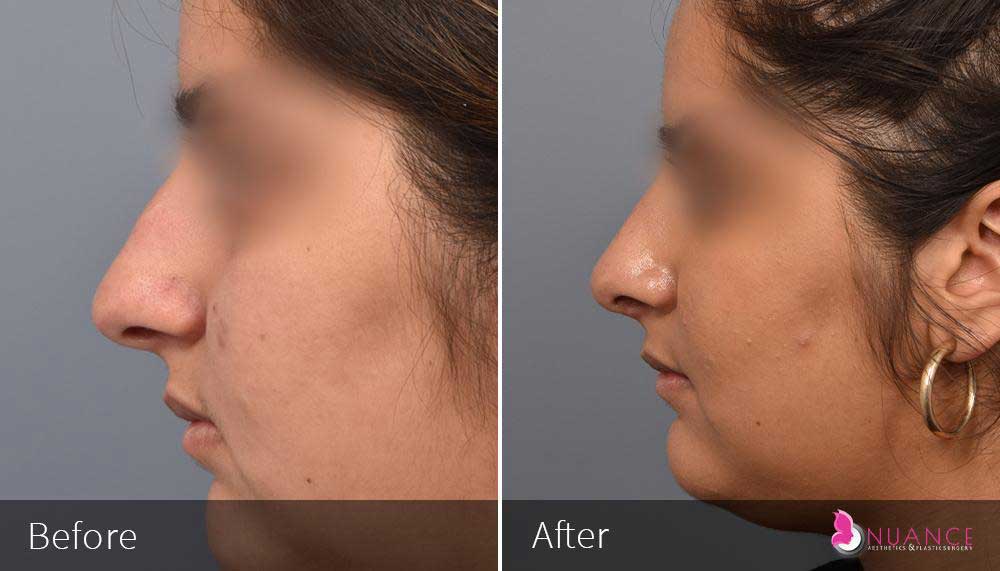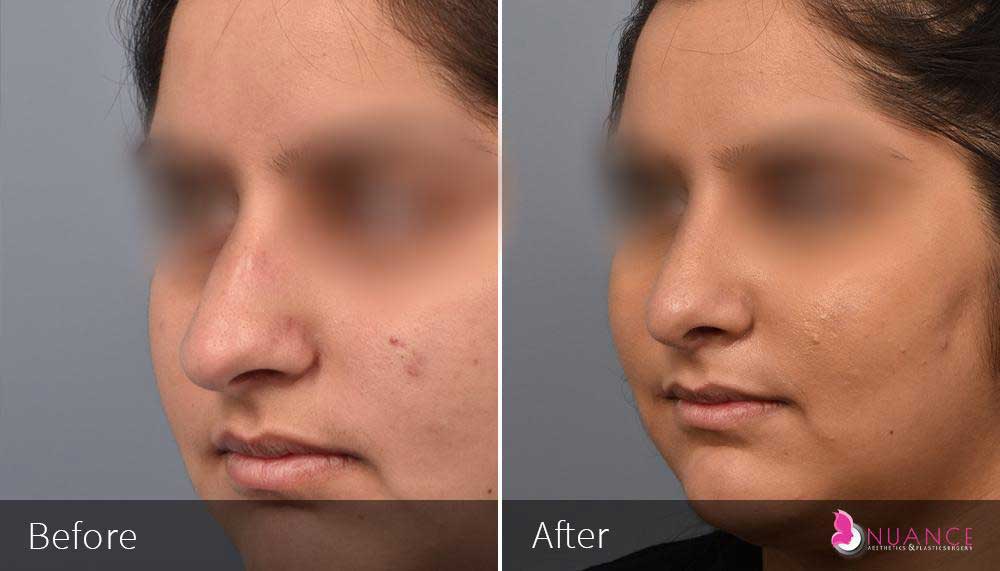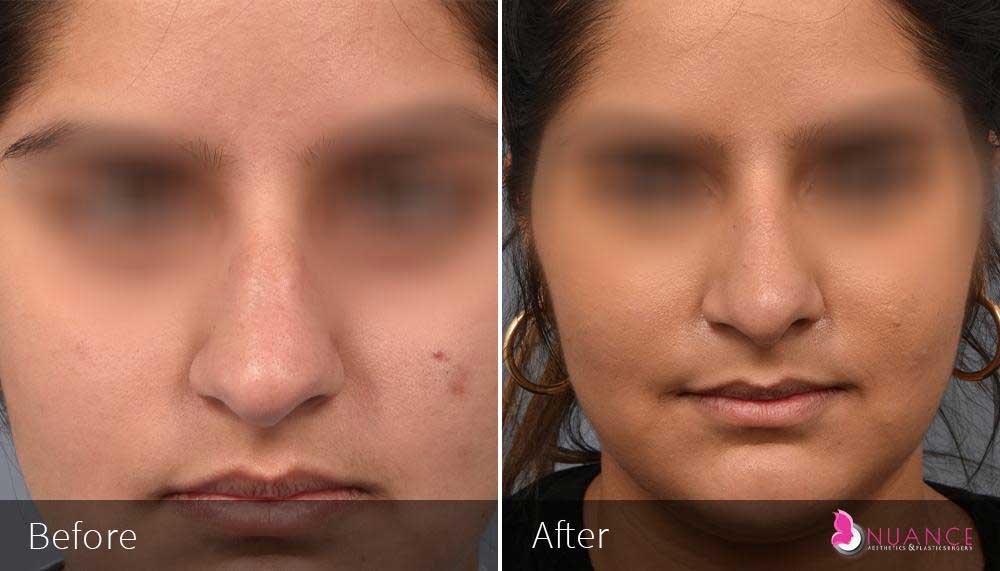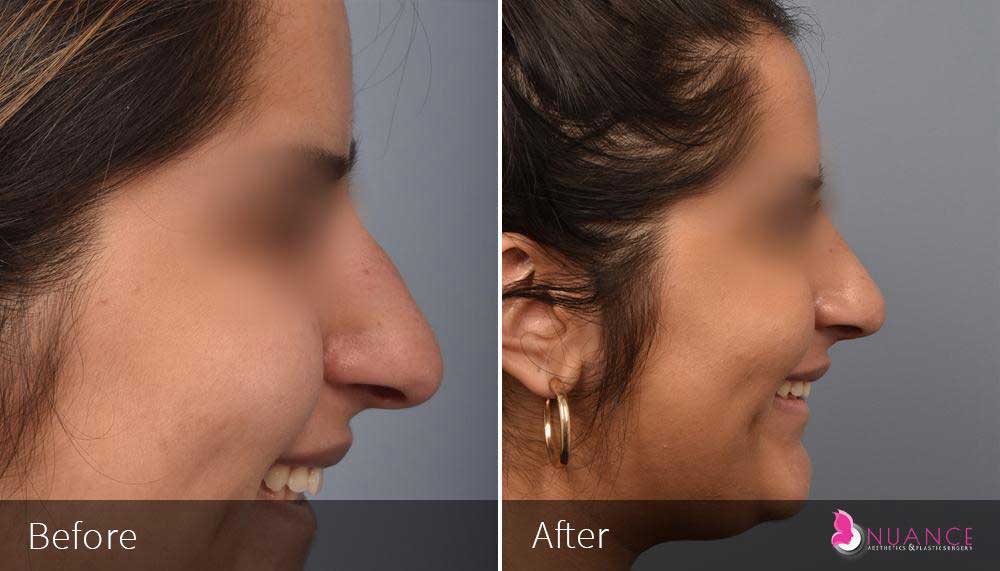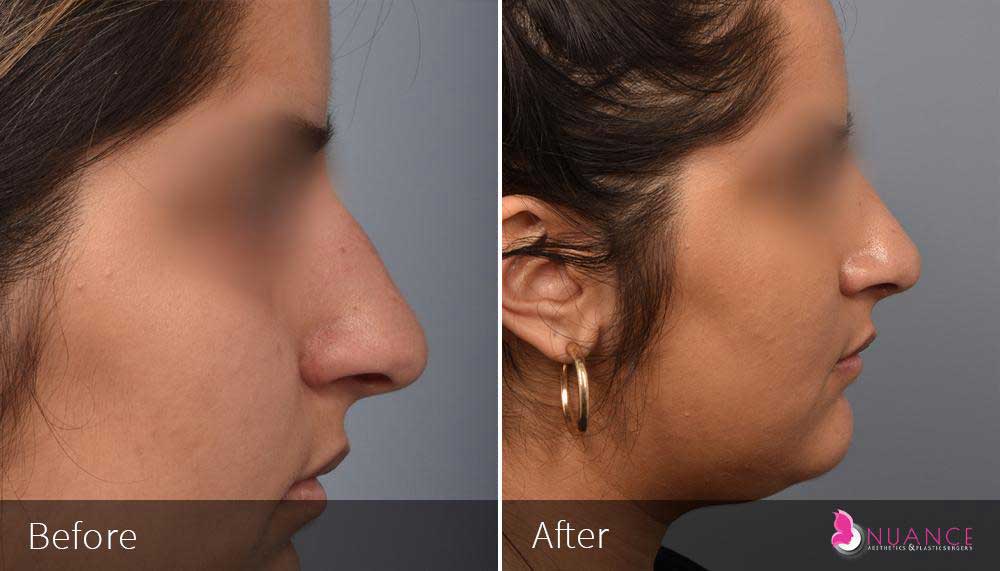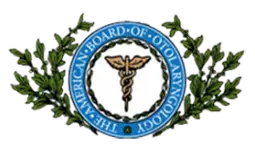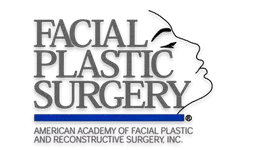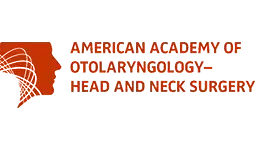
Rhinoplasty, commonly referred to as a nose job or nasal reshaping, is a surgical procedure designed to improve the appearance of the nose to the patient’s unique specifications. Patients seek rhinoplasty in Las Vegas for a number of reasons, including cosmetic and medical purposes.
It is important to note that a skilled surgeon will tailor the rhinoplasty or nose job to fit the exact needs of each individual patient. If you’re searching for a surgeon who performs rhinoplasty in Las Vegas, ensure they are highly experienced and provide personalized procedures.
What can be accomplished with a rhinoplasty?
It is helpful to think of the nose in 2 parts, the bridge and the tip.
Common requests from patients include:
- Straightening the nose, this can be from a crooked bridge and/or tip
- Shaving down a hump on the bridge
- Refining and reshaping the nasal tip
- Making the nose smaller/less wide
- Improving nasal obstruction
Patients with a flat and/or wide (platyrrhine) nasal bridge may require additional height to the nasal dorsum (bridge), in addition to narrowing of the bridge and tip as well as adding structural support to the nose.
One important consideration in the overall success of a nose job or rhinoplasty surgery is the quality of the nasal skin. If the skin is too thin or too thick, additional expertise is required to get the best overall outcome.
Types of rhinoplasty
Rhinoplasty, or cosmetic surgery for the nose, can be categorized as cosmetic, functional, or revision.
Cosmetic Rhinoplasty
Cosmetic rhinoplasty corrects asymmetry or other imbalances in your appearance. Lack of symmetry, such as where the nose points too far left or right, leans, or tilts can understandably cause insecurity in some people.
On the other hand, you may feel that your nose is too large – which is often caused by one aspect being out of proportion. You may have a nasal tip too pinched or wide, large nostrils, or an overly pronounced bump.
Functional Rhinoplasty
Functional rhinoplasty aims to help you breathe easier. Your rhinoplasty may involve correcting a deviated septum, where your nasal cartilage is misaligned instead of in a vertical position. Misalignment may be congenital, or caused by an injury or surgery.
Chronic sinusitis is another reason why patients seek nose surgery. Inflammation of the nasal turbinates, which warm and humidify air before it reaches the lungs, can lead to permanently swollen tissue and restrict airflow. If you decide to include turbinate reduction in your procedure, this excess tissue is removed to restore space.
Revision Rhinoplasty
Unfortunately, choosing an inexperienced surgeon or “budget” procedure can mean you don’t get the results you want. This often means ending up in a worse position than where you started. For this reason, many patients seek revision rhinoplasty to correct a botched surgery and finally get the results they were seeking.
Who is a candidate for rhinoplasty surgery?
First and foremost, a nose job or cosmetic rhinoplasty is an elective surgical procedure. This means that it is not medically necessary and anyone who is in poor overall health should not pursue a rhinoplasty surgery until and unless they are medically fit for surgery.
Next, patient’s pursuing a nose job or rhinoplasty should have a healthy self-image. There is nothing wrong with wanting to improve one’s appearance, but if your appearance or self-image is causing severe anxiety or depression, you may be suffering from Body Dysmorphia and are not a suitable surgical candidate.
Finally, the patient and the surgeon should share a unified vision of what the nose should look like. Sometimes, surgeons want to dictate to patients what will look best without consideration of what the patient wants. Other times, the patients will make requests that are either unrealistic or simply fall outside of what the surgeon knows to be aesthetically pleasing. The surgeon and the patient must achieve a shared vision, this can be facilitated using image morphing software to make changes to the nose prior to a nose job or rhinoplasty in order to reach an agreement about the final surgical outcome.
Rhinoplasty consultation
Your consultation is perhaps just as important as your procedure. During a nose surgery consultation, your goals and treatment options are discussed, whether they concern your appearance or ability to breathe comfortably.
Your consultation will also involve an examination of your face, including photos. These may be altered by software to obtain a preview of your new look, to ensure you will be happy with the outcome.
Rhinoplasty procedure
What is involved in a rhinoplasty procedure?
- Anesthesia: You may have either general anesthetic or sedation, depending on your needs or preference.
- Incision: The first incision may be across the columella separating the nostrils, or inside the nose.
- Reshaping: Here, you may either need the removal of tissue to correct a large nose, or the addition of cartilage grafts for underdeveloped. In some cases, you may even have both. The cartilage grafts generally come from your septum, deep inside your nose, and sometimes your ear.
- Realignment: Next, any deviations in your septum or tissue overgrowth is corrected.
- Closure: Finally, the wound is closed and you are stitched back together.
Rhinoplasty recovery
Day 0 (immediately after surgery) patients rest in the recovery room for approximately 60 minutes. Then they are discharged home. Advances in surgical technique have made nasal packing much less common and the majority of patients go home without packing. In cases where there is a need for light nasal packing, the patients will return on post-operative day 1 to remove the light nasal packing. This is painless. The nose is also suctioned and this can help with breathing.
Day 8 – The patient returns to the office to remove the nasal splint and sutures (if open rhinoplasty is performed). Once the splint and sutures are removed, the nose is cleaned and suctioned.
* Patients typically do not have issues with pain after rhinoplasty.
** Historically, patients have had bruising around the eyes for up to 2 weeks, but with advances in techniques and the use of a medication called tranexamic acid (TXA) many patients develop minimal or no bruising. Patients are usually back at school or work in a week or less.
*** We advise our patients to avoid strenuous exercise for 6 weeks.
The amount of swelling and the duration of the swelling is dependent on the technique (open vs closed), length of surgery and whether it is a primary (less swelling) or revision surgery (more swelling).
In primary rhinoplasty cases you can expect:
*75 to 85% improvement in swelling at 1 month
* 85 to 95% improvement in swelling at 6 months
* 99% improvement at 1 year
Rhinoplasty in Nuance
If you’re looking for the best rhinoplasty surgeon in Las Vegas, Nuance has one of the most skilled doctors in Las Vegas. Dr. Mehdi Sina not only has years of experience and post-graduate fellowship training, but also contributes to his field through clinical research and education.
Regardless of your surgeon, you will also be cared for in one of the best hospitals in Las Vegas, and then have a follow-up appointment at Nuance Aesthetics & Plastic Surgery.
How much does rhinoplasty cost in las vegas?
In Las Vegas, rhinoplasty cost ranges depending on a few factors. The total rhinoplasty cost depends on your surgeon’s skills, experience, and the type of procedure. For example, combining a cosmetic surgery with functional correction will result in a higher price.
For best rhinoplasty results, avoid clinics with affordability as a selling point.
Please contact Nuance Las Vegas for scheduling your consultation and receiving an estimate.

